NOTE: For prior parts in the Hizballah Cavalcade series you can view an archive of it all here.
—
Hizballah al-Abrar: The Latest Hizballah Franchise in Iraq
By Phillip Smyth
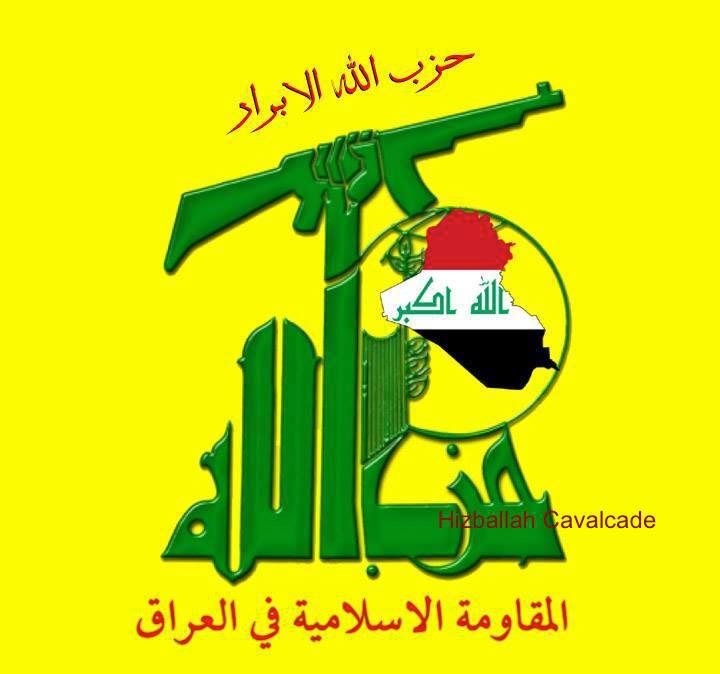
Figure 1: Hizballah al-Abrar
Hizballah al-Abrar (HAA or the Party of God of the Righteous) follows in the footsteps of a long line of new Shia militia organizations which have been announced in Iraq since June 2014. These groups often model their symbolism, organizational structures, and ideological profile on Lebanese Hizballah. Additionally, these groups commonly have strong links and at times have shared commanders with other established Shia militia proxies of Iran.
HAA is no exception, utilizing the official logo of Lebanese Hizballah with the addition of a stylized map of Iraq in the globe section of the symbol. The group, mirroring other Iranian proxy Shia groups in Iraq, Lebanon, and Syria, also refers to itself as “al-Muqawama al-Islamiyya fi al-Iraq” (The Islamic Resistance in Iraq). HAA has done little to hide its connections to Asa’ib Ahl al-Haq (AAH). If anything, HAA actually promotes the links. Furthermore, its connections to other organizations promoting Iran’s Khomeinist ideology have been featured in other photos.
HAA’s secretary general, Sheikh Fadhel al-Khaz’ali, has been prominently featured in the group’s propaganda releases and has been used to show the group’s links to Iran’s Iraqi proxy groups. In one photo, Khaz’ali is shown receiving an award from the Imam Khomeini Relief Foundation. In others, Khaz’ali is shown standing under the AAH banner.

Figure 2: This photo claims to show Sheikh Fadhel al-Khaz’ali recieving an award from the Imam Khomeini Relief Foundation.
Following a social media model which had been replicated by other newer Shia militias in Syria and Iraq, HAA initially published easily created images showing the group’s new symbol. Later, photos claiming to show fighters from the group, a more official looking fighting force, complete with patches, flags, and official statements began to appear after the group’s initial appearance on Facebook in August.
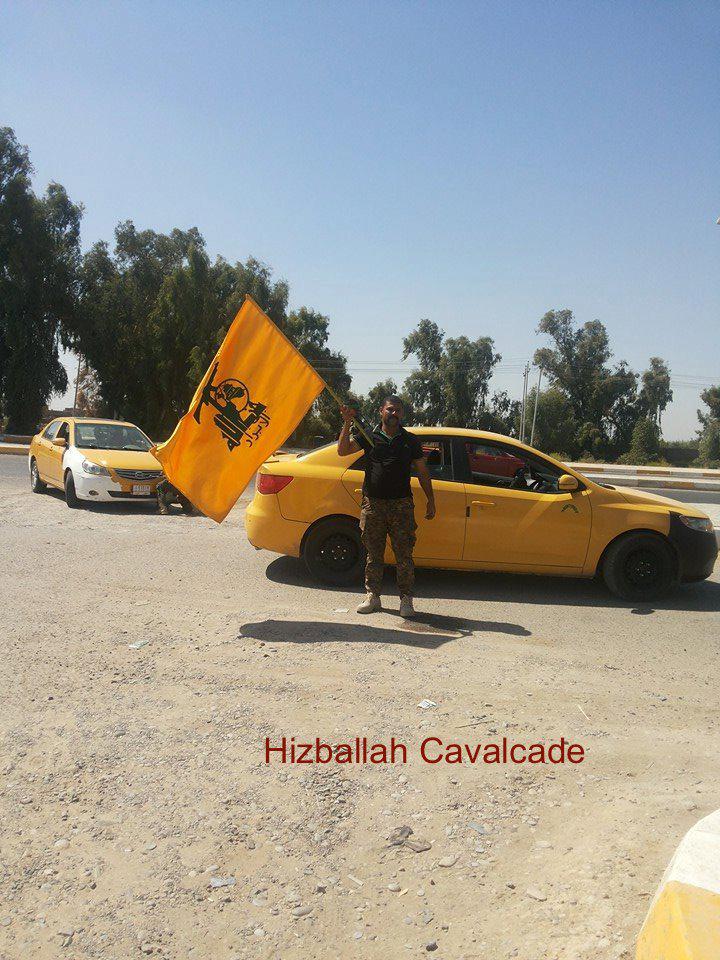
Figure 3: A HAA fighter holding the group’s flag. This picture claimed to show HAA fighters heading to the Battle of Amerli.
In terms of combat deployments, the group has claimed it sent fighters to Amerli, Diyala, Baghdad, and the key battlefront of Jurf al-Sakhr. In a video released on October 28, 2014, HAA combatants waved the group’s flag along with that of Karbala-based Shia militia, Firqat al-‘Abbas al-Qataliya – al-Dafa’ ‘an Muqadisat al-Iraq (The Abbas Fighting Group – Defenders of the Iraqi Holy Sites) in what appeared to be an impromptu celebration commemorating recent victories in Jurf al-Sakhr.
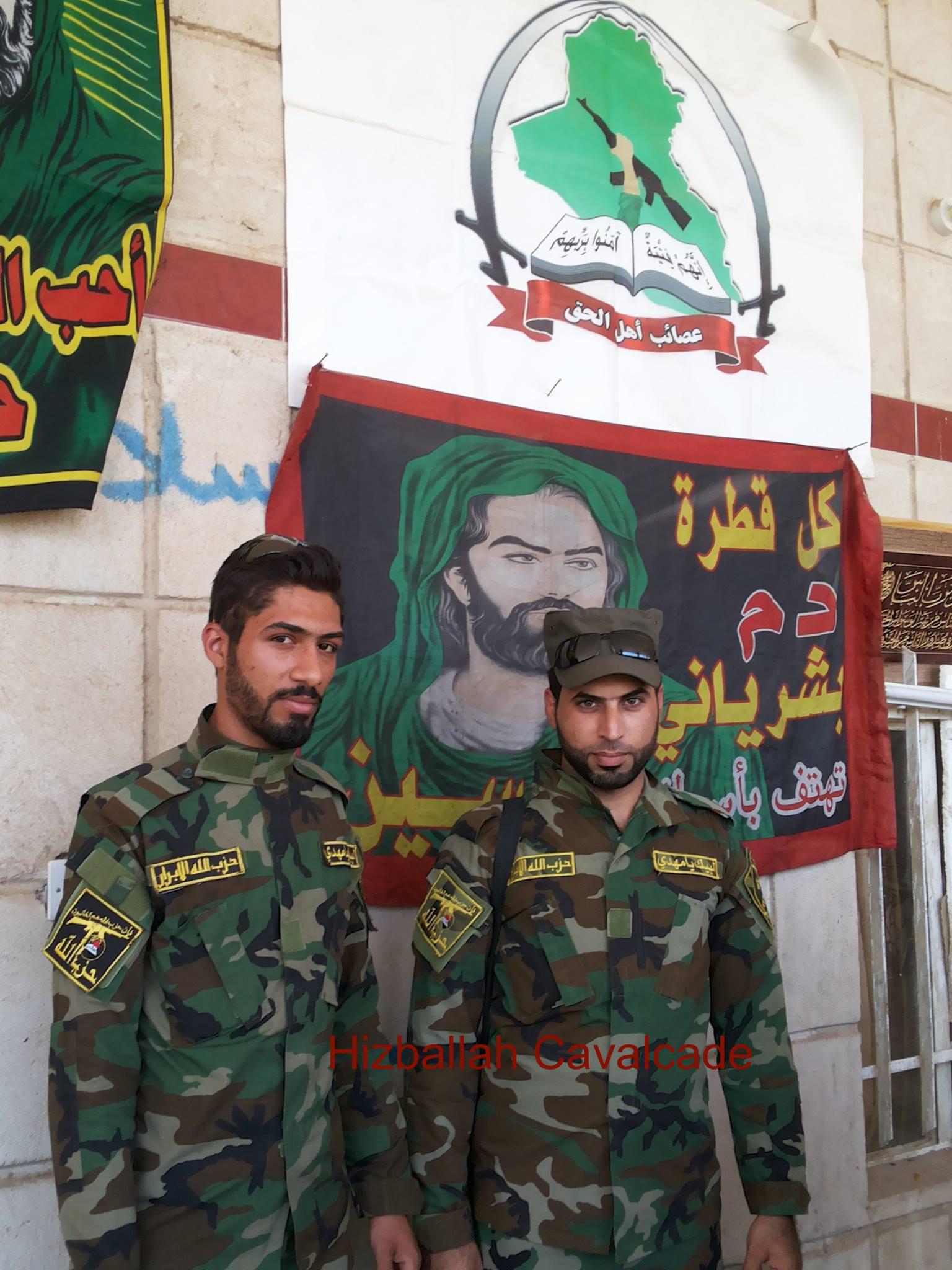
Figure 4: Two HAA fighters, Yasir al-Khazarji and Amir Sa’adi pose together under AAH and Shia religious banners. Note the HAA-specific arm patches.
Despite the fact that HAA has claimed to be positioned across diverse sections of Iraq, it has not stated the size of its force. Furthermore, the group’s quickly paced attempt to appear more professional online may demonstrate that the group will be further developed within Iraq’s Shia militia and political sphere. In fact, Sheikh al-Khaz’ali was pictured in an undated photograph with former Iraqi Prime Minister Nouri al-Maliki and other leaders from Iraq’s internal security forces and army.
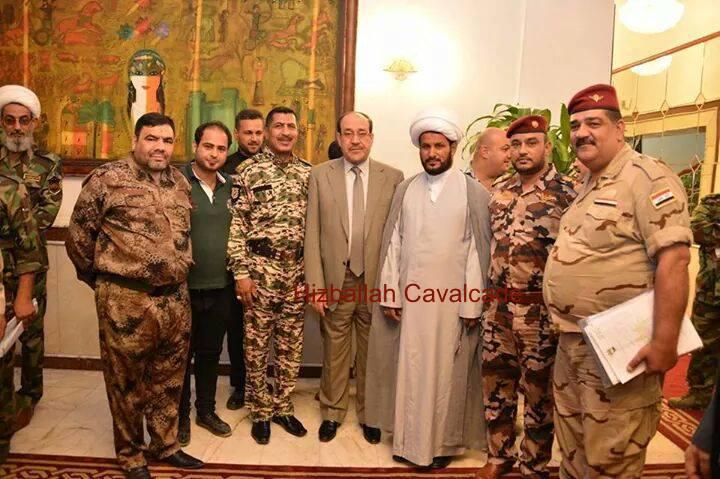
Figure 5(Right): Sheikh Khaz’ali is shown with a stylized Hizballah and Iraqi national flag.
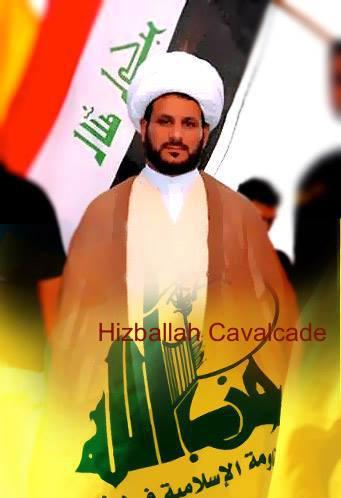
Figure 6 (Left): Sheikh Fadhel al-Khaz’ali poses with former Iraqi Prime Minister Nouri al-Maliki and others.
Thus far, the group has released a number of official statements. Below, a translated version of one statement dealing with “rumors” about ISIS penetrations of Baghdad, gives insight into the group’s worldview, including their anti-U.S. positions and opinions on fighting ISIS.

Figure 7: HAA fighters gather for a photograph.
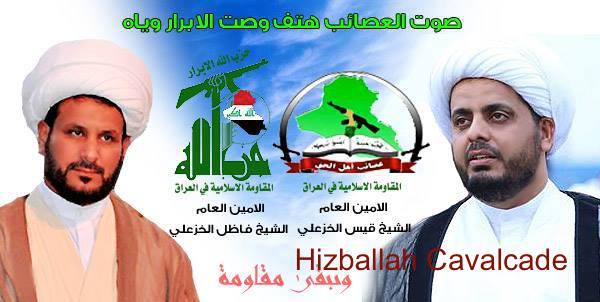
Figure 8: AAH and HAA leaders are pictured together.
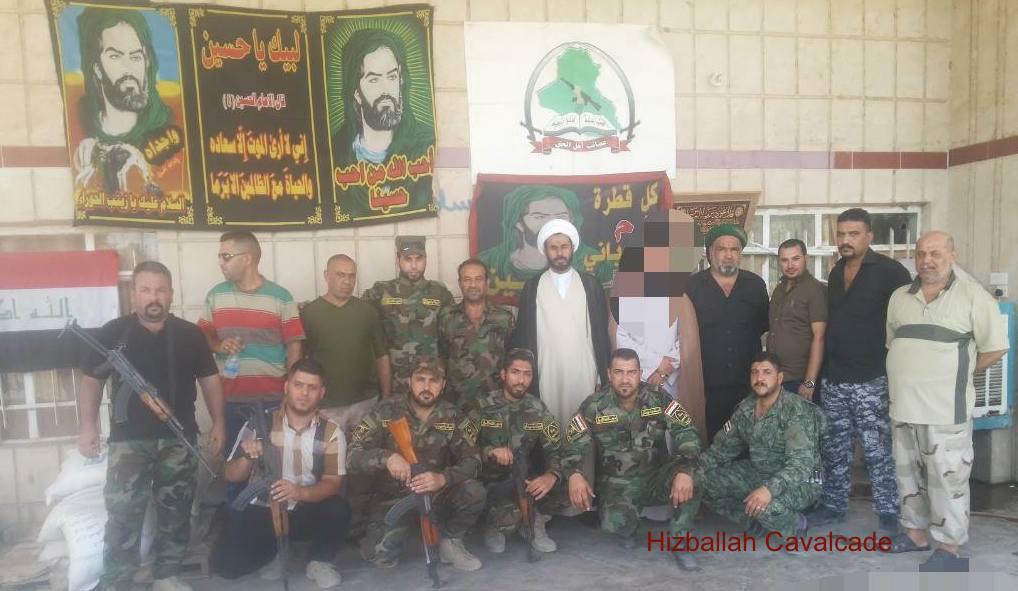
Figure 9: HAA central leadership and combatants pose under Shia religious and an AAH banner.
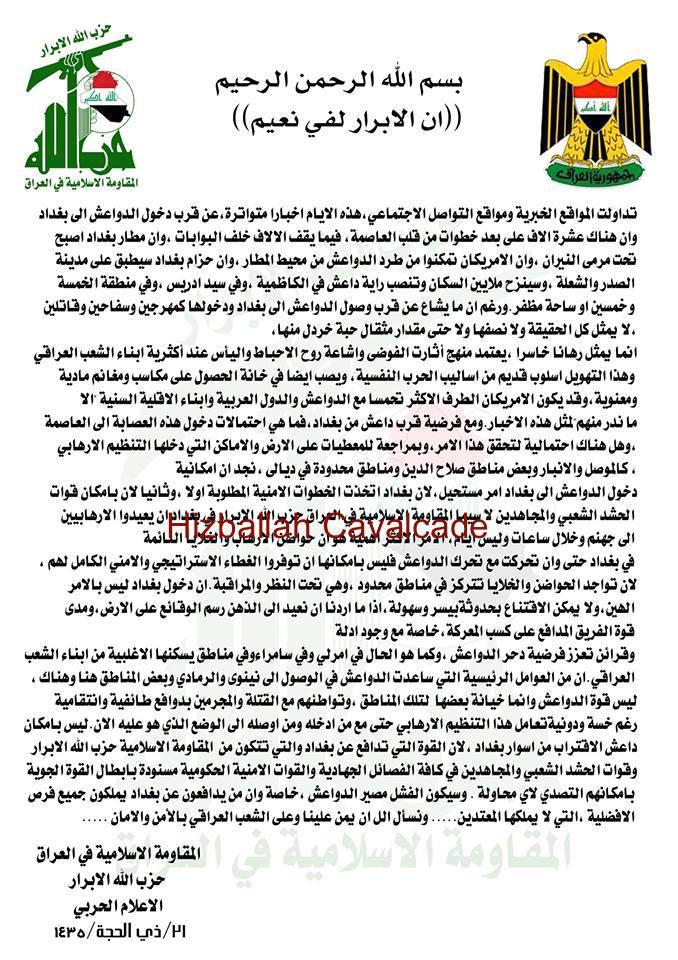
Figure 10: HAA announcement released on social media on October 18, 2014.
Translation of HAA’s October 18, 2014 Announcement*:
There are rumors on social media websites that ISIS is close to entering Baghdad and that there are tens of thousands [of ISIS fighters] steps away from the heart of the capital, while thousands of others are standing behind the gates. Rumors about Baghdad Airport being under fire, that the Americans were able to kick ISIS groups out from the outskirts of the airport, rumors that the belt of Baghdad will close up on the Sadr City and Al-Shu’ala, rumors that millions of residents will become refugees, and that the flag of ISIS will be set up in Khazimiya, in Sayyid Idris [an important Shia shrine south of Najaf] and in the area of Khamsa [a Baghdad neighborhood], Khamsin, or in Muzzafar Square [a central square in Sadr City]. Despite all of these rumors, the clowns, murderers, and killers from ISIS are not close to entering Baghdad. None of them [the rumors] represents a grain of truth.
These [rumors] represent a lost bet that aims to spread chaos, frustration, and misery among the majority of the Iraqi people. This fear mongering is an old method of psychological warfare, it also serves to allow certain material and symbolic games. Regarding the theory of ISIS closing up on Baghdad, the Americans might be the party that is the most excited along with ISIS, Arab countries, and members of the Sunni minority. What are the possibilities this gang will enter the capital and is there a possibility to achieve this?
By reviewing ground data in places where the terrorist organization has entered, such as Mosul, Anbar, some regions of Salah Ad-Din [province], and limited regions of Diyala, we find that it is impossible for ISIS to enter Baghdad, because Baghdad has taken the necessary security steps. Second, because the forces of the popular [militias] and jihadists groups, especially the Islamic Resistance in Iraq Hizballah al-Abrar in Baghdad, can send the terrorists back to hell within hours not days. The most important thing is that those who foster terror and sleeper cells in Baghdad, even if they move along with ISIS’s movement, will not be able to offer full strategic and security coverage for them, because those who foster these cells are based in limited areas which are under surveillance and observation.
Entering Baghdad is not easy and there is no way to be convinced that it will happen quickly and easily. Especially if we want to keep in mind all of the facts on the ground and take into consideration the strength of the defending group, especially since there is proof that crushing ISIS is a likelihood. As is the case in Amerli, Samarra, and areas inhabited by most of the Iraqi people, the main factors which helped ISIS to reach Nineveh [Province] and Ramadi and some regions here and there, is not the strength of ISIS but because of [their sneaky behavior] betrayal. They are betraying these regions by conspiring with murderers and criminals under sectarian and vengeful pretexts. ISIS cannot come close to the walls of Baghdad because the forces which are defending Baghdad and consisting of Hizballah al-Abrar, the forces of the popular movements, and the holy warriors in all jihadist cells, along with governmental and security forces, supported by the heroes of Iraqi Air Force, can confront any attempt to take Baghdad. The fate of ISIS will be failure, especially because the defenders of Baghdad have more privileges than the attackers…we ask God to protect us and the Iraqi people.
* Some sections have been edited so there is better flow in English. Additionally, ISIS is referred to as “Da’ish” in the original statement.
Category: Asa’ib Ahl al-Haq
Hizballah Cavalcade: The Shia Militant Response to Ayatollah Nimr al-Nimr’s Death Sentence
NOTE: For prior parts in the Hizballah Cavalcade series you can view an archive of it all here.
—
The Shia Militant Response to Ayatollah Nimr al-Nimr’s Death Sentence
By Phillip Smyth
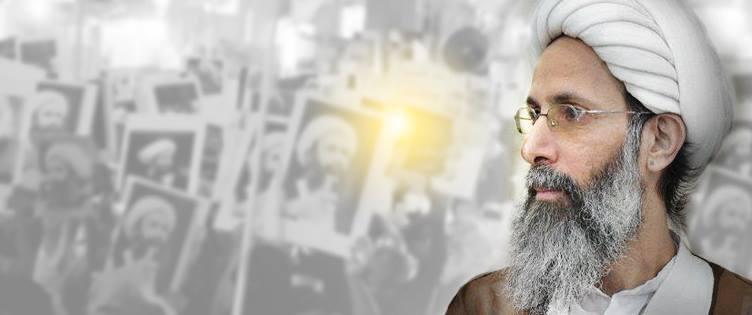
Ayatollah Sheikh Nimr Baqr al-Nimr, an outspoken radical Saudi Arabian Shia cleric, has been the center of controversy and brewing conflict between Shia protesters, militant Shia groups of Saudi Arabia and Bahrain, and their respective Sunni governments. According to a 2012 article by Toby Matthiesen, al-Nimr was, “long a peripheral figure in the local Shia power struggle but now seems to have become the most popular Saudi Shia cleric among local youth.”1 His cause and image is spreading across the Middle East as the latest example of Sunni oppression of Shia in the region and his recent death sentence has become a potent rallying cry for regional Shia militant organizations, particularly those with links to Iran.
Arrested in 2012, Nimr was accused by the Saudi government’s Special Criminal Court of making sectarian statements to cause strife, inviting foreign intervention (shorthand for Iranian influence), and disobeying the king. Following his 2012 arrest, thousands took to the streets and Saudi police shot and killed two protesters.2 In mid-October 2014, Nimr was sentenced to be “crucified”, a process where the sheikh will be beheaded and his body displayed.3
Protests in Saudi began in early 2011 and in part addressed anti-Shia discrimination suffered by the group in the Shia majority area in Saudi Arabia’s oil-rich Eastern Province; primarily zones around the Shia-majority towns and villages near the city of Qatif.4 Following the 2011 Saudi intervention in Bahrain, protests against the Saudi government increased in Bahrain and Saudi Arabia among Shia protesters.5 Following the 2011-2012 protests, links between Bahrain’s and Saudi Arabia’s protest movement spilled over into the more militant circles which actively promoted Nimr’s defiant stance and a hope to combine their fronts against common foes.
Of further interest are Nimr’s own ideological leanings and how they may relate to Shia militant responses. In Frederic Wehrey’s Sectarian Politics in the Gulf, the sheikh is described as a follower of the late Ayatollah Muhammad al-Shirazi.6 Shirazi was one of the founders of a radical Shia political school of thought referred to as the “Shiraziyya.” Shiraziyya clerics have been some of the most influential in the Arab Shia world. Initially al-Shirazi agreed with the Islamic revolutionary ideology of Ayatollah Khomeini, only to split from Khomeini over issues regarding how the new Islamic state (in Iran post 1979 revolution) should be led.7 In one BBC Arabic report, Nimr had been accused by Riyadh of attempting to spread Wilayat al-Faqih.8 Absolute Wilayat al-Faqih is the Khomeinist concept that serves as the basis for the Islamic Republic of Iran. Nevertheless, it was not clarified whether this was the type of Wilayat al-Faqih Nimr was accused of propagating.
Despite the history of strife between Shirazi’s school of thought and that of Ayatollahs Khomeini and Khamenei, al-Nimr appeared to increase public support for Tehran and send other more mixed messages. In 2008, he had also reportedly stated he supported Iran’s nuclear program by saying any attack against it should be met by a response from the Islamic world. That same year, he also said that Saudi Shia may need to call on foreign support (implying Iran) to help press their issues in Saudi Arabia.9 Later in 2009, Nimr reportedly called for secession, stating during a sermon, “Our dignity is more precious than the unity of this land.”10 His statement came as a response to discrimination against Shia in the kingdom and reflected possible repercussions if certain demands made by Shia protesters were not addressed.
Since 2013, in a piecemeal fashion, social media accounts associated with Iranian proxy groups in Iraq have promoted the images and other supportive statements for Ayatollah Nimr al-Nimr.11 While this does not necessitate that Nimr is a true ally or proxy of Tehran, his message and influence is likely seen by Iran as a cause to be promoted in that country’s wider struggle for the leadership of Shia Islam and as a counter to Saudi Arabia.
Nimr’s deep links and strong voice within the Saudi Shia community, particularly among youthful radicals and other more non-violent protestors, has led to Shia militant groups championing his cause from Bahrain and Iraq. Even in Yemen, Shia supporters of Ansar Allah, more commonly known as the Houthis, even launched demonstrations for the jailed cleric.12 Some Bahraini militant groups, which view the struggle of their coreligionists in a geographically close region of Saudi Arabia, as part and parcel to their conflict with the Khalifa monarchy and their Saudi government supporters. Additionally, powerful Iranian proxy groups based in Iraq—which have also maintained anti-Saudi and anti-Bahraini government narratives—have taken to issuing stern threats against Riyadh for his sentence.
The Violent Replies From Saudi Arabia’s and Bahrain’s Militants
Bahraini militant groups demonstrated the most concerted effort in terms of orchestrating violent retorts to Nimr’s jailing and sentence. While other threats and attacks were conducted since the start of 2014, this piece will focus on more recent threats and attacks beginning in the summer of 2014.
Bahrain’s Saraya al-Mukhtar (SaM), a group which once said the Saudi Shia of the Qatif and the Shia of Bahrain constituted one people with common foes, launched the most attacks over the longest period specifically addressing Ayatollah Nimr al-Nimr’s arrest, trial, and death sentence.
Starting in August, SaM attacked an electricity tower in Ar-Rifā near a Bahraini military base. The group filmed the attack and stated it had been a warning related to the imprisonment and trial of Ayatollah Nimr al-Nimr. Around the same time, SaM also began an online countdown for the Nimr verdict and increased their threats against Saudi Arabia. The group also ratcheted up it’s pro-Nimr messaging with the release of numerous images.
This messaging coincided with Saraya al-Mukhtar making its first direct threat against U.S. military personnel in Bahrain on August 11. Through an image posted to Facebook, SaM stated that, “The American cover on al-Saud and Al_Khalifa crimes,,Marines in bahrain will pay the price. [sic]” The message essentially claimed that the U.S. was the real backer for the Khalifa and Saud monarchies. As a result, they bore equal responsibility and could be targeted.

Figure 1: Saraya al-Mukhtar’s anti-American message posted on August 11, 2014.
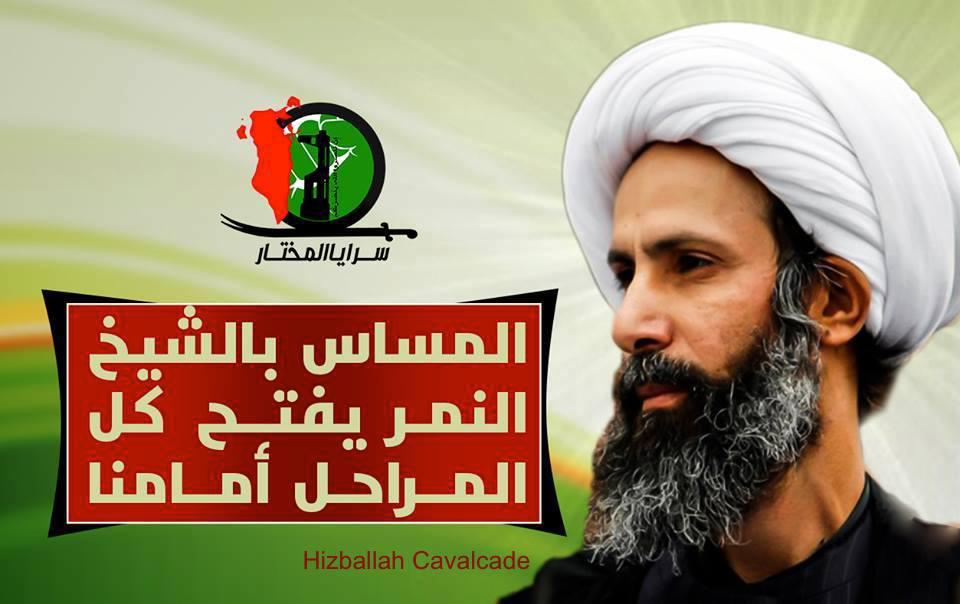
Figure 2: A Saraya al-Mukhtar photo for Ayatollah Nimr al-Nimr posted on August 8, 2014. The poster reads: “Sheikh Nimr[‘s trial and poor treatment] will make us put all options on the table.”

Figure 3: A Saraya al-Mukhtar photo posted on August 10, 2014. This poster reads: [in the red box] “A warning from Saraya al-Mukhtar to the mafia of the Sauds [in white text] Harming Sheikh Nimr will make us put all options [on the table]. Harming the Faqih Nimr means every single Saudi national will enter our country in a coffin.”
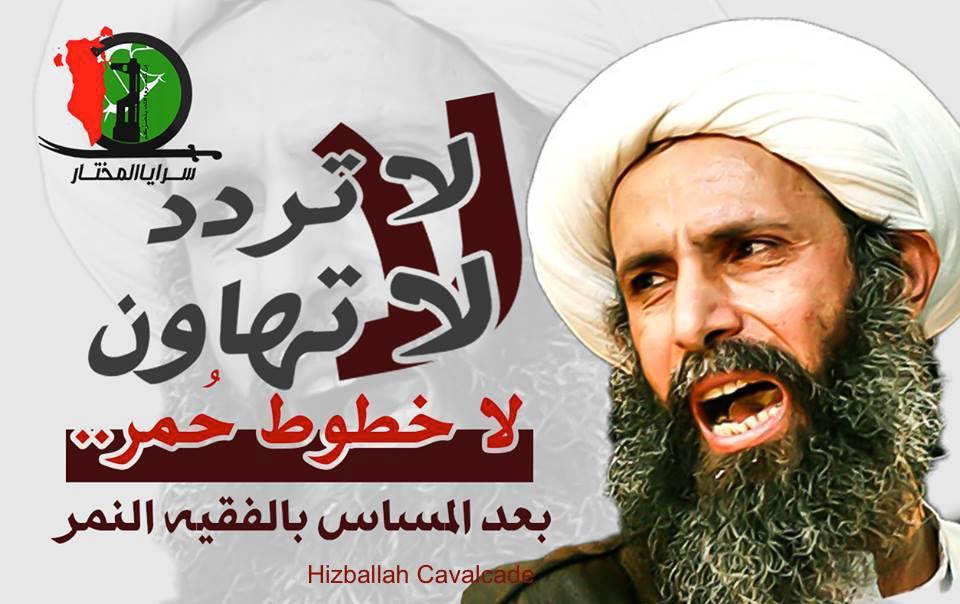
Figure 4: A Saraya al-Mukhtar photo for Ayatollah Nimr al-Nimr posted on August 11, 2014. The poster reads: “Do not hesitate, Do not underestimate, No red lines.. after [the] discrimination [against] the Faqih al-Nimr.”
On September 16, SaM announced it had planted 6 explosive devices in retaliation for al-Nimr’s incarceration. Albeit, these bombs did not target U.S. interests and there was little confirmation as to whether any devices were actually planted.
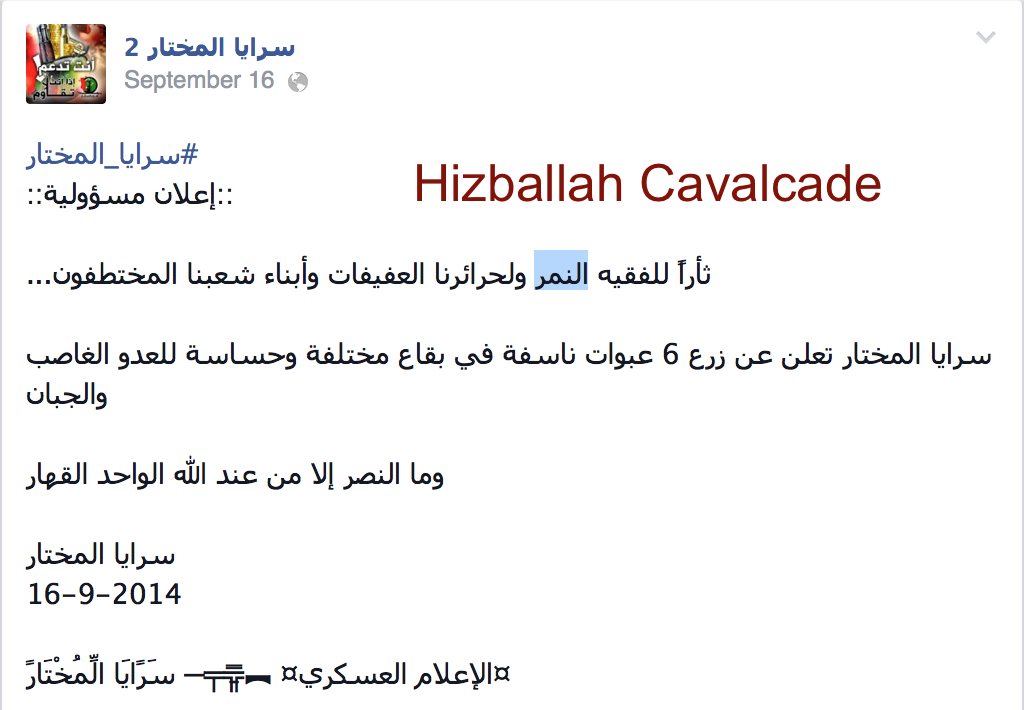
Figure 5: Saraya al-Mukhtar’s September 16 claim to have planted 6 bombs.
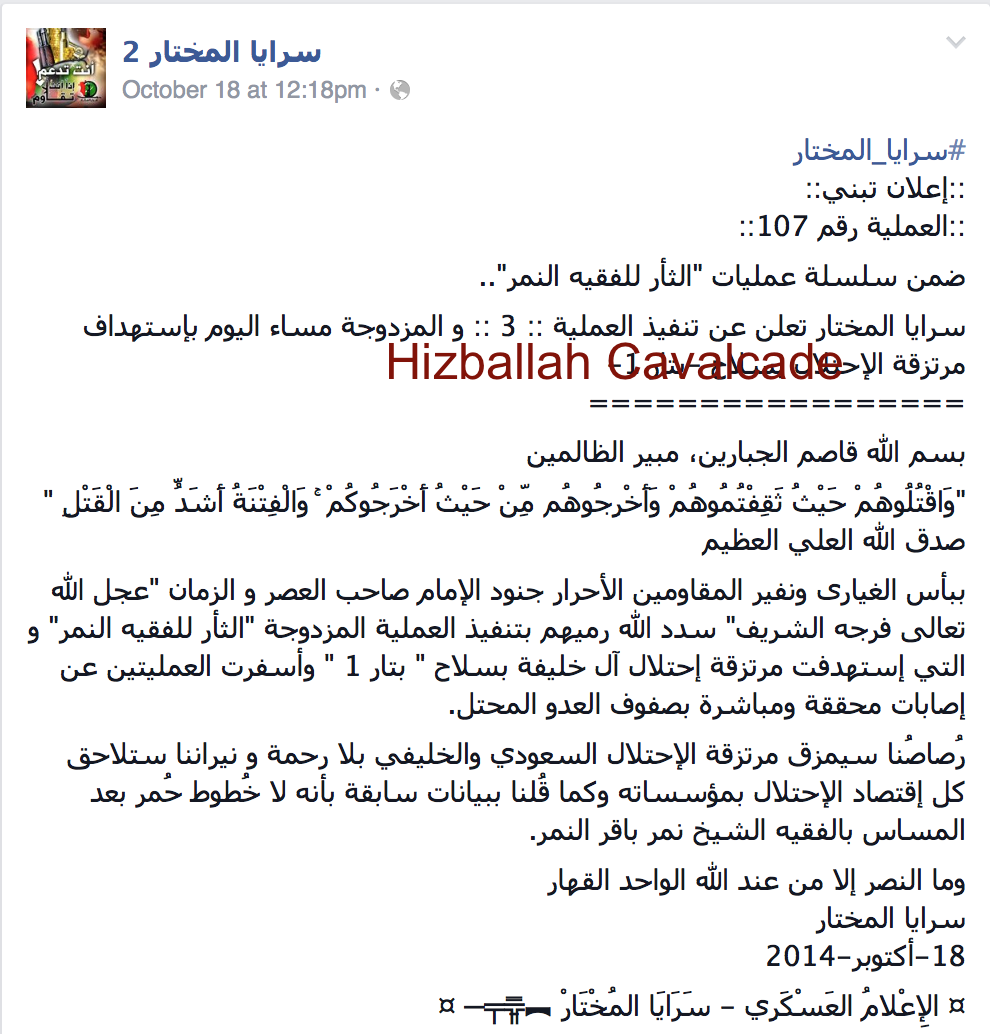
Figure 6: Saraya al-Mukhtar’s claim of 2 attacks on October 18, 2014.
Then on October 9, SaM claimed to conduct an attack in the town of Karana, Bahrain utilizing an improvised firearm. SaM’s claim of responsibility stated they attacked, “herds of mercenaries” (shorthand for Bahraini police and other security entities). On October 15, SaM claimed to have launched attacks in Sanabis and Aker, Bahrain targeting “mercenaries”. In another statement from that day, the group threatened, “The occupying mafia of al-Saud and al-Khalifa [would face]…consequences for the death sentence.” Later, on October 18, SaM claimed two attacks, referring to them as “Revenge of the Faqih [an expert in Islamic jurisprudence] Nimr.” SaM’s statement declared that it had injured “ranks of the enemy occupier.”
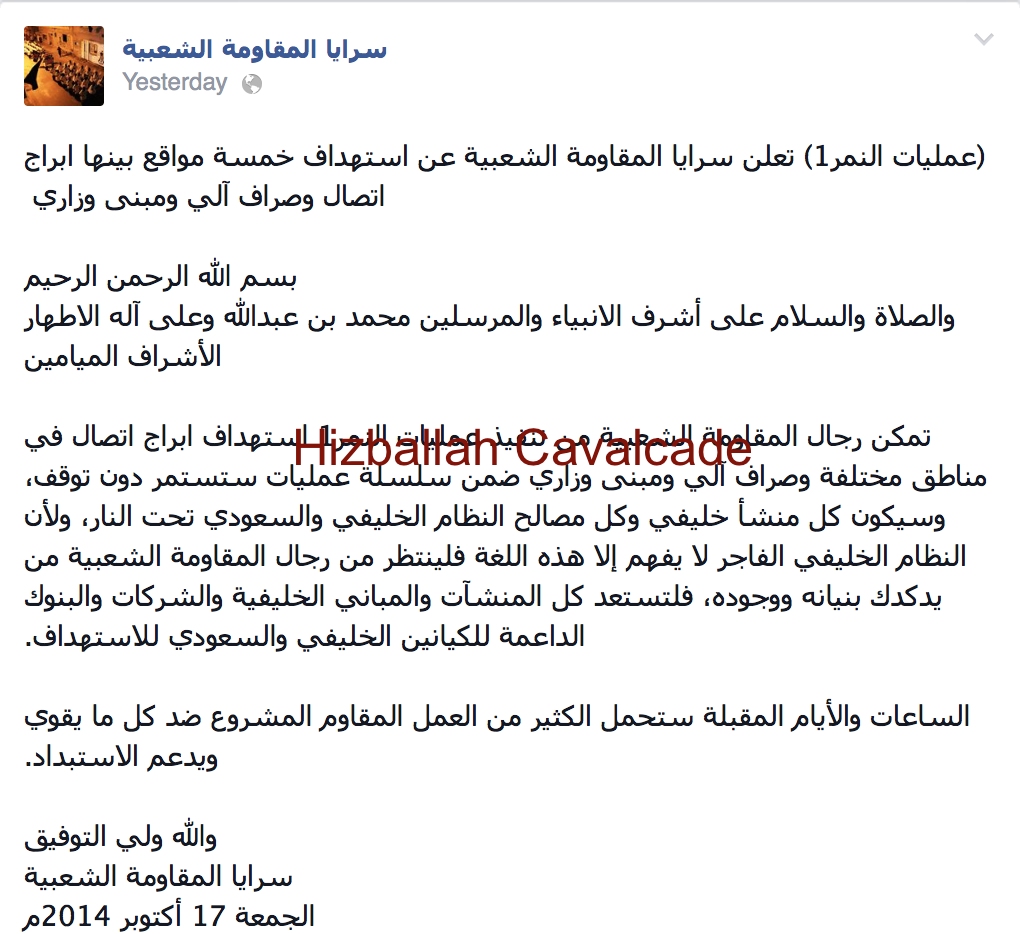
Figure 7: SMS’s claim of attack in honor of Sheikh Nimr.
Bahraini militant group, Saraya
Hizballah Cavalcade: Singing Hizballah’s Tune in Manama: Why Are Bahrain’s Militants Using the Music of Iran’s Proxies?
NOTE: For prior parts in the Hizballah Cavalcade series you can view an archive of it all here.
–
Singing Hizballah’s Tune in Manama: Why Are Bahrain’s Militants Using the Music of Iran’s Proxies?
By Phillip Smyth

Figure 1: A screenshot of a Hizballah musical band performing at the 2013 “Resistance and Liberation Festival”
Bahraini officials have repeatedly accused anti-government militants and protesters in the country of being supplied, trained, and supported by Iran and its numerous regional proxies. Still, the government of Bahrain has done little to bolster their claims of deep and intrinsic links between Bahraini militants and Tehran. Along with official Iranian denials, the issue of Iran-Bahraini militant links is still quite hazy. Nonetheless, this does not mean that within the material released by Bahraini militant organizations that there are not hints of some level of Iranian influence. One of the more intriguing pieces pointing to influence from Iranian-backed organizations comes from the utilization of specific types of music in the many propaganda videos released by Bahraini militants, their sympathizers, and amplifiers.
Numerous instances of Bahraini militants producing propaganda videos with different varieties of music created and utilized by Iranian-backed proxies could indicate a connection with Iran’s proxies. Nevertheless, this type of overlap should not be viewed as a “smoking gun” affirming Iranian involvement. However, it does assist in piecing together direct and indirect influences.
The pieces of music in question were originally developed and used by Iranian proxy organizations, particularly Lebanese Hizballah, Asa’ib Ahl al-Haq (AAH), and Kata’ib Hizballah. In fact, some of the songs that have been promoted fit a long standing media strategy employed by the aforementioned groups and Iran when manufacturing narratives and perceptions for themselves and other armed groups.
The use of music as a transferable propaganda medium follows a very formulaic strategy used by Iran and its “Islamic Resistance” proxy organizations for many years. Often, songs produced for one group are repackaged for newer organizations in other geographic locations. The songs are then altered in a way to make them appeal to the populations and target audience where the new group is located.
Possible Reasons for Using Specific Songs
Why would Bahraini militant groups utilize Hizballah and its Iraqi clones’ music and with such frequency? Some possible answers include:
- Direct Iranian influence or assistance provided to the developing militant groups.
- Video editing/production was offered to Bahraini militants by Iran and/or its proxies as a means to influence and shape militant organizations and to encourage the adoption of a more bellicose strategy to the broader (and more peaceful) protester audience.
- Bahraini militants sympathize with Iranian-proxy groups, their exploits, and with the general concept of “Al-Muqawama al-Islamiyya” (“The Islamic Resistance”). The hope to be as successful, feared, and/or respected as those organizations has led them to adopt the same varieties of music.
- Thumbing their nose at the government: With the government of Bahrain accusing protesters and militants of being Iranian proxies, militant groups may use the material as a way to subtly frighten or encourage speculation among Bahraini government and other observers.
- Narrative Goals: One song by Lebanese Hizballah’s Ali al-Attar called “Wa’ad al-Asra” or “The Prisoner’s Promise” was written to celebrate the release of prisoners Hizballah sought to free during the 2006 Hizballah-Israel War. While the song makes clear references to Lebanese Hizballah and themes related to the 2006 war, the same song was employed by some Bahraini protesters (as background music for their uploaded clips) when they protested the government’s detention of key protest-leaders.
Auto-Tuning the Revolution: Examples of the Musical Overlap
In March 2014, a music video which was claimed to have been produced by “Saraya al-Bahrainiyya al-Muqawama” or the Bahraini Resistance Brigades, (which is likely another name used by The February 14 Youth Coalition’s Saraya al-Muqawama al-Sha’biya [Popular Resistance Brigades]) was posted by the popular Revolution Bahrain’s YouTube Channel. The video featured a montage of edited clips, which purported to show Bahraini militants engaged in training. The music video also included a number of videos of bombings orchestrated by militant Bahraini organizations.
Yet, the music used was strikingly familiar in the circles of Iranian-backed Shi’a Islamist groups. In fact, Iranian-backed Iraqi group, Asa’ib Ahl al-Haq had released the exact tune back in 2011 to commemorate attacks the group orchestrated against U.S. targets to demonstrate solidarity with Bahrain’s protesters. Later in 2011, when fellow Iranian proxy Kata’ib Hizballah released footage of attacks it had also launched in solidarity with Bahraini protesters, it too used the same song.
However, the song was neither originally Bahraini nor Iraqi, instead its origins were rooted father to the west, in Lebanon. The original song, “Risalat al-Thuwar” (“Message of the Rebels”), was performed by one of Lebanese Hizballah’s official bands, Firqat al-Fajr (The Dawn Band), following the 2006 Hizballah-Israel War. It first appeared on the band’s 2007 “Lahan al-Turab” or “Melody of the Soil” album. Still, the rendition dealing with Bahrain was not the only version of the song. Asa’ib Ahl al-Haq had their own Iraq/Grand Ayatollah Muhammad Muhammad Sadiq Sadr (as opposed to Sayyid Hassan Nasrallah) themed “Risalat Thuwar” produced in 2011.
“Risalat al-Thuwar” is not the only Hizballah song which has been adopted and rebranded by Bahraini militants and their amplifiers. Another song used by Bahraini militants also comes from Firqat al-Fajr. The song, “Ya Wa’ad Allah” (“O Promise of God”) can be found on the group’s 2008 album, “Sharit Wa’ad Allah” (“Take the Promise of God”). The song has been released in different formats, with more recent music video varieties showcasing the assassinated Hizballah terror-mastermind Imad Mughniyeh. The album also included an instrumental version of the song. Both versions have been prominent features on productions done by Hizballah’s Al-Manar TV network.
In Bahrain, “Ya Wa’ad Allah” was used as background for clips released to the popular (particularly with militant groups) Revolution Bahrain’s YouTube account. One of these videos included the firebombing of an armored car used by Bahraini government forces.
It is not just the polished music video-quality material finding its way into Bahraini militant propaganda productions. Bahraini militant group Saraya al-Mukhtar released a video of their April 2014 targeting of Bahraini police with an improvised explosive device. Another bomb attack in Bani Jamra also utilized the same background music.
The musical selection in the background matched with instrumentals used by Iraq’s Asa’ib Ahl al-Haq. This music was first featured on the AAH-affiliated Al-Ahad TV in the late summer/fall of 2013 to commemorate Asa’ib Ahl al-Haq members killed fighting in Syria. Further pointing to some level of Iranian or Iranian proxy influence, is highly unlikely that this particular musical element could find its way into so many pieces of released footage. This may indicate some Bahraini militant footage being sent abroad (possibly to Iraq) where the footage is re-edited and put back together for a later introduction.
Another similar instrumental used by Bahraini militants with Saraya al-Mukhtar and Saraya al-Ashtar was also the same exact tune utilized in a number of Kata’ib Hizballah video releases (see: 00.17-00.40 on “Kata’ib Hizballah Anti-America Video”).
The use of the last two instrumentals create further questions. Why would these groups, which have resorted to using a variety of improvised weapons, and exist under increasing heavy security crackdowns, spend the time to find, edit, and utilize background instrumentals which already have obscure points of origin. Why pick these two exact instrumentals, which have only been found in the repertoire of Asa’ib Ahl al-Haq and Kata’ib Hizballah? Other Bahraini protest organizations have utilized a variety of different musical accompaniments. Thus, the use of these particular musical pieces seem out of place when compared to the rest of what has been released.
Whatever the reasons, closely assessing the propaganda published by these organizations may provide insight into rather opaque organizations. While assessing the musical selections may appear to be a tangential escapade, AAH, Kata’ib Hizballah, and Lebanese Hizballah have all demonstrated their strategy of using this material as another method to push the narrative of the “Islamic Resistance.”
Hizballah Cavalcade: Asa’ib al-Muqawama al-Bahrainia: An Emerging Militant Group in Bahrain?
NOTE: For prior parts in the Hizballah Cavalcade series you can view an archive of it all here.
—
Asa’ib al-Muqawama al-Bahrainia: An Emerging Militant Group in Bahrain?
By Phillip Smyth

Figure 1: Asa’ib al-Muqawama al-Bahrainia’s logo.
Asa’ib al-Muqawama al-Bahrainia (The League of Bahraini Resistance or AMB) was first established and marketed as an independent militant organization on February 22, 2014. The group’s founding announcement claimed that the time had become ripe for armed opposition against Bahrain’s ruling monarchy due to the government’s actions. As with other Bahraini militant groups, little is known about AMB’s manpower or armed capabilities.
Regardless, unlike other Bahraini militant organizations, AMB’s founding announcement has found its way onto many different online venues catering to a wide range of readers.[1]
AMB’s statements appear online in bursts. February 22 and February 28, 2014 have been the two dates this organization has placed a series of announcements in public. This pattern is reminiscent of another Bahraini organization, a proto-militant group which went by a similar name, Asa’ib al-Muqawama (The Resistance League). Using Twitter, Asa’ib al-Muqawama released 33 announcements (in both Arabic and English) between April 21 and 22, 2012. Asa’ib al-Muqawama’s threats centered on Bahrain’s controversial Formula One race. One of these statements claimed responsibility for planting three homemade bombs at the race location. At time, there were also instances of Molotov cocktails being thrown at some (from Team India) affiliated with the race.[2] Additionally, on April 9, 2012, seven Bahraini police were wounded due to an improvised bomb planted in the town of Akr.[3] Albeit, neither of these attacks were linked to Asa’ib al-Muqawama.
After their last tweet on April 22, 2012, Asa’ib al-Muqawama went quiet. This is similar to how AMB went silent after their last February 28, 2014 statement. There is a possibility of a link between AMB and Asa’ib al-Muqawama, considering the groups espouse the same militarism, utilized a similar name, and have released announcements in bursts over two-day periods. In fact, AMB’s official Twitter account also describes itself as “Asa’ib al-Muqawama.” It is possible that AMB developed out of the original Asa’ib al-Muqawama. However, beyond these assumptions, there is little substantiating open-source information to assist in confirming any links.
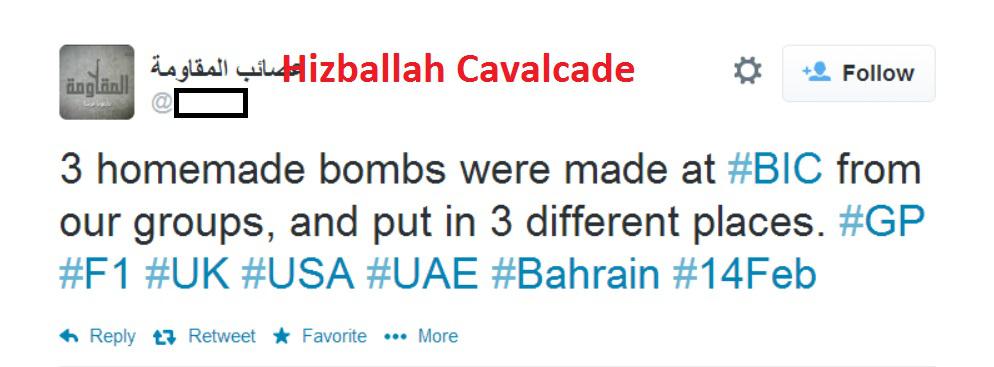
Figure 2: Asa’ib al-Muqawama’s English language Tweet-announcement, declaring they had planted 3 bombs at the Bahrain F1 race.
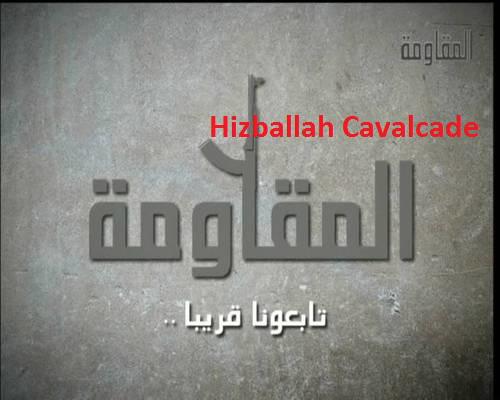
Figure 3: Asa’ib Muqawama’s logo.

Figure 4: AMB’s first announcement.
On February 28, 2014 AMB announced the launch of their, “Fist of Righteousness” operation to avenge the death of Ja’afar al-Derazi. Derazi, whose burial occurred the day of the announcement, was a 22 year old anti-government activist. According to opposition and pro-Iran sources, Derazi died due to torture and other forms of maltreatment when he was detained within a government jail cell.[4] In revenge for Derazi’s death, on April 11, 2014, Saraya al-Mukhtar claimed responsibility for an attack targeting Bahraini police. Nevertheless, AMB has not yet claimed any other attacks as part of their “Fist of Righteousness” campaign.
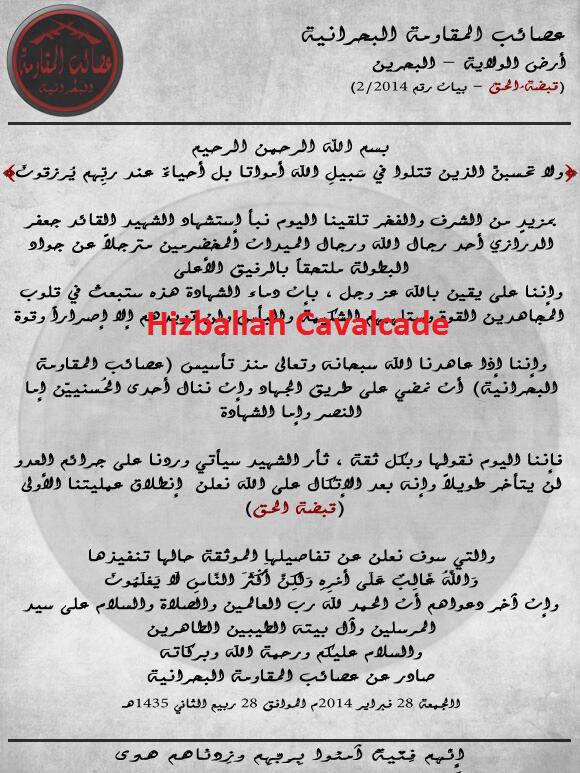
Figure 5: AMB’s second announcement from February 28, 2014.
AMB Joins YouTube
AMB’s official YouTube account claimed to release a video introducing the group on February 21, 2014. However, the first publicly accessible copy of the video was uploaded and released on February 22, 2014. In the video, supposed AMB members are shown marching in formation, extending their arms in a Roman salute. Demonstrating their potential roots as militant offshoots of the larger Bahraini protest movement, young balaclava wearing men hold tires in one of their displays. Tires are a regular feature in some protests; often laid across stretches of road, coated in gasoline, and lit on fire.
Furthering religious themes was also a feature of the film. Young marching militants are seen holding Qurans, wearing white (in addition to other colors) burial shrouds symbolizing a willingness to be martyred, and holding flags with “Ya Husayn” (“O Husayn”) written on them. The “Ya Husayn” flags symbolize a Shia-centric theme, recalling Husayn’s martyrdom via beheading, at the pivotal Battle of Karbala.[5] These flags have also made regular appearances during anti-government protests.
The promotional clip also claims to show AMB launching operations against internal security elements (primarily the Bahraini police). Segments of film featuring Molotov throwing youths are a main theme. However, these clips are usually from earlier films recorded by more violent activists associated with the February 14 Youth Coalition. It is possible this footage demonstrates a further link to the February 14 Youth Coalition or it was simply repackaged by AMB to show a broader theme surrounding the “resistance” against the Bahraini government and their forces.
AMB also appears to have a preoccupation with utilizing weapons which can burn their foes. This may be the result of protester use of Molotov cocktails. Utilizing the limited available tools, some Bahraini protesters, particularly younger male militants, have often thrown Molotov cocktails at Bahraini internal security forces. The theme of the Molotov thrown at Bahraini police, particularly their vehicles, was regularly utilized in AMB’s introductory video. However, the focus on using weapons which can kill and injure using fire does not appear to stop with Molotovs. In one part of their video, AMB shows Bahraini police engulfed in a wall of flame, likely caused by a bomb or another incendiary device.
AMB’s Badge
AMB’s logo may also show links to Saraya al-Ashtar (SaM), one of the first publicly established Bahraini militant organizations. Featuring two crossed M16-style rifles within a circle (which could potentially symbolize a pearl, a recognized emblem of Bahrain), the group’s logo mirrors SaM’s official symbol. This logo also included two crossed rifles (albeit, of the Kalashnikov variety) within a circle representing a pearl.
An Asa’ib of Their Own?
When investigating potential links between AMB, Iran, or Iranian-backed proxies, there was some evidence of overlap between AMB & Asa’ib Ahl al-Haq (AAH). On March 13, 2014, AMB’s founding statement was circulated on AAH’s extensive network of Facebook pages. This often coincided with claims that AMB was representative of AAH’s spreading brand. Claims of this nature may be an Iranian proxy attempt to demonstrate a substantial link to the Bahraini militant group. Both groups utilize similar language, with AMB describing itself as the “Bahraini Resistance” and AAH calling itself the, “Islamic Resistance in Iraq.” Still, there is the possibility that AAH could be jumping on an organically constructed (in Bahrain) group while skillfully playing on AMB’s similar name, all in an effort to claim a connection and demonstrate a broader reach. It is important to note that it took AAH nearly a month before pages associated with the group started to carry AMB’s founding statement.
Another potential link includes religious and ideological themes. The AMB’s founding statement mentioned the group was following their taklif. A taklif, or religiously mandated order, was developed and utilized for political and social events by those embracing Iranian Islamic Revolutionary concepts.[6] The mention of a taklif mirrors a similar statement made by fellow Bahraini militant group, Saraya al-Mukhtar, which also mentioned they were picking-up arms against the government due to a taklif.

Figure 6: A post promoting the first AMB declaration on an official Asa’ib Ahl al-Haq Facebook page.
Is AMB Dormant?
At the time of this writing, the last statement issued by AMB was released via their Twitter account on February 28. Since that time, AMB has not itself claimed any new attacks, seen related militant groups, protest organizations, or the official Bahraini media, cite any new actions by the group. While little has been heard from this organization since it’s nearly 2 month-long period of silence, AMB’s release of formal statements, broad web-presence (including their YouTube video release), overlap between itself and other Bahraini militant groups, and other attack claims, may indicate AMB is still active.
AMB’s activities may be continuing as members of the organization act as integral elements within other Bahrain militant groups. If there is a true link between the AMB and Asa’ib al-Muqawama, it is possible that following the established model, a new wave of attack-claims could be registered on an entirely new online/social networking apparatus.
Nevertheless, until AMB claims another attack or has an allied organization claim an attack for them, it will be impossible to know what has become of this group
_____________
[1] Note: Numerous Sunni Islamist and Shia Islamist forums, Facebook
Hizballah Cavalcade: The Pearl & the Molotov: Bahrain’s Growing Militant Groups
NOTE: For prior parts in the Hizballah Cavalcade series you can view an archive of it all here.
—
The Pearl & the Molotov: Bahrain’s Growing Militant Groups
By Phillip Smyth

Figure 1: In a nighttime demonstration, members of Sariyya al-Muqawama al-Sha’bia (The Brigades of Popular Resistance) march wearing balaclavas and white burial shrouds. The shrouds exhibit their willingness to be martyred.
While a Shia jihad is being fought in Syria, Bahrain stands as another central conflict which continues to influence discourse, regional policies, and exacerbate sectarian tensions. For many Shia Islamists, particularly militant groups backed by Iran, Bahrain is a major political sore spot and focal point. Over the course of three years, the development of new militant groups within Bahrain has demonstrated that there is an increasing utilization of violent tactics. Since these militant groups are in the more rudimentary stages of development, there is the further possibility that they are increasingly viewing the conflict in Bahrain along regional and sectarian lines.
Main Goals of Hizballah Cavalcade’s Bahrain Posts
Since violent Bahraini organizations have not received adequate profiling, it is the goal of Hizballah Cavalcade to clarify their positions using primary open source material. Thus main goals include, but are not limited to:
- Describing the established organizations, their claims, goals, and ideological orientations.
- Analyzing claims made by the groups.
- Attempting to establish whether the organizations in question may have a connection to external actors.
A Little Background
Since 2011, Shia-majority Bahrain, which is led by the Sunni Khalifa royal family, has been gripped by protests calling for (among other demands) the Khalifas to abdicate, democratic reforms, and greater access for Shia to government positions.[1] For the most part, protests have been peaceful and have at times included both Sunni and Shia Muslims. These protesters have been faced with a number of often violent government crackdowns and accusations of the use torture by authorities.[2]
Yet, the protests, deaths, and growing polarization in Bahrain has regularly been considered a sort of sideshow when compared to other major protests and civil wars in the Middle East. The BBC even referred to the protests as the, “Forgotten Spring.”[3] Still, it would appear that some within the protest movement and possibly external organizations, are bent on forming groups to achieve their ends via violence.
On February 14, 2014—to commemorate the first “Day of Rage” held by Bahraini protesters on the same day in 2011—massive protests, which included main opposition parties and independent groups were held throughout the country. For the most part, these protests were peaceful. Around this time Bahraini authorities also reported a “terror blast.”[4] While this was hardly the first act of violence by a group within Bahrain, the blast underlined a number of more violent actions carried out by new organizations, since 2012.
In December of that year, Reese Erlich of the Global Post noted that younger elements of the protest movement were increasingly turning to violence and were making it difficult for local traditional leaders to control their activities.[5] By the end of 2013, new armed organizations calling for the overthrow of the Bahraini government were announced and continue to claim new attacks within Bahrain. In a period stretching from September 2013-January 2014, most of these new groups adopted higher profiles and attempted to brand their narratives, claimed attacks, and group identities within their online communities and pages.
Understanding Bahraini Militant Rhetoric
Bahraini militant organizations utilize rhetorical phrases and terms found with other Shia Islamist militant groups operating in Syria and Iraq. Often, their enemies are referred to as, “the Khalifa mafia”, “mercenaries” or “Saudi agents”. Nevertheless, this type of rhetoric also draws heavily upon local issues.
There were reports as early as 2011 that Bahrain was recruiting Sunni foreigners to man the internal security apparatus.[6] This issue of naturalizing foreign Sunnis, particularly from Pakistan, is viewed by protest leaders and militants alike as a major sectarian, economic, and social issue.[7] As future posts will show, the utilization of foreign-born police and security personnel is showcased in Bahraini militant propaganda.
Additionally, Saudi Arabia and other Persian Gulf Arab states sent forces as part of the Peninsula Shield which sent troops to Bahrain in March 2011. In April 2013, Peninsula Shield established a further headquarters in Bahrain in order to better coordinate their forces in the country.[8] Bahraini outlets have also reported that as of January 2014 these military forces were still defending “key instillations” and claimed they were not involved in Bahrain’s “internal issues.”[9] The presence of Saudi forces has added to the charge by protesters and militants that the Khalifas are simply propped-up by outside forces. An underlying message, which combines both national and religious identity, is that outside Sunnis (namely those who subscribe to Wahhabism; A religious movement which at times has demonstrated a violent hatred for Shi’ism) are continuing to control what should be Bahraini Shia affairs.
At the time of this writing, none of the groups have overtly stated that their goals are directly related to Shi’ism. However, many of the organizations use Shia-centric imagery, and have almost exclusively Shia members. Moreover, a number of the organizations in question have adopted the moniker, “Al-Muqawama al-Islamiyya” (“The Islamic Resistance”), a term heavily utilized and favored by Iranian-backed organizations, particularly Lebanese Hizballah and Iraq’s Asa’ib Ahl al-Haq.
What About Iran?
Bahraini authorities have regularly accused Iran of being a main driver behind the protests and in violent acts executed against security forces in the country.[10] As documented in other Hizballah Cavalcade posts, Iran makes no secret about its support for Shia jihadis in Iraq, Lebanon, and Syria. In fact, Iran has been a vocal supporter of the Bahraini protesters. In commemoration of 120 protesters killed in Bahrain, Iran opened a memorial for the “martyrs of the Islamic Revolution” in Tehran.[11]
In May 2013 Bahraini authorities banned political organizations within the country from contacting Lebanese Hizballah.[12] Later in December, Lebanese Hizballah’s Al-Manar TV station apologized for their coverage of events in Bahrain.[13] Shia Islamists in Iraq have also launched protests and issued very public criticisms of the situation in Bahrain. Iraq’s Muqtada al-Sadr has also been active in voicing his concern and support for Bahraini Shia protesters.[14]
Of course, Bahrain is not Syria and any claimed “jihad” would be hamstrung by the fact that Bahrain has strict gun control laws.[15] Smuggling of arms is also complicated by the presence of the US Navy’s Fifth Fleet (which is based in Bahrain) and by Bahraini units. As a result, many attacks have not used firearms, but instead utilize Molotov cocktails, hand grenades, homemade bombs, and other improvised weapons. In December 2013, Bahraini authorities claimed to intercept a shipment of “Iranian-made” explosives and other arms.[16]
Despite the many claims of Iranian involvement, there have been strong denials regarding the “Iranian hand” since the start of the protests.[17] Available information on armed organizations and their links to Iran is sparse and still developing. Additionally, some sympathetic to the protest movement have claimed these organizations are little more than fabrications by the Bahraini authorities. Regardless, this does not necessitate that Iran is not attempting to co-opt some of the more violent elements belonging to the anti-government ranks, create new militant organizations in Bahrain, or extend a more covert hand to those engaged in violence. Forthcoming posts will delve into these specifics in more detail.
Hizballah Cavalcade: Selling Sectarianism: Shia Islamist Groups & Maliki’s Anbar Offensive
NOTE: For prior parts in the Hizballah Cavalcade series you can view an archive of it all here.
–
Selling Sectarianism: Shia Islamist Groups & Maliki’s Anbar Offensive
By Phillip Smyth
As the Iraqi government offensive in Anbar continues to engage Sunni groups which are protesting the government (some have now taken up arms against the government) and the Islamic State of Iraq and al-Sham (ISIS), sectarian messaging by Shia Islamist groups which support the government and its offensive has also increased.
Coming after the operation against jihadi militants on December 23, 2013 and following protests by Sunni groups (including a number of tribes), on December 25 Iraqi Prime Minister Nouri al-Maliki announced an offensive against ISIS and “armed groups” in Iraq’s Anbar province. The offensive has been controversial regionally and within Iraq, with some accusing Maliki of engaging in sectarian politics.[1] Analyst Charles Lister even called the coordinated offensive, “one move too far”.[2]
Sectarian language explaining the Iraqi government onslaught has been utilized by all sides. Even Nouri al-Maliki called the operations, “a fierce confrontation between the supporters of Hussain and the supporters of Yazid”.[3] Shia Islamist groups, including Iranian-backed and possibly those claiming to back Iraqi Shia cleric and political leader Muqtada al-Sadr, have taken the opportunity to issue statements, upload photos, and produce music in support for the Iraqi government’s operations.[4] For these groups, the offensive was viewed as a golden opportunity to demonstrate their importance to the Iraqi Shia community and to demonstrate they were assisting the fight against jihadi-type organizations. These groups also played upon sectarian sentiments to promote the Iraqi government’s operations and suggest that the Iraqi Army is a pro-Shia sectarian entity. There were also claims that some Iraqi Shia Islamist forces which had fought in Syria, returned to fight ISIS and other Sunni groups in Iraq.
Statements of Support
On December 28, Ahmed al-Alwani, a Sunni parliamentarian and protest leader, was arrested by Iraqi security forces. The raid against him resulted in the death of Alwani’s brother and a number of guards from his security profile.[5] Alwani was well-known for vitriolic anti-Shi’ite statements.[6] His arrest by Iraqi security forces was immediately praised by some Shia Islamist groups, particularly Asa’ib Ahl al-Haq, which praised the raid (see photos below). The day also saw a near simultaneous release of statements by Iranian-backed Shia Islamist organizations which are also fielding armed units in Syria.
Liwa’a Zulfiqar, a Syria-based Shia Islamist armed group, also announced its support for the Iraqi Army in its operations against ISIS and announced they would stand by them against, “racist Zionist terrorism”. This represents a continuance of the narrative that armed Shia Islamist groups (primarily backed by Iran) consider al-Qa’ida and its allied organizations as merely agents of Israel. On the same day, Kata’ib Sayyid al-Shuhada, released its second publicly available official communique. The statement stressed their support for the Iraqi Army’s fight in Anbar. Asa’ib Ahl al-Haq also issued their own messages of support for the offensive against ISIS.
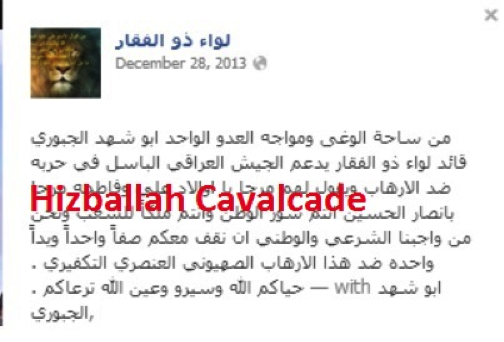
Figure 1: An announcement of support for the Iraqi Army’s efforts in Anbar from the official Liwa’a al-Zulfiqar Facebook page.
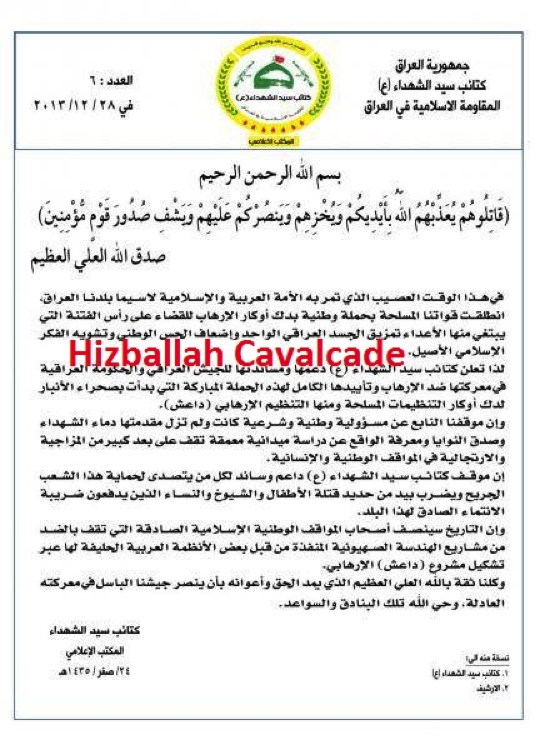
Figure 2: Kata’ib Sayyid al-Shuhada’s release in support of the Iraqi government’s offensive into Anbar.
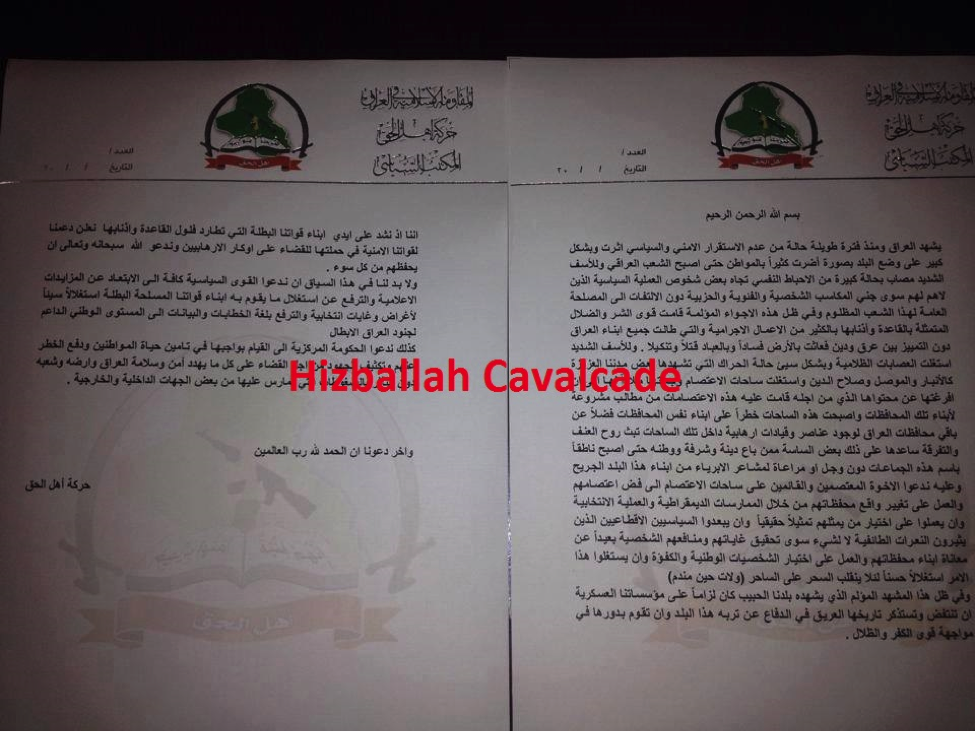
Figure 3: Asa’ib Ahl al-Haq’s statement about their support for the Iraqi government and military against ISIS and armed groups in the country.
Main Messaging Themes:
- National Institutions: Shia Islamist groups have claimed to fully support the Iraqi Army and present themselves as integral elements to the Iraqi military and police operations in Anbar. This theme coincides with other Iranian-backed organizations messaging, namely the narrative presented by Lebanese Hizballah and their claims of fully backing the Lebanese Armed Forces.[7]
- One Army, One Sect: Photos and statements implying the Iraqi military and police are engaging in the fight against ISIS to defend Shi’ism. These themes are also combined with photos claiming to show members of the military and/or police showing support for certain Shia political leaders and clerics. This sort of rhetoric had gone on since the spring of 2013 during the initial announcements of foreign Shia fighter involvement in Syria. In one May 2013 photo, a soldier reportedly from the Iraqi Army is shown holding a Shia religious banner on top of what is claimed to be an Iraqi military armored vehicle (see below).
- Two Fronts, One War: Tying the war in Syria to the fighting in Iraq involves extending the “Defense of the Sayyida Zaynab” (the defense of the Sayyida Zaynab shrine in southern Damascus is held as the reason for Shia Islamist fighters are in Syria) narrative which claims Shia Islamist armed groups are present in Syria to protect holy shrines/Shi’ism and stop jihadi-linked fighters. As a result, the engagements within Iraq which claim to also target ISIS and other organizations are grouped together as part of a unified effort to protect Shi’ism.
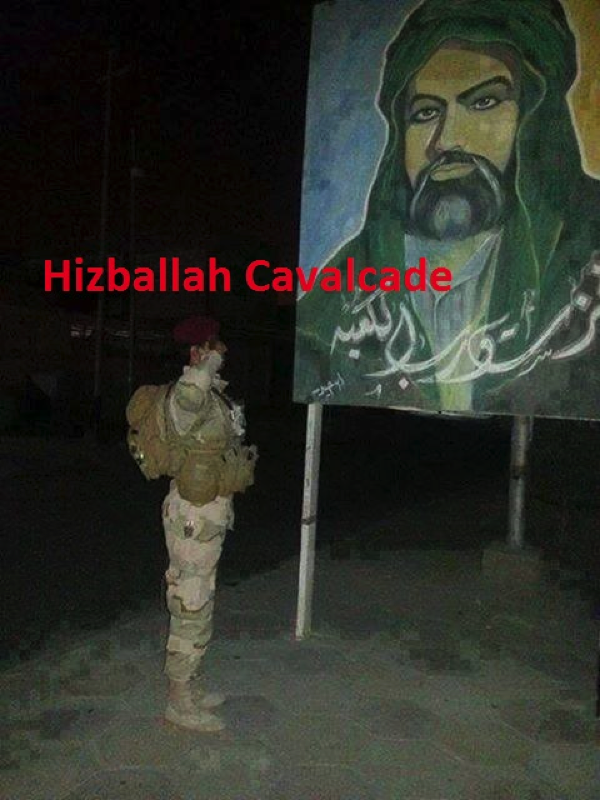
Figure 4: A photo uploaded in mid-January with the caption, “We will not be defeated”. The photo reportedly shows an Iraqi Army soldier saluting a Shia religious poster.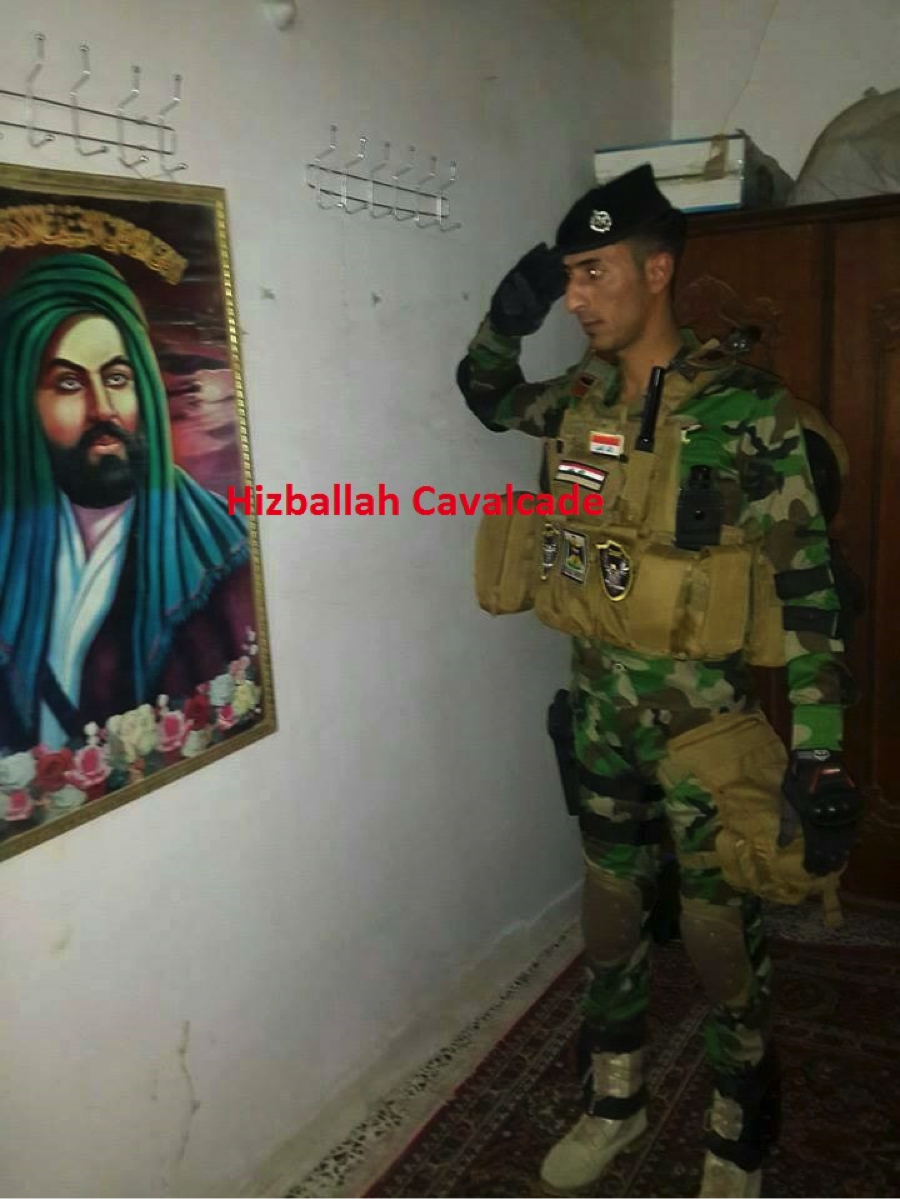
Figure 5: Photo claims to show an Iraqi soldier saluting a picture of martyred Shia leader, Imam Husayn. The photo was posted onto numerous social media pages catering to Shia Islamist fighters in Syria.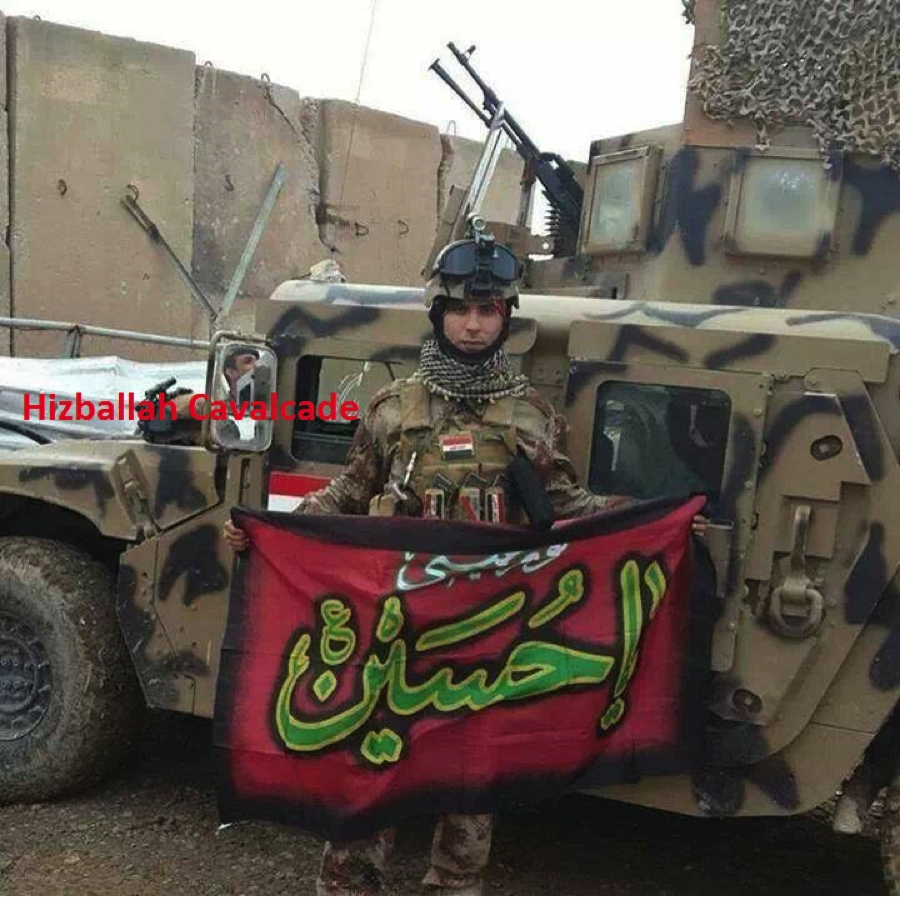
Figure 6: This photo claims to show an Iraqi soldier holding an Imam Husayn flag in front of an armored vehicle. The photo was widely circulated on Shia Islamist social media pages.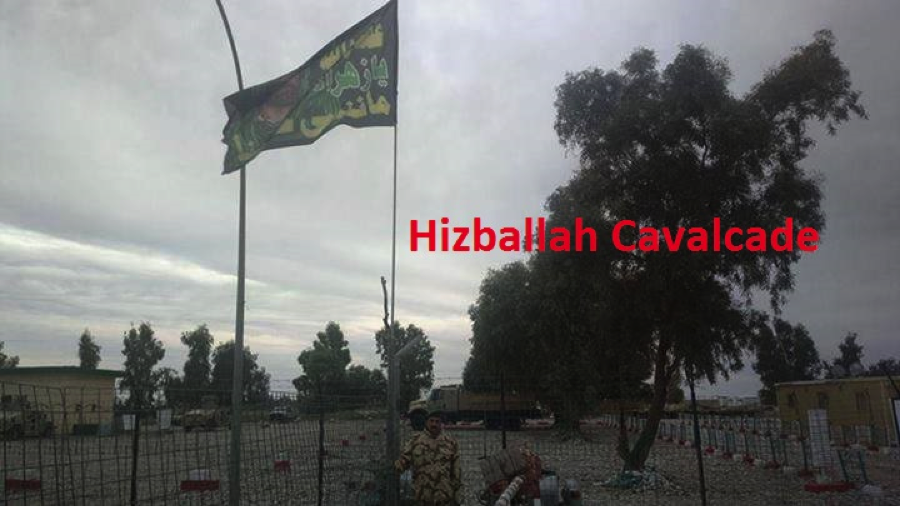
Figure 7: Photo purports to show an Iraqi soldier under a Shia banner following the, “Capture of Ramadi”. The photo was posted on Badr Organization and Asa’ib Ahl al-Haq social media pages.
Figure 8: This photo claimed to show an Iraqi soldier saluting Iranian Supreme Leader Ayatollah Khamenei.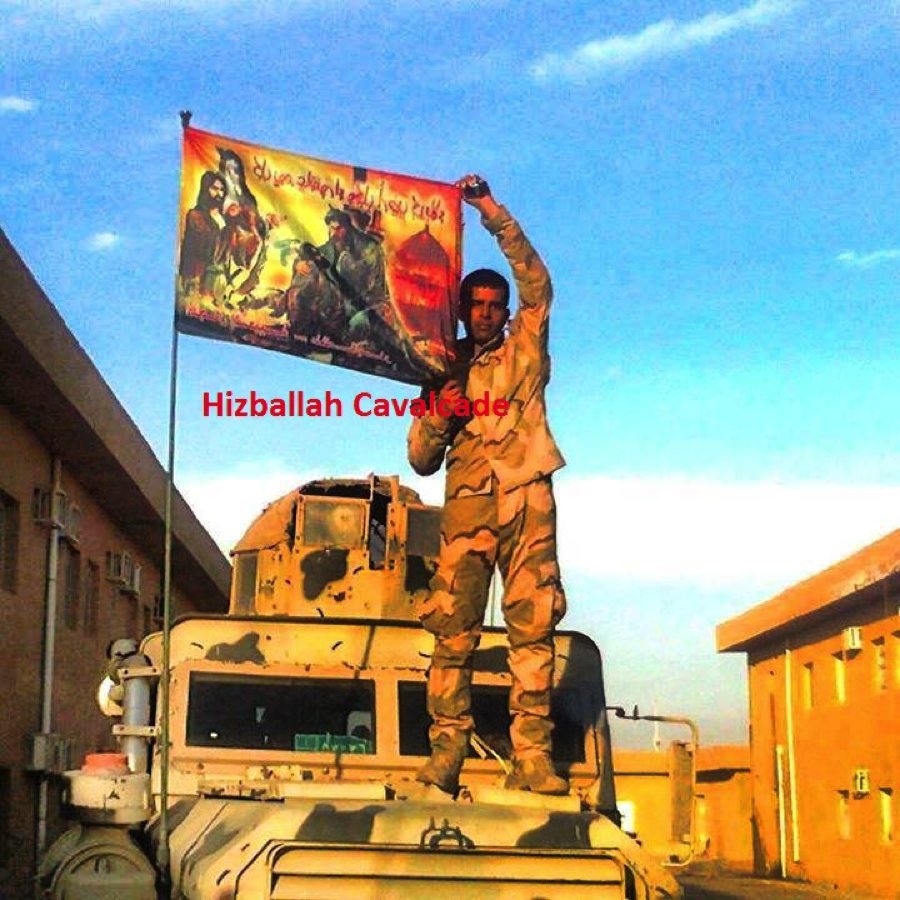
Figure 9: First uploaded to Shi’a Islamist social media in May 2013, this photo claims to show an Iraqi soldier atop an armored vehicle holding a Shi’a religious banner.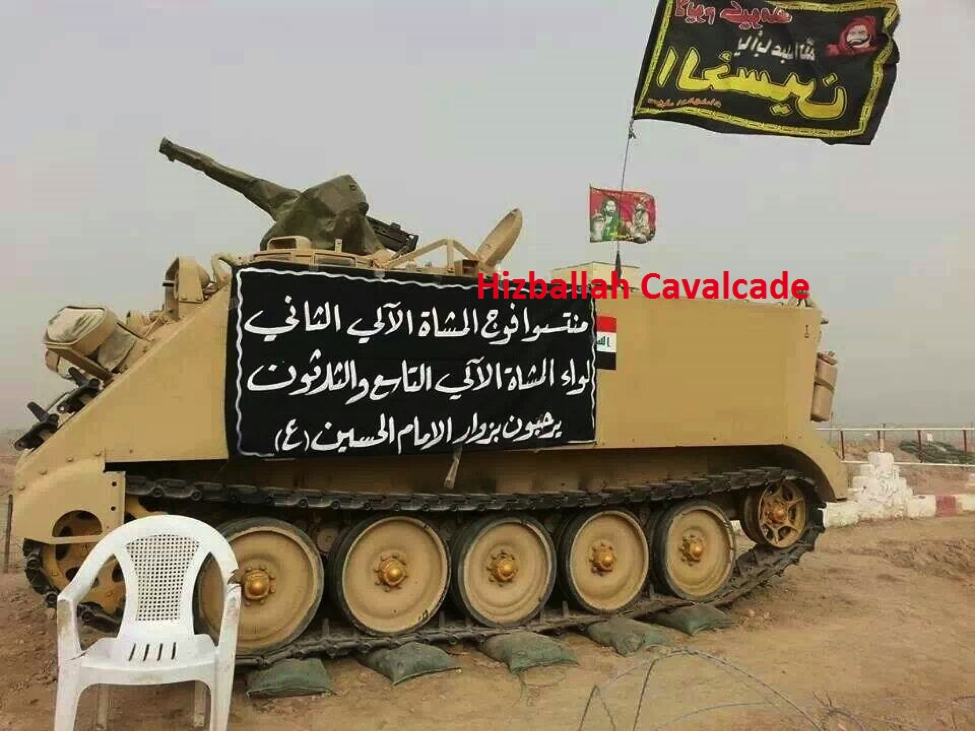
Figure 10: An Iraqi armored personnel carrier (APC) flying flags for Shia Imam Husayn with a sign partially reading, “Welcoming visitors to Imam Husayn [mosque and shrine in Karbala, Iraq]”. While the context of the photo is probably more innocuous—It is likely this APC was simply part of a guard set up in Karbala and was used to welcome pilgrims—ISIS/Sunni Islamist activists and Shia Islamist groups circulated the photograph as proof of the Iraqi Army’s sectarian loyalties.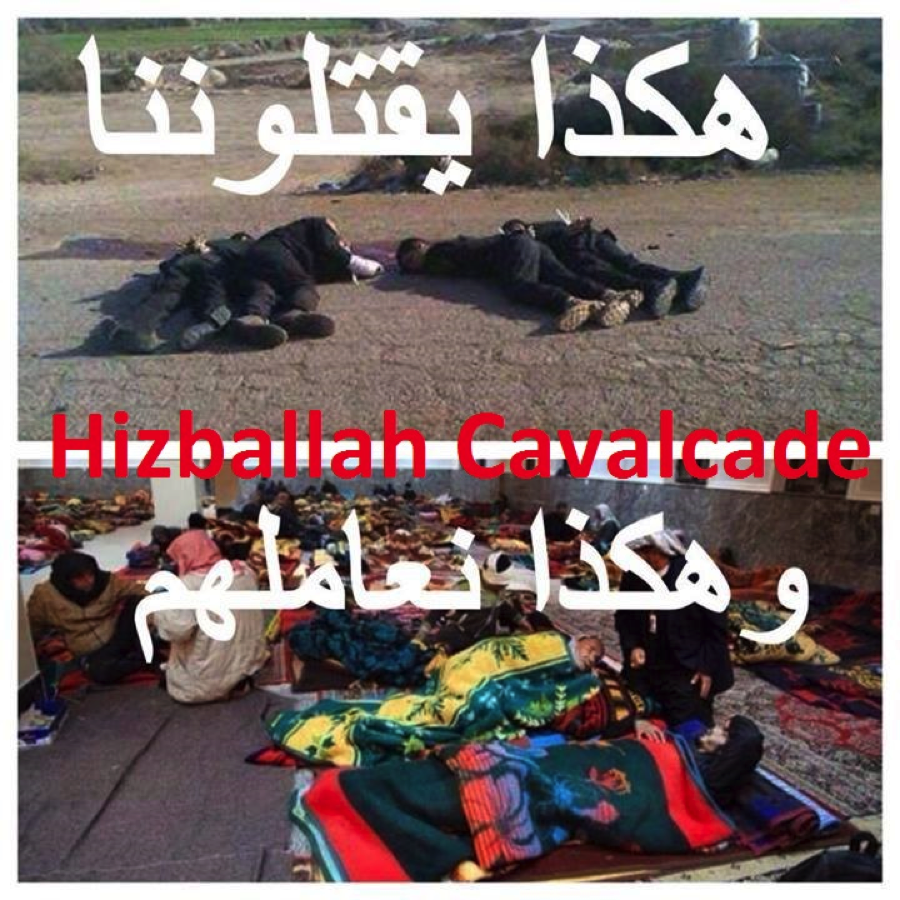
Figure 11: Top photo: “This is how they kill us”. Bottom photo: “And this is how we treat them”. The top picture shows Iraqi soldiers executed by ISIS. The bottom references reports of Shia Muslims taking in Sunni Muslim refugees from Anbar.[8] The photo was not widely distributed, but could be found on pages and profiles catering to Iranian-backed Shia Islamist organizations (mainly Asa’ib Ahl al-Haq).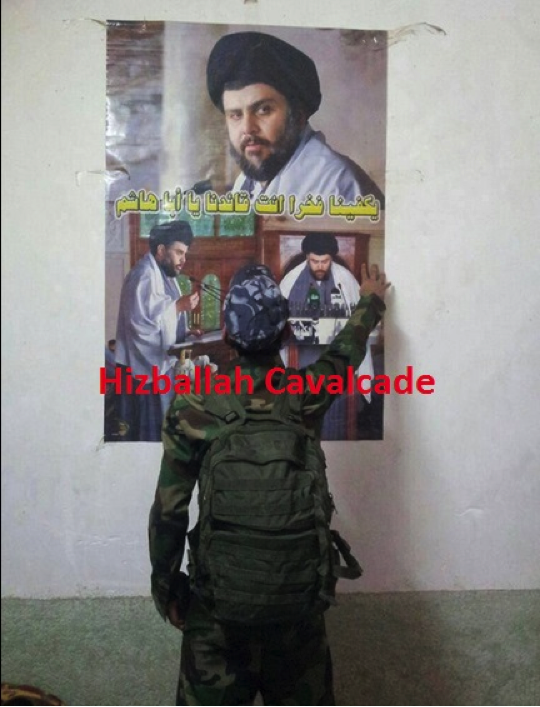
Figure 12: This photo, spread on Sadrist and Sadr-splinter group social media, claims to show an Iraqi soldier reaching out to a Muqtada al-Sadr poster.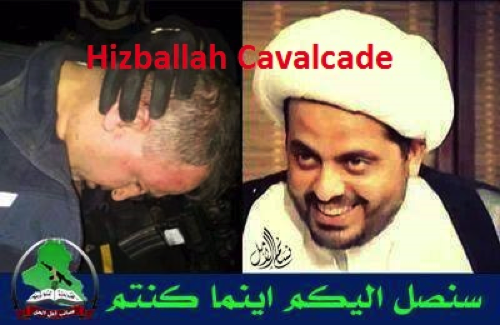
Figure 13: Asa’ib Ahl al-Haq leader Qais al-Khazali smiles (right) while Iraqi Sunni MP Ahmed al-Alwani is detained by Iraqi security forces (left).
Figure 14: Qais al-Khazali is portrayed as walking on the captured Iraqi Sunni MP Alwani.
Figure 15: “Thus, we support you”. An AAH poster shows AAH leaer Qais al-Khazali looking down on Iraqi army soldiers and an Iraqi helicopter.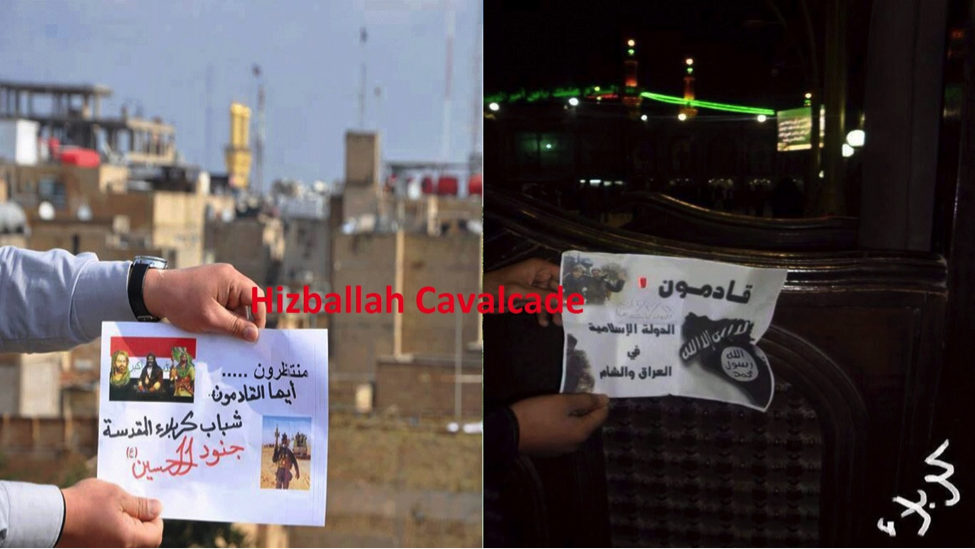
Figure 16: Selfie Taunts: On the right an ISIS supporter holds up a picture near the Imam Husayn Mosque/Shrine complex in Karbala. The sign reads, “Qadimoun” (“We are coming”). As a response to the pro-ISIS message, (on the left) “We are waiting for those coming, [we] the young men of sacred Karbala Soldiers of Husayn”.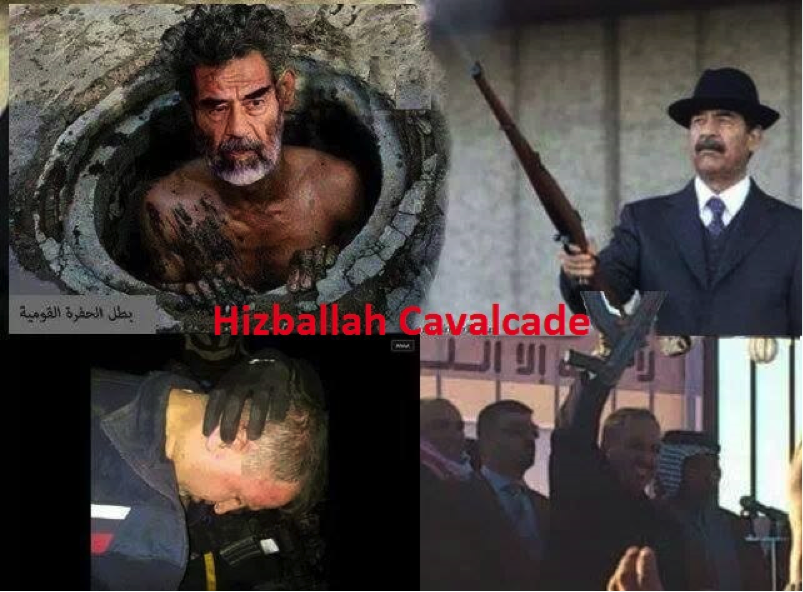
Figure 17: Right Left (top) An edited photo shows deposed Iraqi leader Saddam Husayn emerging from a dirty sewer. Left (bottom) Alwani is shown following his capture. The photo was spread on Sadrist and Iranian-backed Shia Islamist pages. The image promotes a theme of “how the mighty have fallen.” 
Figure 18: Another photo released on social media claiming to show Iraqi APCs flying Shia religious flags. The photos were shared online by ISIS sympathizers and Shia Islamist groups. The latter used the photos as a subtle way to suggest the Iraqi Army had Shia Islamic sectarian loyalties.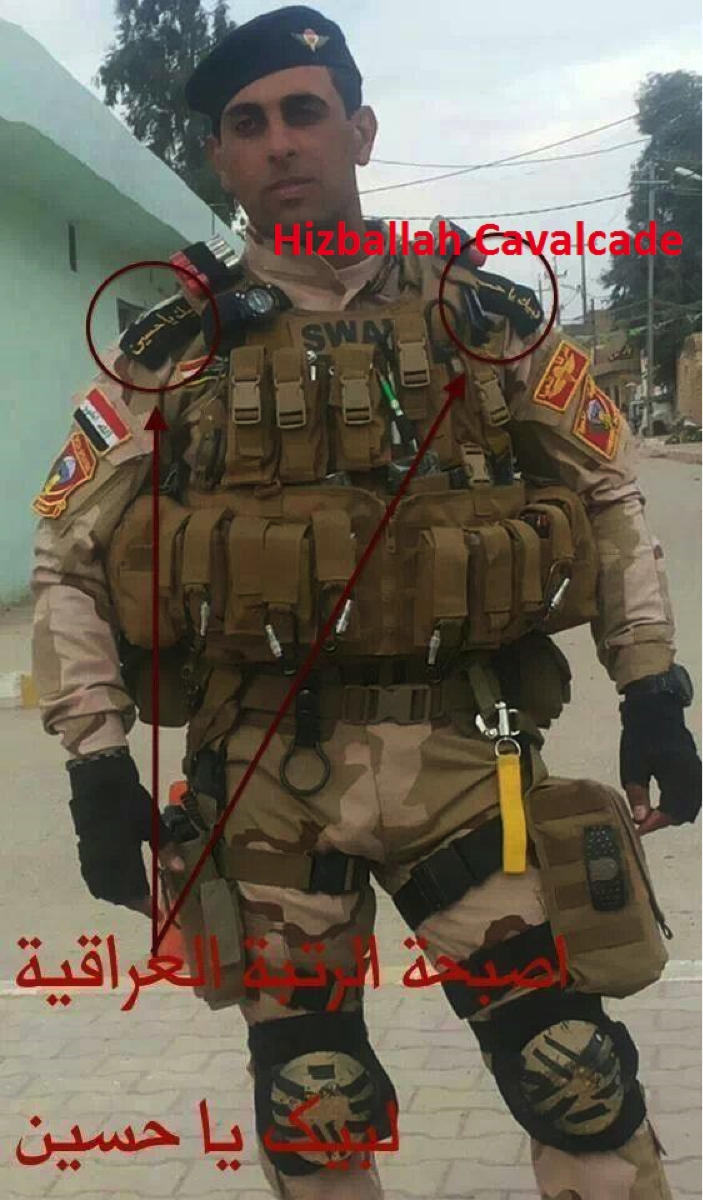
Figure 19: Shia Islamist and Sunni supporters of the protests and of ISIS circulated this photo on social media (including Twitter and Facebook). The photo purports to show an Iraqi Special Forces/SWAT member wearing epaulettes reading, “Labayk ya Husayn” (“At your service, O Husayn”), a Shia slogan used to show support for the Shi’ism’s first Imam.
One video uploaded claimed to show Iraqi units assembling before heading into Anbar and flying Shia religious flags. Due to the lower quality of the images in the video, the claim could not be confirmed. Accounts affiliated with Asa’ib Ahl al-Haq also uploaded a response to the offensive against ISIS. In their clip, a man sets up a system for a unmanned aerial vehicle (UAV) which then spots what can assumed to be ISIS positions. The ISIS positions are then destroyed. The clip was entitled, “A message from Asa’ib Ahl al-Haq to Da’sh” (note: Da’sh is the Arabic acronym for ISIS).
Hizballah Cavalcade: Faylak Wa'ad al-Sadiq: The Repackaging of an Iraqi “Special Group” for Syria
NOTE: For prior parts in the Hizballah Cavalcade series you can view an archive of it all here.
—
Faylak Wa’ad al-Sadiq: The Repackaging of an Iraqi “Special Group” for Syria
By Phillip Smyth
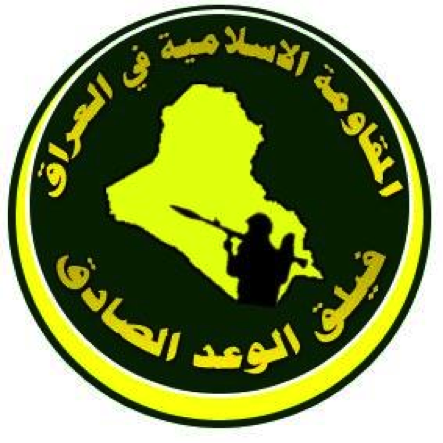
Figure 1: Faylak Wa’ad al-Sadiq’s logo. The top line reads: “The Islamic Resistance in Iraq” (“Al-Muqawama al-Islamiyya fi al-Iraq”). The bottom says, “The Truthful Promise Corps” (“Faylaq al-Wa’ad al-Sadiq”). The logo features the map of Iraq in the center with a blackened figure holding an RPG-7.
Officially known as Al-Muqawama al-Islamiyya fi al-Iraq-Faylaq al-Wa’ad al-Sadiq or The Islamic Resistance in Iraq-The Truthful Promise Corps (FWS), this organization has made some waves in Arabic-language media following the discovery of some of its images on social media networks.[1] Led by a Secretary General, FWS’s current leader is Iraqi Shia Sheikh Abu ‘Ammar al-Tamimi (A.K.A. Shiekh ‘Ammar). The organization also claims to be based in the holy city of Najaf, Iraq. It is clear from assessing the trajectory of public statements and their social media presence that the FWS appears to be increasing its public presence in an effort to establish the belief there are further organized Shia Islamist force deployments in Syria.
The group’s name references Lebanese Hizballah’s Secretary General’s long-standing goal to kidnap Israeli soldiers. This “promise” came to fruition in July 2006, when fighters from Lebanese Hizballah attacked an Israeli military convoy and kidnapped two Israeli soldiers and killed three. The attack spurred what would turn into the more than a month long 2006 Hizballah-Israel War.[2]
It is unclear whether it was created immediately following the 2006 Hizballah-Israel War or if it was established later in 2010-2011.
Reportedly, the FWS was first established to “fight the U.S. occupation of Iraq and the collaborators [associated with it]”.[3] In January 2012, FWS claimed it had no interest in running for elections or becoming part of the Iraqi government.[4] In August 2012, the FWS’s spokesperson Sheikh ‘Amr al-Lami, claimed the group changed paths and stated it would instead focus on civil projects. One year later, the organization claimed to have sent its first fighters (from a “military wing”) to Syria in order to, “defend shrines”.[5] “Shrine defense” has been the most prevalent narrative used by Iranian-backed Shia Islamist fighting groups which have deployed to Syria.
The group also made its first video and a group musical anthem public in January 2014. Though it appears to have been uploaded in February 2012. It is possible FWS uploaded the clip many months ago, then made it “private”, only to re-release it as part of a ramping-up of their public image. In the short clip, the FWS-subgroup which claims the attack is called Kata’ib Musa al-Khadhim-Sariyya ‘Ammar Ibn Yasir (The Musa al-Khadhim Brigade-‘Ammar Ibn Yasir Unit). Musa al-Khadhim references the seventh Imam in Twelver Shia Islam.[6] The targeted vehicle in the clip appears to be a U.S. armored HMMWV. [7] The naming of subdivisions after imams is a common form utilized by Iranian-backed Iraqi special groups.[8]
Little was known about the organization during the Iraq War (2003) and it had few announcements. The group also claimed to have its own webpage (since 2011). However, when the page is visited, it does not load.[9] Instead, with public appearances and statements by its leadership, it seems that since the summer of 2013, FWS has been dusted-off and repurposed for a new mission in Syria. September 2013 saw FWS start its initial postings on social media pages it had done little with since opening them in 2011.
This may indicate that the FWS was little more than a front-type group during the Iraq War (2003) which may now field rebranded fighters from other groups for the fight in Syria. In turn, this helps create perception of broader Iraqi Shia support for the concept of Wilayat al-Faqih and of this ideological grouping’s war in Syria. Comments on the page largely praised the leadership of Asa’ib Ahl al-Haq. This mirrors newly created front groups such as Harakat Hizballah al-Nujaba (or Harakat al-Nujaba), which fields fighters from Kata’ib Hizballah and Asa’ib Ahl al-Haq (AAH), has a leader from AAH’s ranks, yet is cast as independent organization. Photos of fighters from Harakat al-Nujaba front militias in Syria and those from Asa’ib Ahl al-Haq have found a presence on FWS’s Facebook page and adjoining profiles.
In addition to the organization’s name and links to other Iraqi Shia “special groups”, another element further cementing its relationship with Iran and its proxy militant groups, was the group claiming adherence to the concept of Wilayat al-Faqih. Wilayat al-Faqih, or the Absolute Guardianship by a Jurisprudent is Iran’s form of radical theocratic governing system. In August of 2013, the reported leader of FWS visited Beirut and confirmed his loyalty to the political-religious ideology.[10] The lead jurisprudent, or Wali al-Faqih, who is followed by FWS is Iranian Supreme Leader Ayatollah Khamenei. The organization’s imagery also details their loyalty to Khamenei.
Little is known about FWS’s combat abilities, force size, or deployments. In photos released by the group, it has been shown they have what can be considered a normal small-arms accompaniment, ranging from PKM-type machineguns to Kalashnikov pattern rifles. One important detail about deployments in Syria was that the FWS has only claimed (so far) to have specifically fought in one area, Aleppo. This further helps tie the group to Asa’ib Ahl al-Haq’s Harakat al-Nujaba and their Liwa’a ‘Ammar Ibn Yasir (LAIY). LAIY was the first Iraqi Shia Islamist group to announce they were fighting in Aleppo. The announcement also coincided with the December 2013-January 2014 increase in announced Shia Islamist military activities in Rif Aleppo and the city.
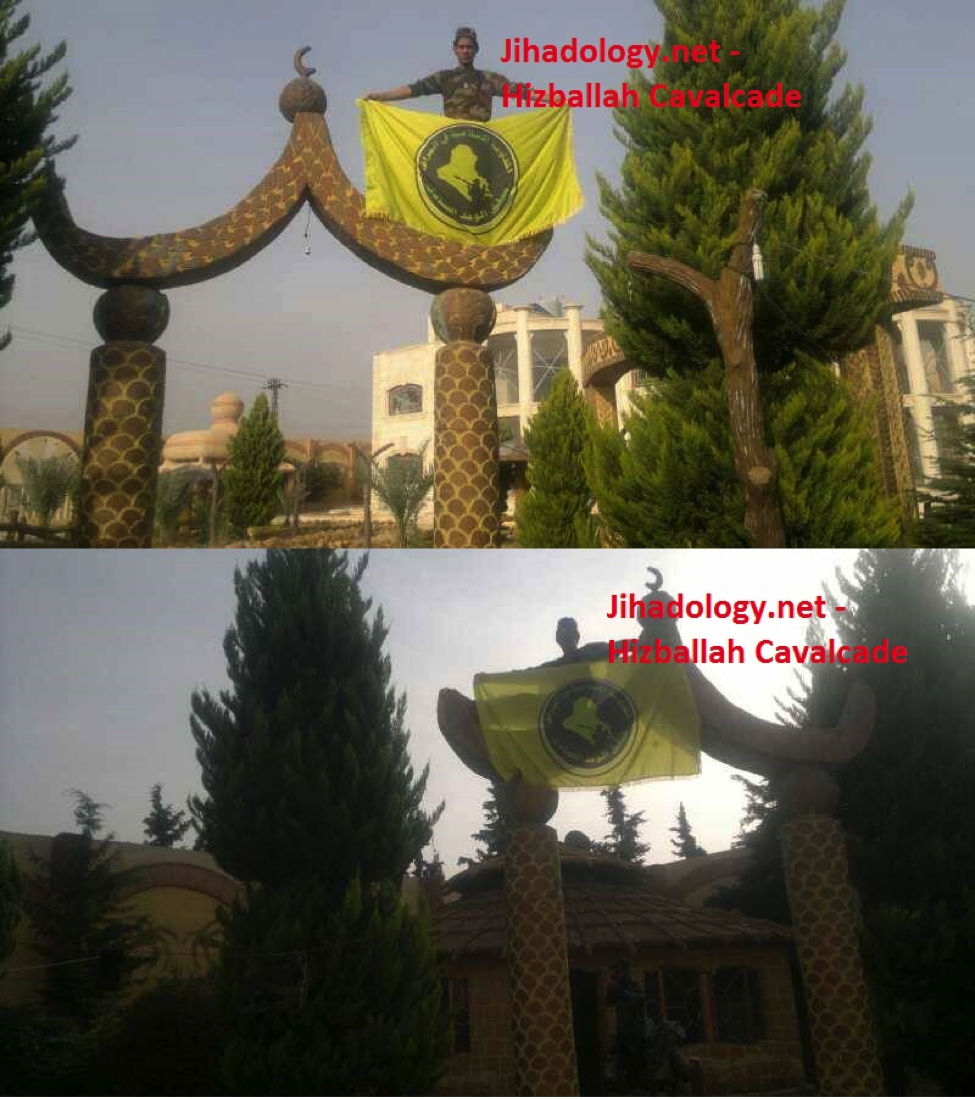
Figure 2: These photos, posted in mid-December, claimed to show an FWS fighter in Aleppo, Syria.
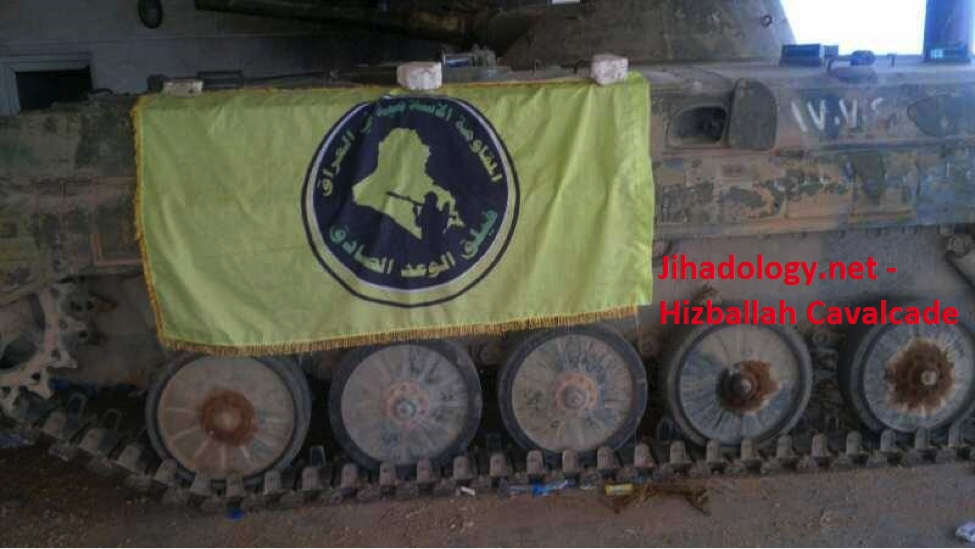
Figure 3: The FWS flag flies on a BMP-1 armored personnel carrier. It is unknown whether this flag was placed on an Iranian, Iraqi, or Syrian BMP-1 infantry fighting vehicle.
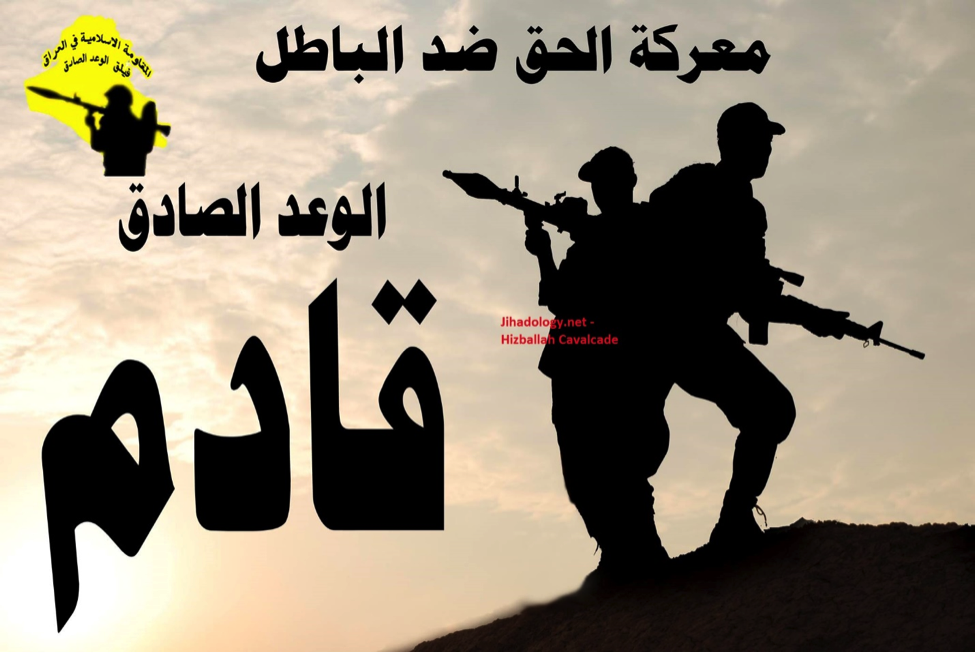
Figure 4: “ma’rkat al-haq dhud al-batl al-wa’ad sadiq qadm” or the “Battle of truth against falsehood, the truthful promise is coming”.
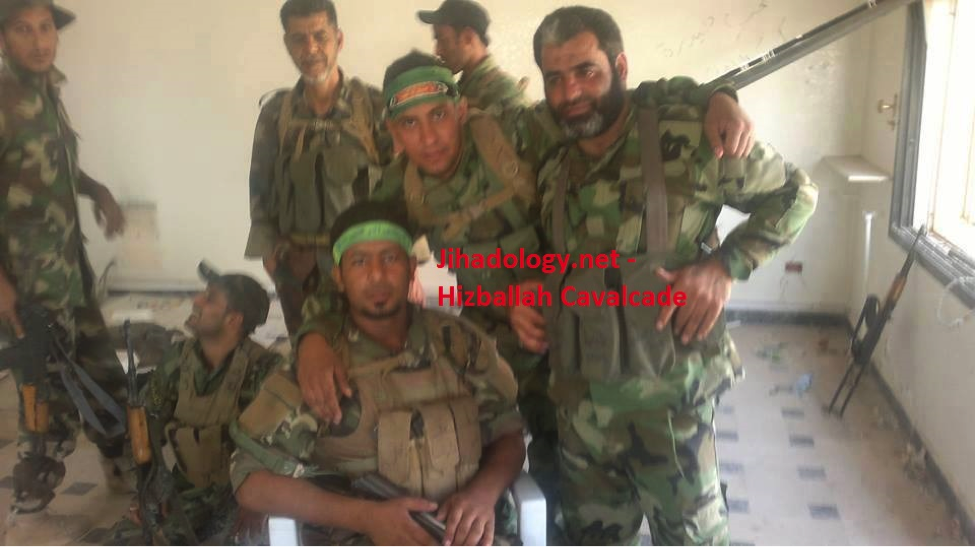
Figure 5: This photo claims these are Faylak Wa’ad al-Sadiq personnel. However, the photo has been posted by other Shi’a Islamist fighting groups.

Figure 6: Iranian Supreme Leader Ayatollah Khamenei and Muhammed Muhammed Sadiq Sadr look from the sky down at burned-out U.S. armored vehicles. An Iraqi flag graphic is flows from the lower-right corner.

Figure 7: Another poster featuring Iranian Surpreme Leader Ayatollah Khamenei and Muhammed Muhammed Sadiq Sadr.
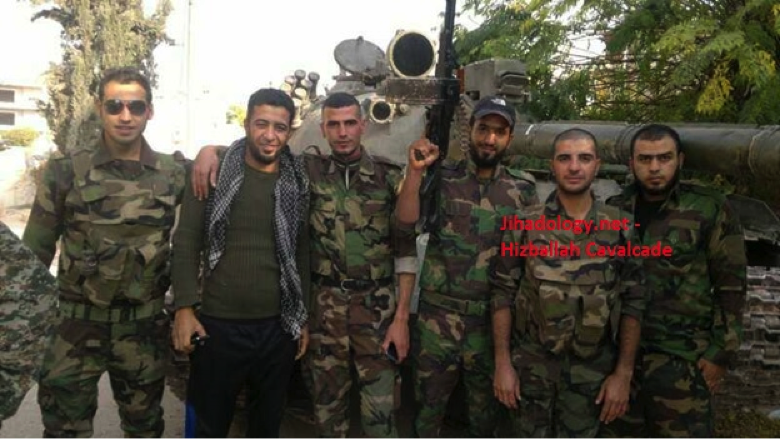
Figure 8: FWS fighters pose in front of a tank.
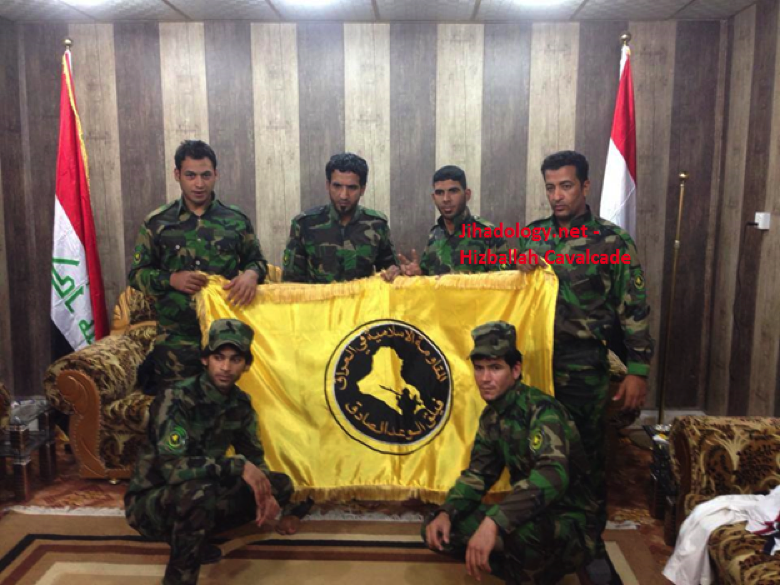
Figure 9: Uniformed FWS members pose with the group’s flag while flanked by Iraqi flags. Note the FWS patches worn by these 6 members.
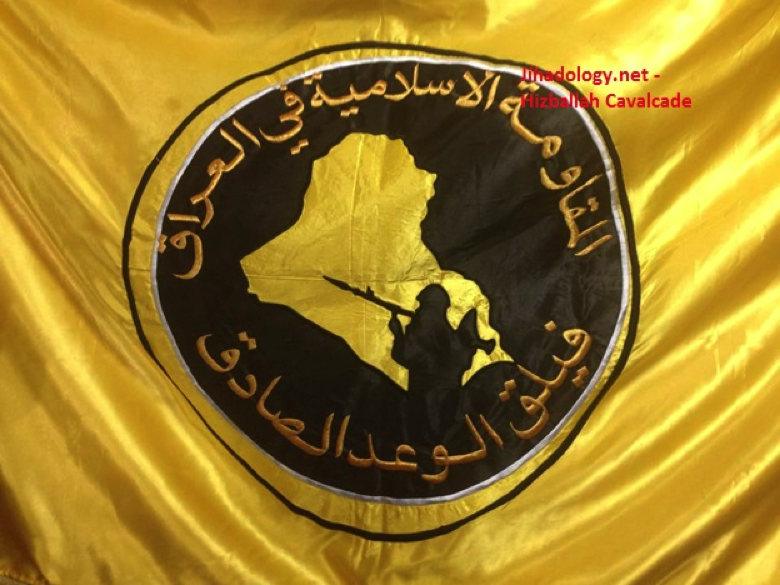
Figure 10: The FWS flag.

Figure 11: FWS fighters hold up the group’s flag.
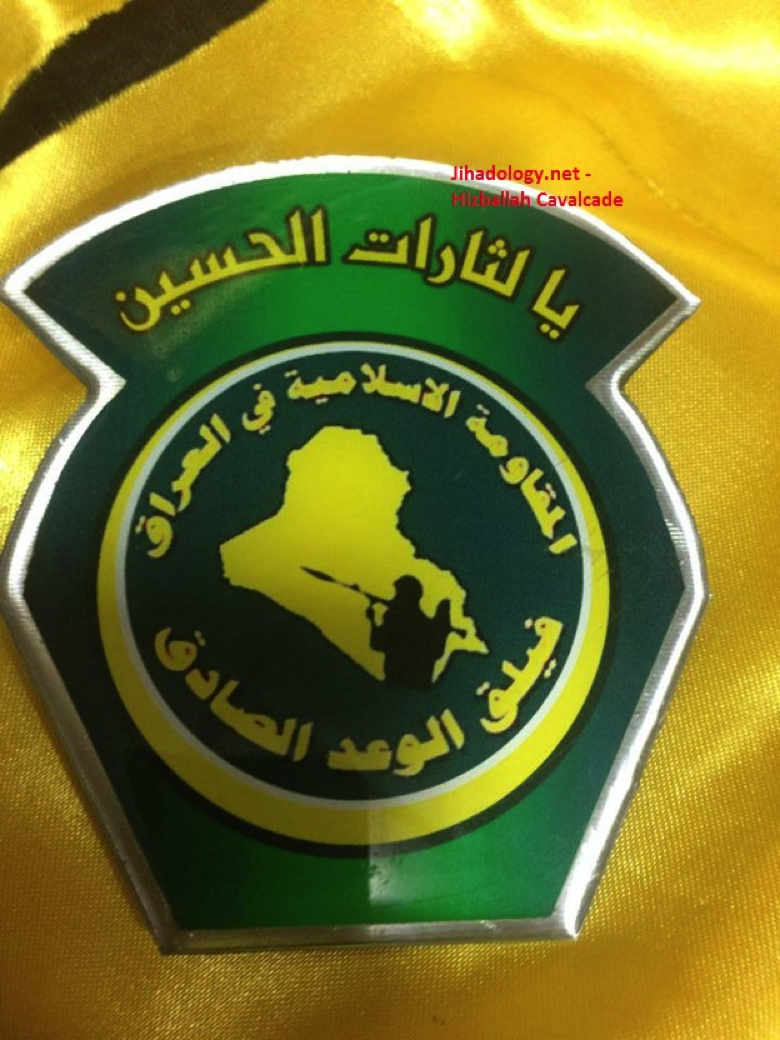
Figure 12: Another piece of FWS symbolism.
Hizballah Cavalcade: Khamenei’s Cannon: .50 Caliber Anti-Material Rifles & Shia Fighters in Syria
NOTE: For prior parts in the Hizballah Cavalcade series you can view an archive of it all here.
–
Khamenei’s Cannon: .50 Caliber Anti-Material Rifles & Shia Fighters in Syria
By Phillip Smyth
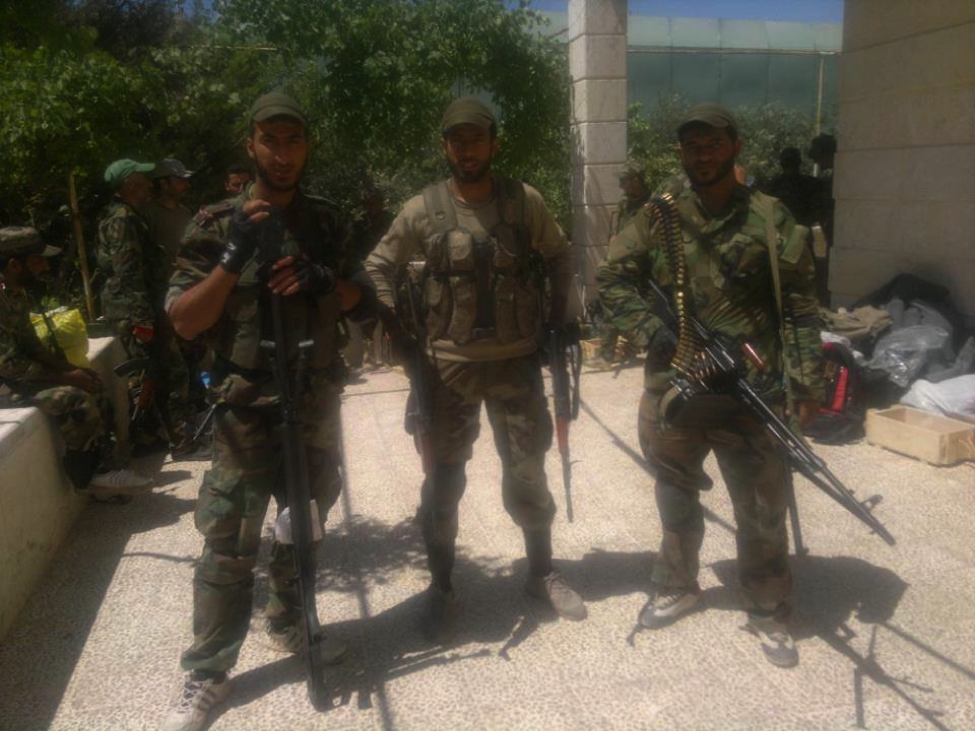
Figure 1: Combatants from Liwa’a ‘Ammar Ibn Yasir. The fighter on the left likely holds an Iranian-copy of the HS.50 rifle.
Since April 2013, around the same time Liwa’a Abu Fadl al-Abbas was first gaining broader exposure and name-recognition, another sub-trend started to appear in the photos showing Shia Islamist fighters in Syria. This trend remained minor and occasional. However, starting in October, there have been increasing examples of foreign Shia Islamist fighters being pictured with long range bolt-action anti-material rifles.[1]
It is possible these weapons were the bolt-action HS.50, .50 caliber (12.7x99mm) rifles produced by Austria’s Steyr Mannlicher. According to The Telegraph, 800 of the rifles were shipped to Iran in 2007.[2] However, according to the Brown Moses Blog, it is far more probable that these rifles are actually Iranian copies which were shipped to Syria.[3] Since the winter of 2012, pro-Iranian social media has also praised the Iranian-made copy of the rifle.[4] Still, serial numbers on the weapons are often hidden, making absolute confirmation difficult.
The original Steyr Mannlicher sale of these long-range weapons caused worries among British and U.S. policymakers and military personnel due to the fear they would be supplied to Iranian-created and supplied Shi’a Islamist “special groups” in Iraq. These groups included Asa’ib Ahl al-Haq and Kata’ib Hizballah. Both of these organizations are now sending forces to Syria.
Anti-material sniper rifles of this caliber have found a welcome place in Western military services. The U.S. military fields the M107 semi-automatic .50 caliber rifle as do a number of other militaries. In October, 2012 one of these weapons killed a Taliban member in Afghanistan from a distance of 2,475 meters.[5]
Presently in Syria, these types of rifles have been used by both rebels and pro-Assad forces. Nevertheless, the outfitting of highly organized foreign Shia fighter manned organizations may demonstrate a shift in tactics and training.
Groups using the rifle in Syria span the full spectrum of organizations backed by Iran. Lebanese Hizballah has been a primary poster of images with the weapon. Additionally, Iraq-based Harakat Hizballah al-Nujaba’s (a front for Kata’ib Hizballah and Asa’ib Ahl al-Haq) Syria-based front militias, Liwa’a ‘Ammar Ibn Yasir and Liwa’a al-Hamad have posted photos of their militants with the rifle. Iraq’s Badr Organization’s Quwet Shahid Muhammed Baqir Sadr and Kata’ib Sayyid al-Shuhada have posted their own images of their fighters with the HS.50 type rifle. Other Shia fighters from unnamed organizations have also been pictured with the weapon.
Films featuring Shia militia groups using the HS. 50 type rifles in combat in Syria have been extremely rare. Usually only photos are posted.
The first film showing Shia Islamist militias in Syria using the rifle was posted to Facebook and YouTube pages associated with the Badr Organization’s Quwet Shahid Baqir Sadr (BOQSBS), the group’s expeditionary unit in Syria. The BOQSBS has also been a main poster of high-quality images showing their combatants wielding these types of anti-material rifles. Around a minute of footage showing BOQSBS fighters using the weapon was inserted into a much longer film made to demonstrate the group’s activities in Syria (see below at minute markers 1:59-2:23).
Due to the high level of operational security employed by these groups, potential failures or successes of the rifle in combat are often not showcased. Operations using the rifle have also not been detailed on the many social media pages run by Iranian-backed Shia militia groups inside Syria. In fact, the rifle has rarely been named or described by Shia Islamist militia pages. Nevertheless, these rifles have become a regular feature in images featuring fallen fighters.
Such a capability, even if deliberately showcased for propaganda purposes, should be taken seriously by regional and global military forces. Iranian equipped and trained snipers, utilizing smaller caliber rifles, demonstrated a lethal efficiency during the Iraq War (2003). Their utilization of smaller caliber-wielding snipers (particularly using the SVD-type rifles) demonstrates a concentration on sniping tactics.
Some Possible Reasons Why the Rifles Are Appearing More
- Propaganda Purposes: Some of the photos of fighters holding the rifle appear to be posed images meant to showcase the size of the weapon (representing power) in comparison to the fighter. Additionally, since it is probably a copy, showing the rifle in operations overseas is a sign that Iranian-made weapons are of a high quality. Proxy organizations may also see the rifle as a symbol of advancement and as a sign they are comparable to first-world armies. The weapon may also be a sign to rebel groups that Shia militants have more advanced capabilities.
- General Incorporation into the Order of Battle: The rifle could have possibly become more prolific with increased foreign-manned Shia militia operations.
- Offensive Operations: Since the start of main offensives in October and increase in numbers of Shia fighters, it is possible the rifle has found more use and acceptance by fighters.
The Rifle & Its Shia Islamist Users
Lebanese Hizballah:
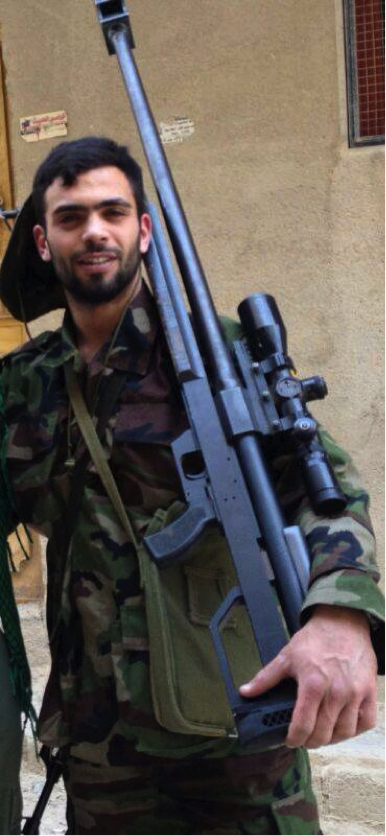
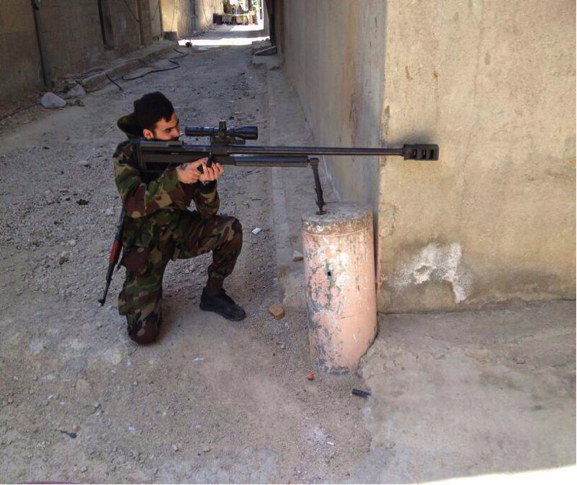
Figure 2: Lebanese Hizballah’s Ali al-Hadi Nuwn shown holding the weapon on his shoulder. (Left)
Figure 3: Another posed-photo of Lebanese Hizballah’s Ali al-Hadi Nuwn. In this picture he is taking aim with the .50 caliber rifle. (Right)
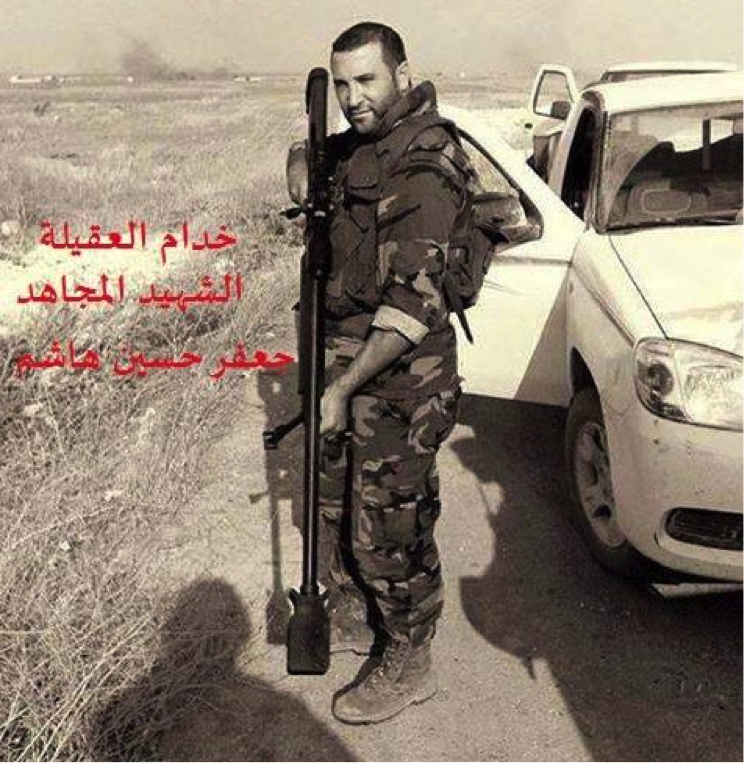
Figure 4: Hizballah commander Ja’afar Husayn Hashim with the rifle. He was reported to have been killed in Syria on November 1, 2013.
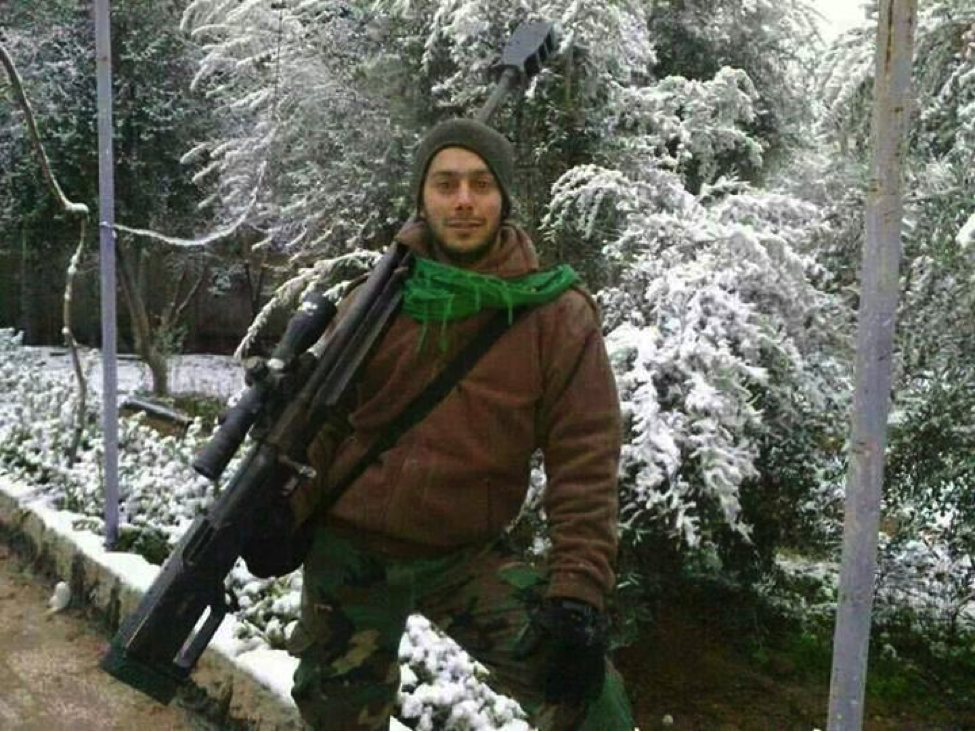
Figure 5: Hizballah’s Khadr Ahmed Matar, declared killed in Syria on December 2
0, is shown standing in the snow with the rifle.

Figure 6: Qasim Ghamloush is shown holding the .50 caliber rifle. His death was announced by Hizballah on December 7, 2013.
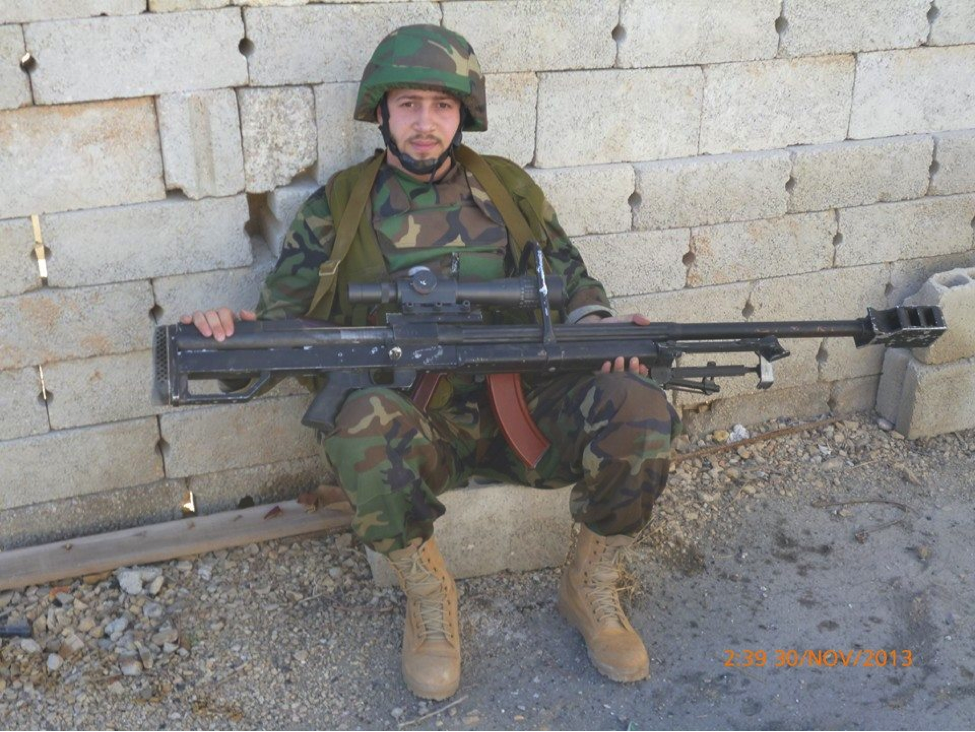
Figure 7: Ali Husayn Salah (A.K.A. Sheikh Hadi) is seen holding the rifle over his Kalashnikov-pattern weapon. Salah was also reported to have been killed in Syria on December 7, 2013.
Liwa’a al-Hamad:

Figure 8: An October photo of a fighter from Liwa’a al-Hamad taking aim with the HS.50-type rifle.
The Badr Organization – Quwet al-Shahid Muhammed Baqir Sadr
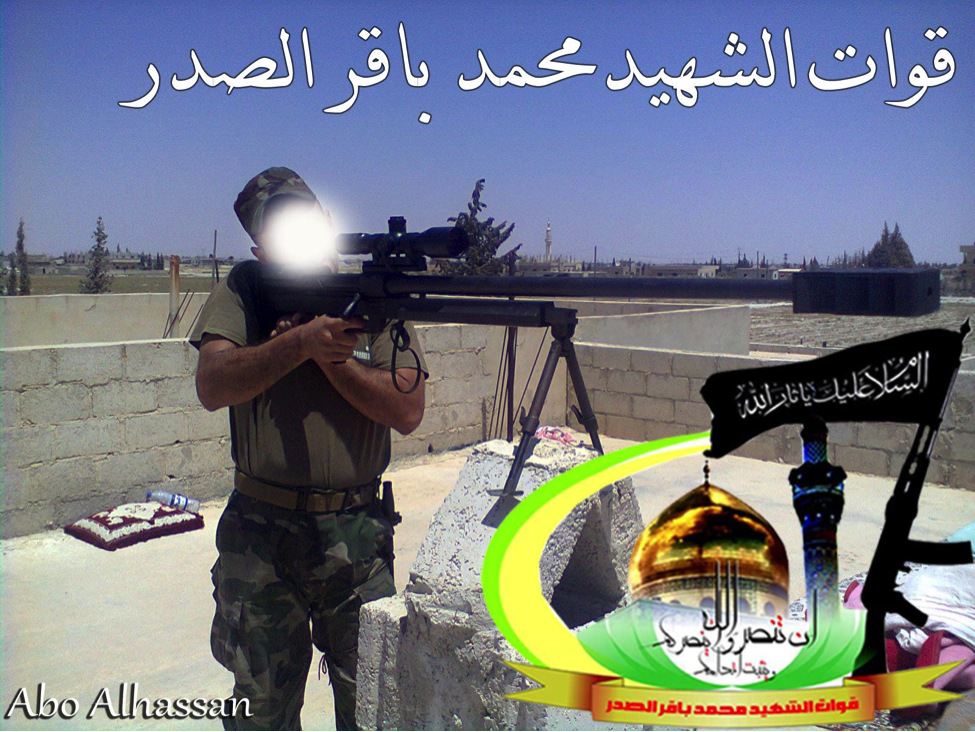
Figure 9: Following the announcement that the Badr Organization had created its own expeditionary force for Syria, this was one of the first photos they posted online.
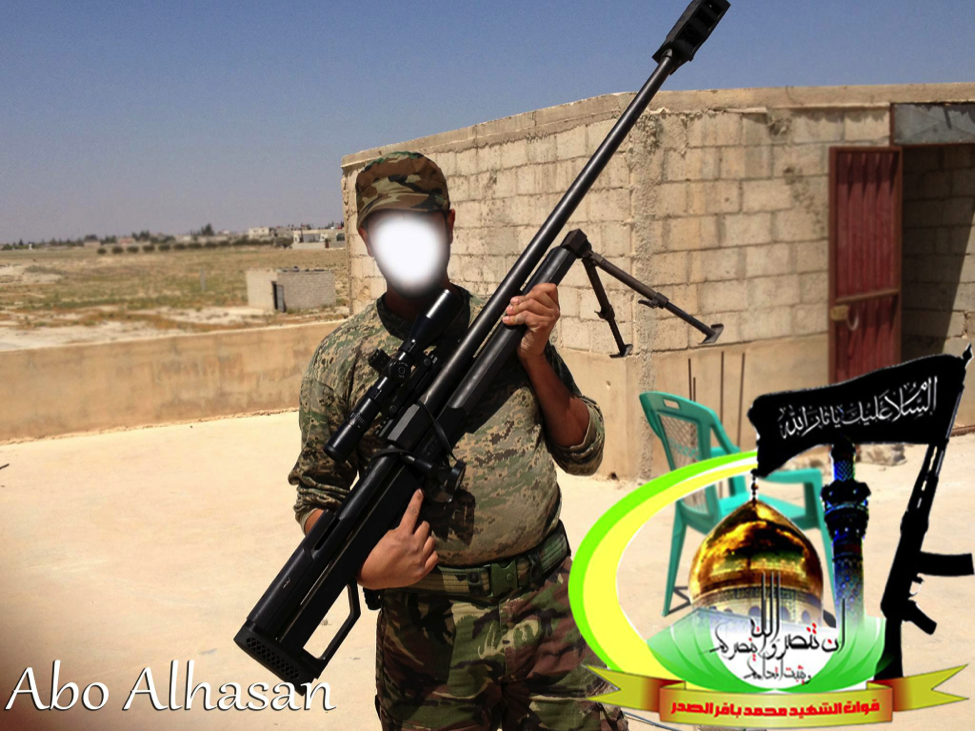
Figure 10: A Badr Organization-Quwet al-Shahid Muhammed Baqir al-Sadr is shown holding the HS. 50 type rifle.
Liwa’a ‘Ammar Ibn Yasir:
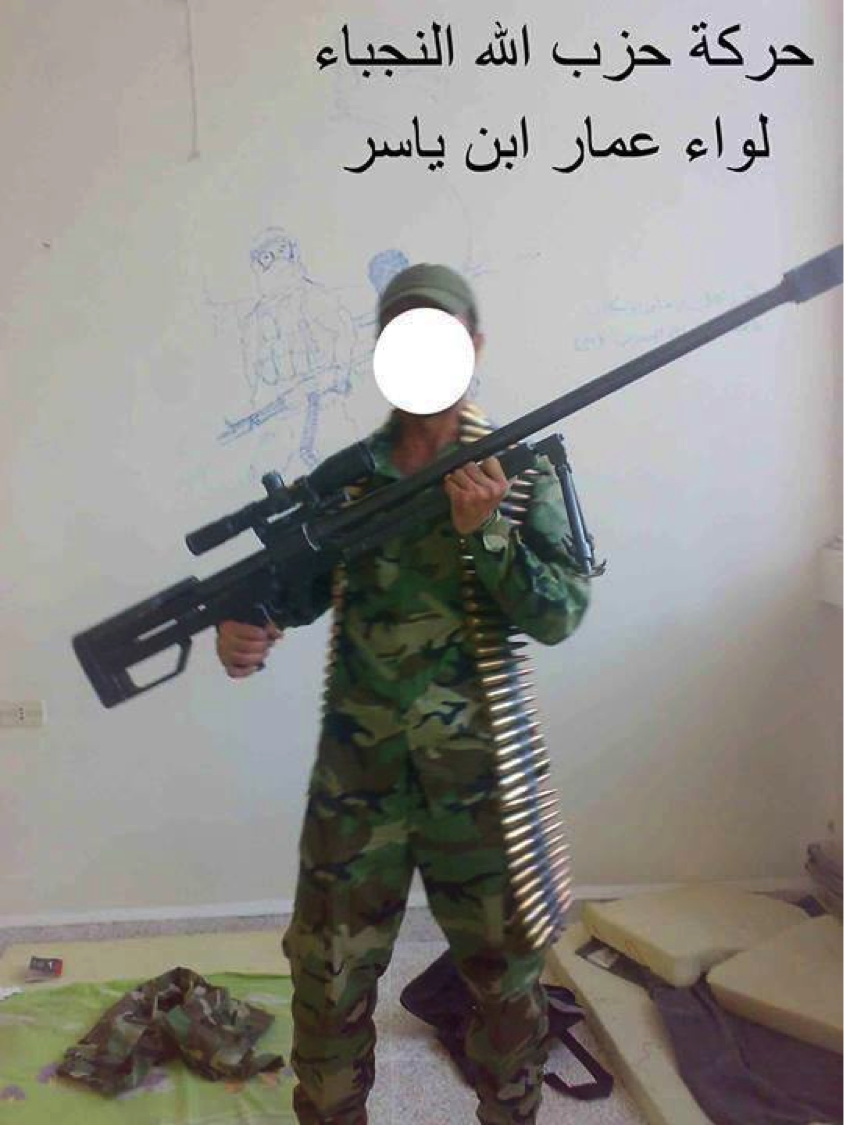

Figure 11: A commander from Liwa’a Ammar Ibn Yasir is seen holding the .50 caliber rifle.
Kata’ib Sayyid al-Shuhada:
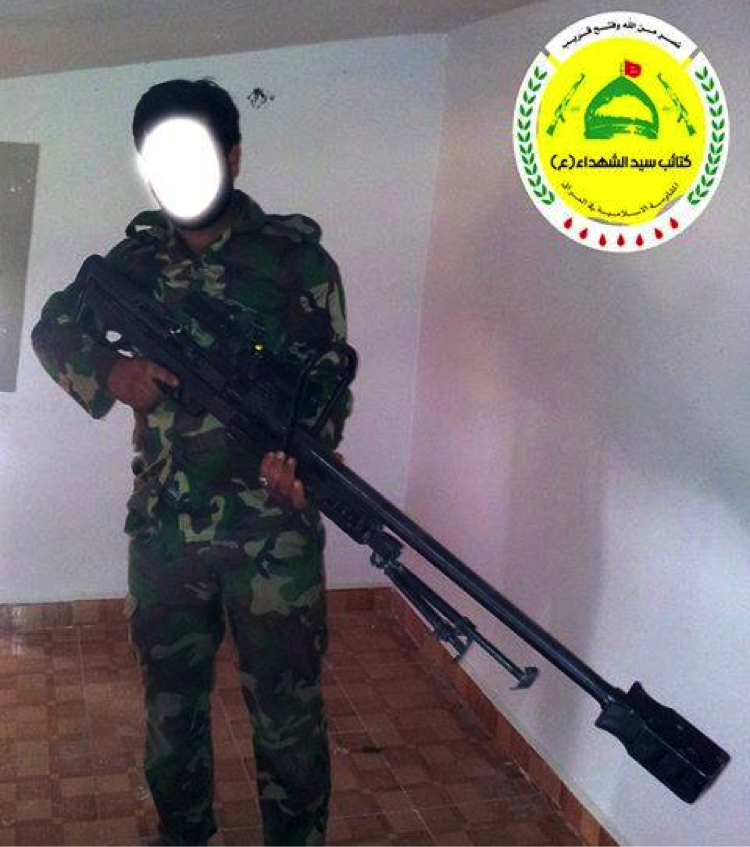
Fighters from Other Groups:
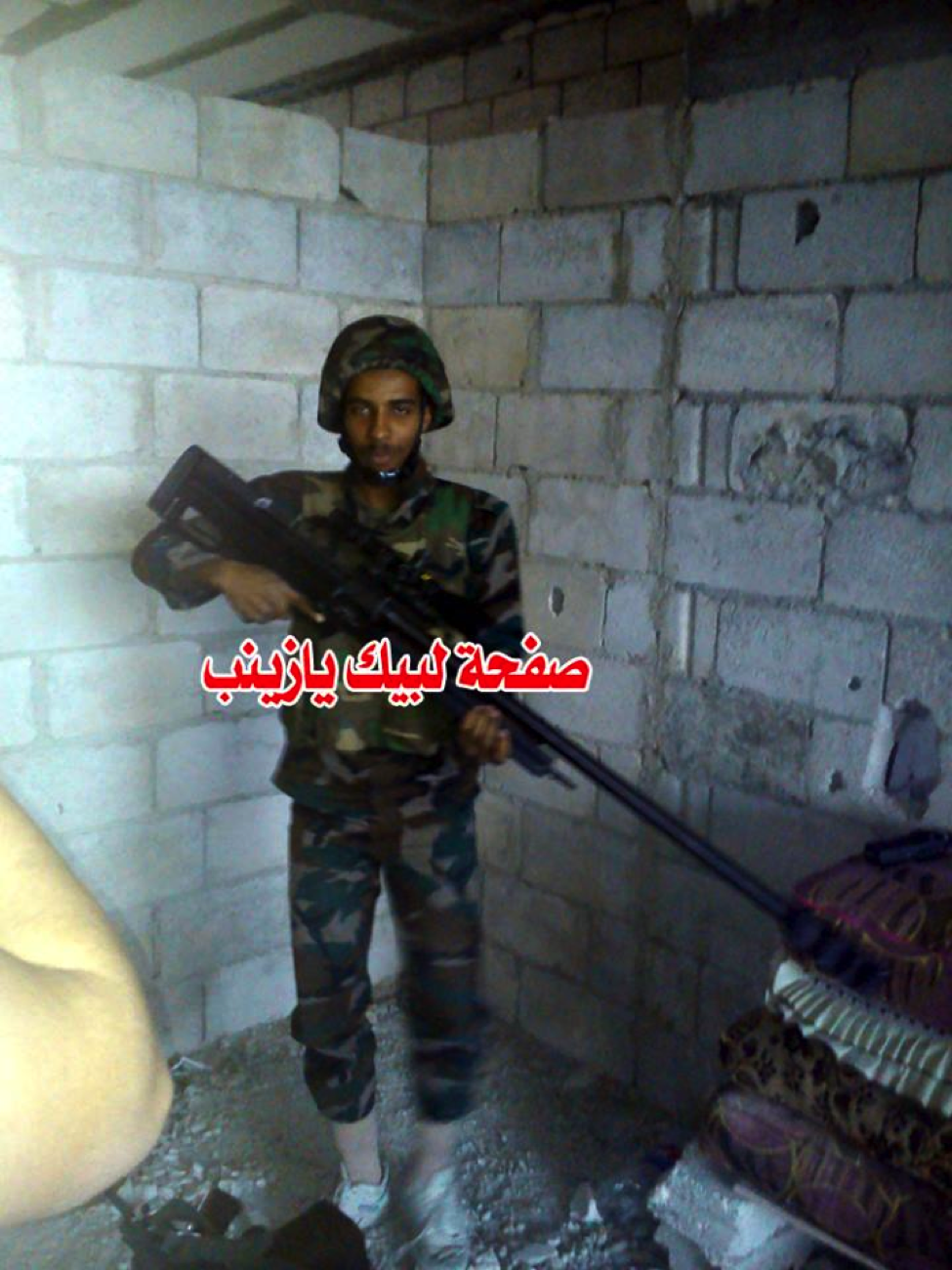
Figure 12: The Shia militia effort’s “first African martyr” (Muhammed Suleiman al-Kuwni) is shown holding the rifle.

Figure 13: A fighter from an unnamed Shia Islamist militia (likely Liwa’a ‘Ammar Ibn Yasir) take aim with his rifle.
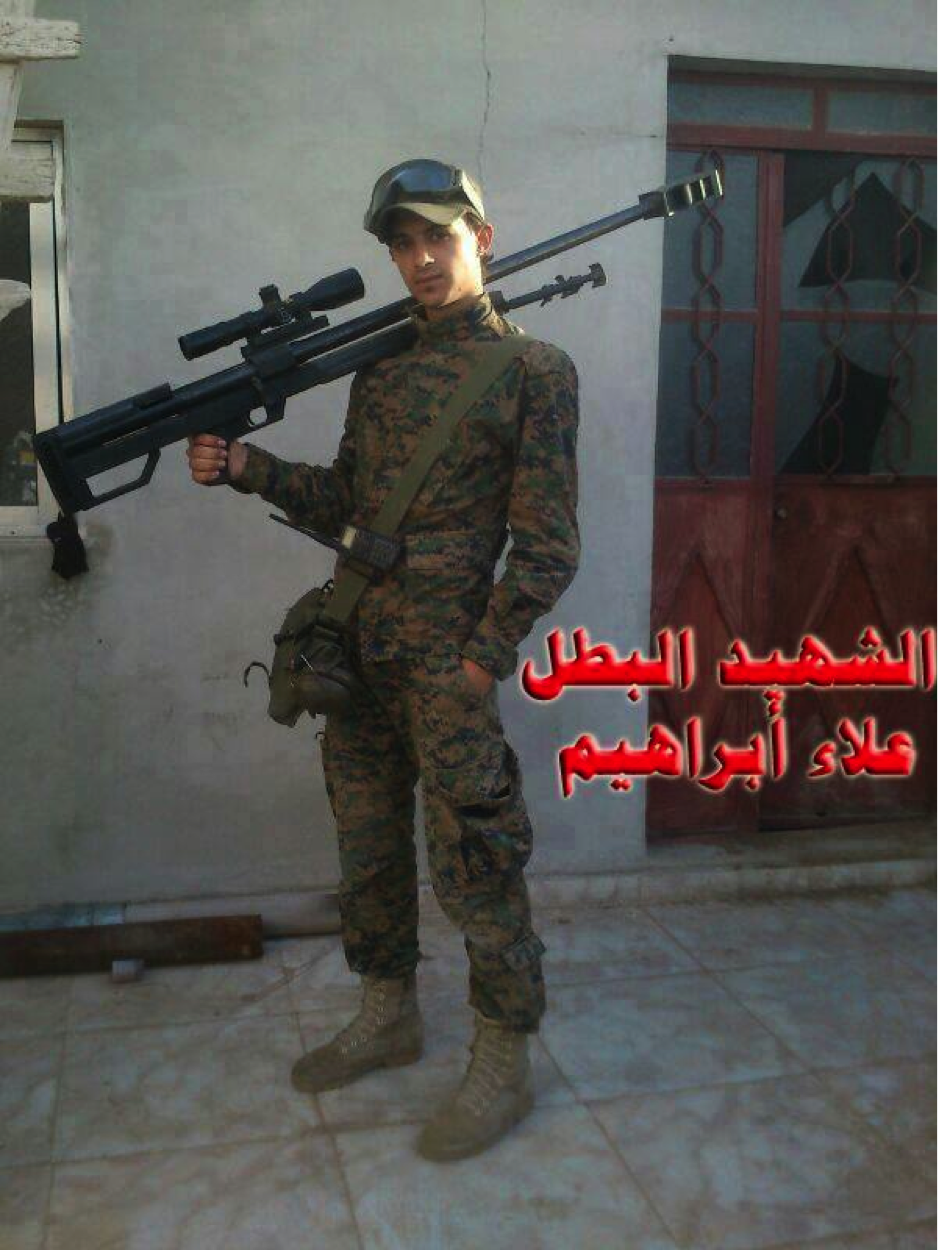
Figure 14: Alla’ Ibrahim (possibly from Liwa’a Zulfiqar), an Iraqi Shi’a fighter buried on November 30, 2013 holds the rifle over his shoulder.
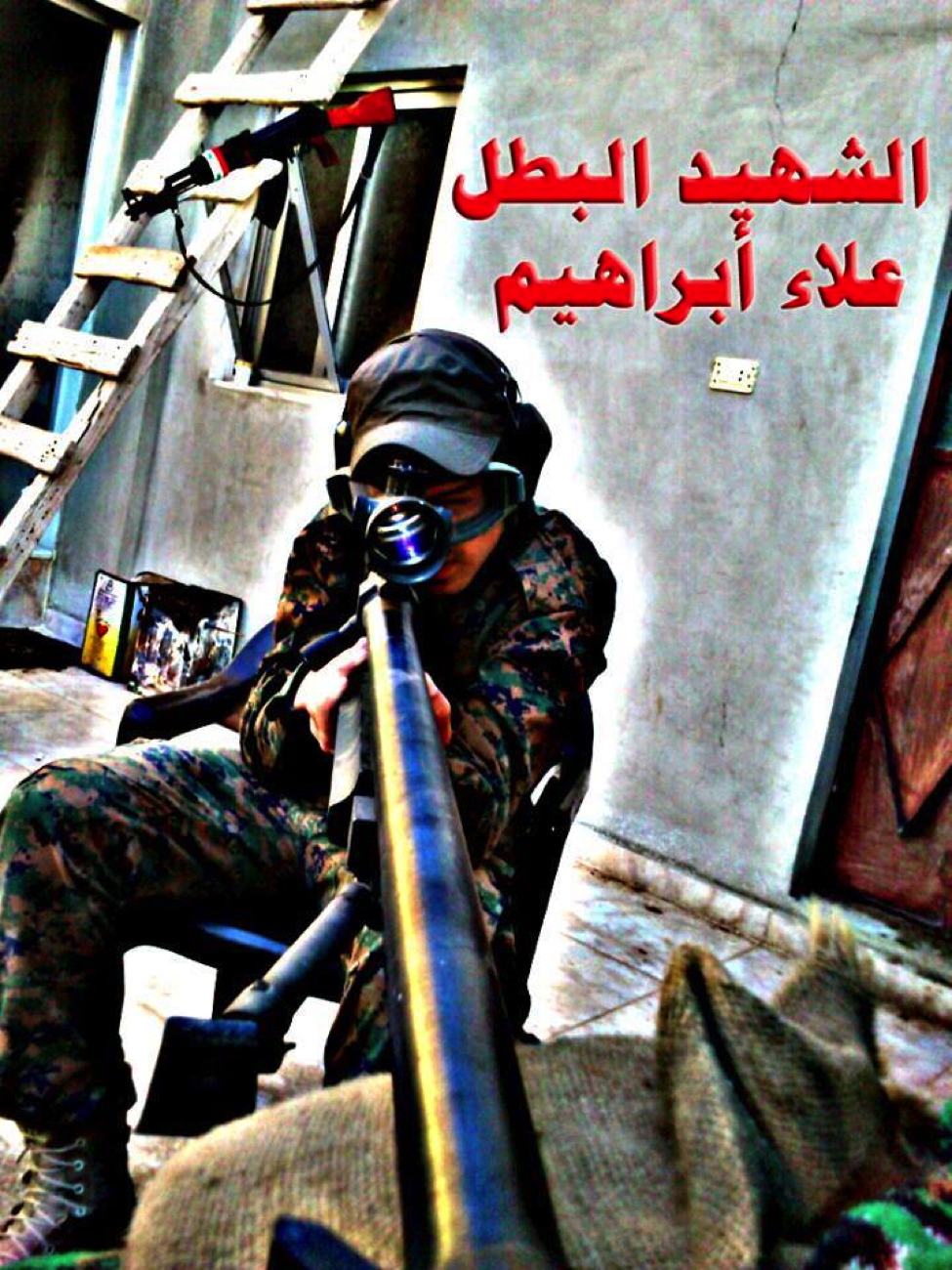
Figure 15: An edited shot of Alla’ Ibrahim shows him posting with the rifle.
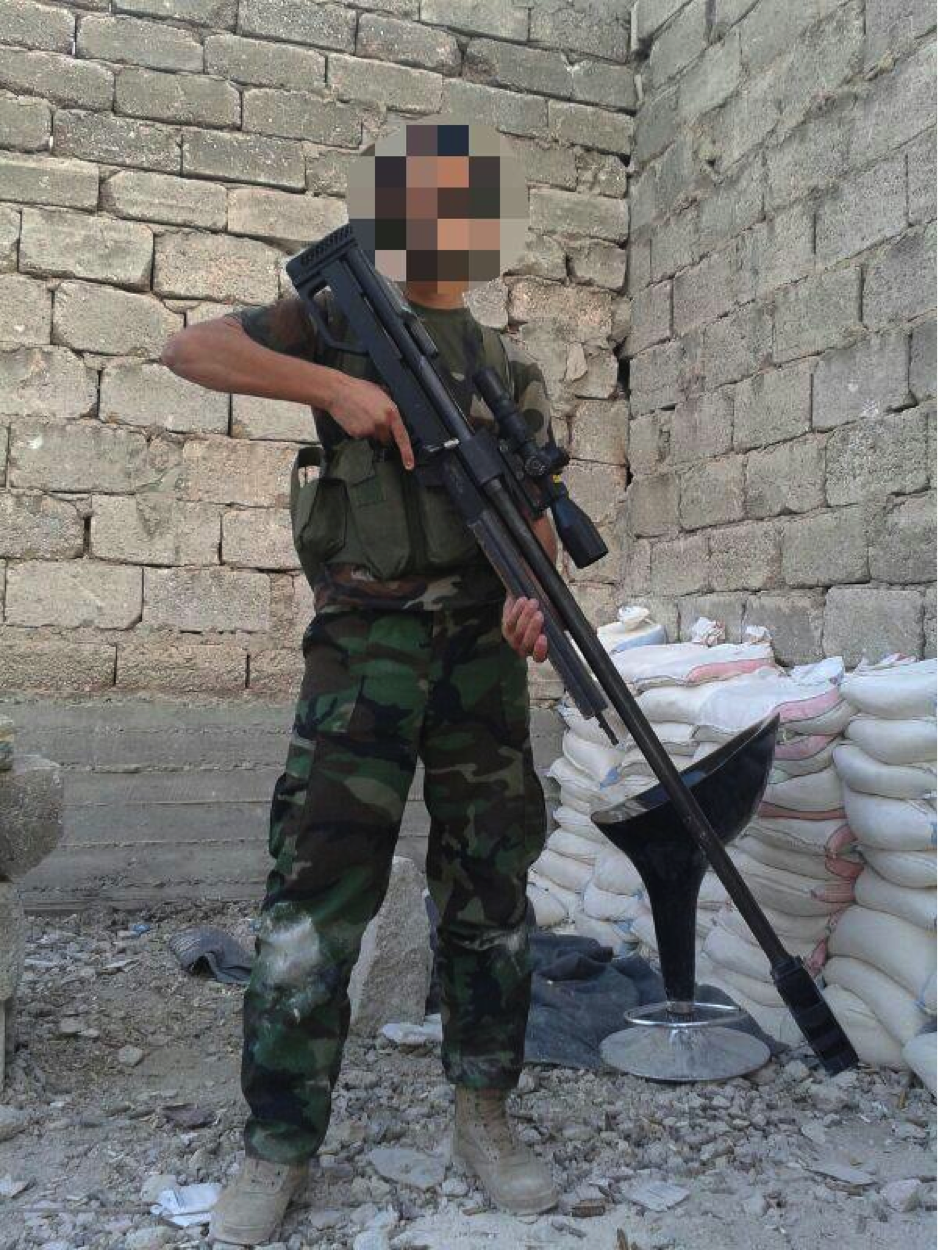
Figure 16: A Shia fighter from an unnamed militia group is shown with the HS. 50-type rifle.
[1] The Oryx Blog has an excellent post on HS. 50-type rifles in Syria: https://spioenkop.blogspot.com/2013/04/syria-and-her-hs50s.html. The post is from April 27, 2013 and pictures of Liwa’a Abu Fadl al-Abbas members with the rifle.
[2] See: https://www.telegraph.co.uk/news/worldnews/1542559/Iraqi-insurgents-using-Austrian-rifles-from-Iran.html
[3] See: https://brown-moses.blogspot.com/2013/04/anti-material-rifles-in-syria.html. See also: https://www.thefirearmblog.com/blog/2012/07/16/mysterious-iranian-50-cals-part-3/. This post by The Firearms Blog should also be read when assessing the rifle in question.
[4] See: https://www.facebook.com/permalink.php?story_fbid=477563188953409&id=174927625878471.
[5] See: https://www.dailytelegraph.com.au/news/opinion/taliban-remain-in-fear-of-lethal-strikes-writes-chris-masters/story-e6frezz0-1226504862496
Hizballah Cavalcade: The Badr Organization’s Syrian Expeditionary Force: Quwet al-Shahid Muhammed Baqir al-Sadr
NOTE: For prior parts in the Hizballah Cavalcade series you can view an archive of it all here.
–
The Badr Organization’s Syrian Expeditionary Force: Quwet al-Shahid Muhammed Baqir al-Sadr
By Phillip Smyth ([email protected])
Click here for a PDF version of this post
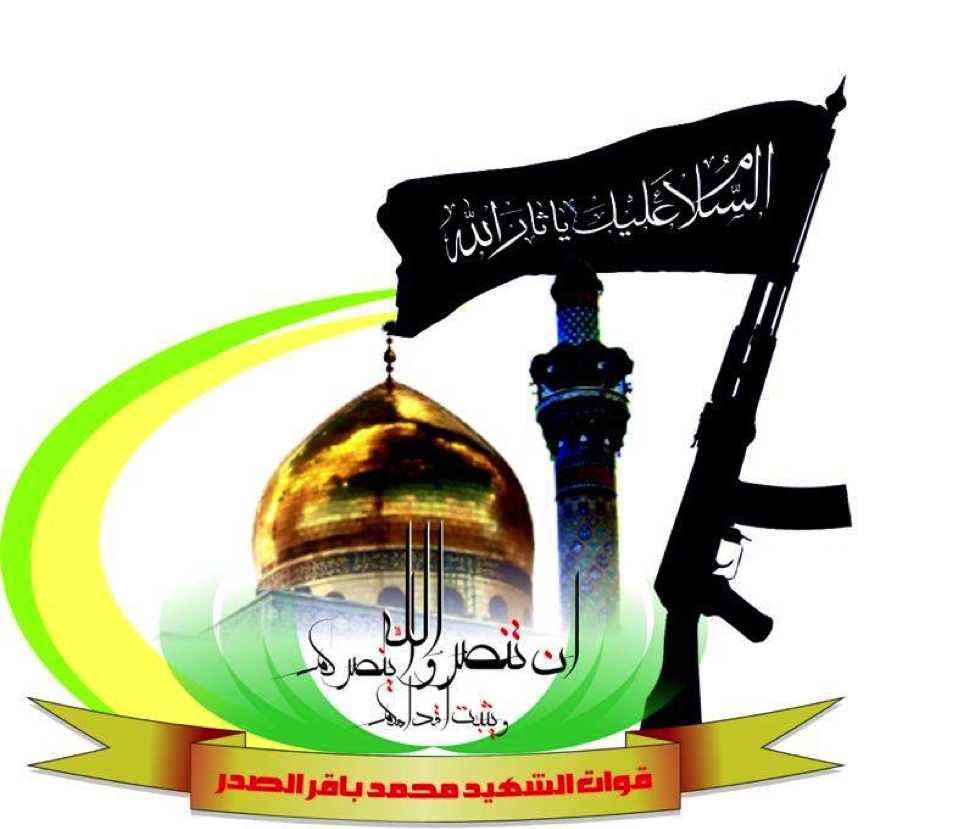
Figure 1: The official logo for the Badr Organization’s Quwet al-Shahid Muhammed Baqir al-Sadr.
On July 13, 2013, Iraq’s Iranian-backed Badr Organization announced they had forces operating in Syria. Their announcement, made on a caption on the group’s “Military Wing” official Facebook page, noted that 1,500 Badr Organization fighters had been sent to Syria. Later, on July 21st, the Badr Organization announced their first casualty, Abu Dhar al-Sa’wdi. Seven days later, it was announced another Badr Organization fighter, Abu Sajad al-Hawli, was killed in Syria and that his funeral was held in Iraq (see below).
With the official July 28th declaration of Hawli’s death came the proclamation he was a member of Quwet al-Shahid Muhammed Baqir al-Sadr (BO-QSMBS). Though, at the time, the organization was simply referred to as, Quwet al-Shahid al-Sadr. The announcement of this Badr Organization sub-grouping followed the lead of their ally, the Iranian-backed Iraqi Shia Islamist organization, Asa’ib Ahl al-Haq (AAH) and their Liwa’a Kafeel Zaynab. Liwa’a Kafeel Zaynab was setup specifically to fight in Syria as a type of AAH expeditionary force. In effect, the BO-QSMBS serves a similar role.
BO-QSMBS’s Facebook page was started on August 19, 2013 while their official YouTube station was established on February 28, 2013. In both cases the admin name of “Abo Alhassan” was used and regularly finds a mention on photos and YouTube clips posted by the group. The first original photos which were not simultaneously or previously posted on other official, semi-official, or mirror Badr Organization Facebook pages began to appear on August 25, 2013. However, most of BO-QSMBS’s causalities have been posted on the official Badr Organization Military Wing’s Facebook page, as opposed to the BO-QSMBS Facebook site.
BO-QSMBS is named after the late Grand Ayatollah Muhammed Baqir al-Sadr, the former leader of the Da’wa Movement in Iraq. Sadr, a Najaf, Iraq-based cleric, was instrumental in assisting with the creation of the Islamist ideology which would later be put into place in post-1979 revolutionary Iran by the late-Grand Ayatollah Khomeini. Sadr’s radical politics led him to be known by the name, “Khomeini of Iraq”.[1] In 1980, Sadr and his sister were both executed by the regime of Saddam Hussein.
BO-QSMBS has yet to post details about where they are fighting in Syria. However, based on their posted photographs, it is clear they are stationed in Damascus. As with other Shia Islamist organizations fighting in Syria, it is likely they have been deployed to fight on the East Ghouta front.
BO-QSMBS’s Weapons Systems
BO-QSMBS fighters utilize similar weapons systems as other Iraqi Shia organizations contributing fighters to Syria and Lebanese Hizballah. RPG-7s, PKM machine guns, SVD-style sniper rifles, Kalashnikov-pattern assault rifles, and M16-style assault rifles are the primary small-arms types featured by BO-QSMBS. M16-pattern rifles, particularly the M4 carbine model, appear to be fitted with optics, which may mean they are used in a designated marksman role. Additionally, the M16-type rifles are featured in BO-QSMBS’s posts about combat units more often than they are with other Shia militias operating in Syria.
It is possible that the group is using the Iranian-copy of the Austrian Steyr HS.50, a .50 caliber, long-range anti-material sniper rifle.[2] This rifle has been shown in the hands of many different Iraqi Shia organizations operating in Syria and Lebanese Hizballah.
As with Asa’ib Ahl al-Haq’s Liwa’a Kafeel Zaynab, the Badr Organization’s fighters in Syria are shown using pickup trucks (possibly the same pickup trucks as AAH’s men. See the videos on the Hizballah Cavalcade post Asa’ib Ahl al-Haq’s Liwa’a Kafeel Zaynab).
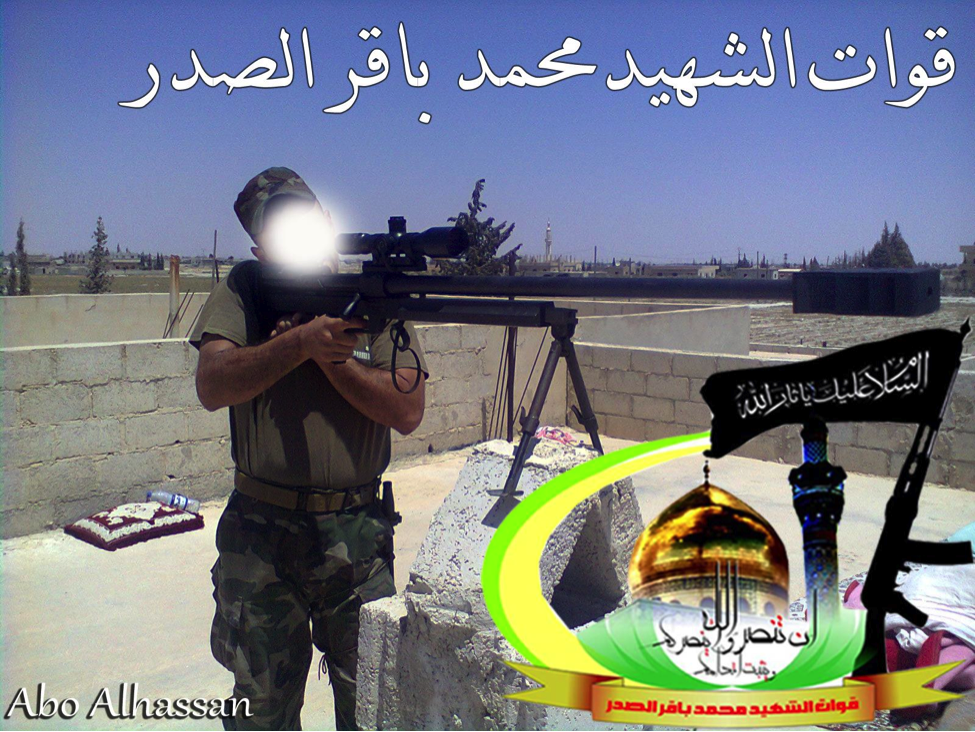
Figure 2: A BO-QSMBS fighter with an HS.50 type rifle.
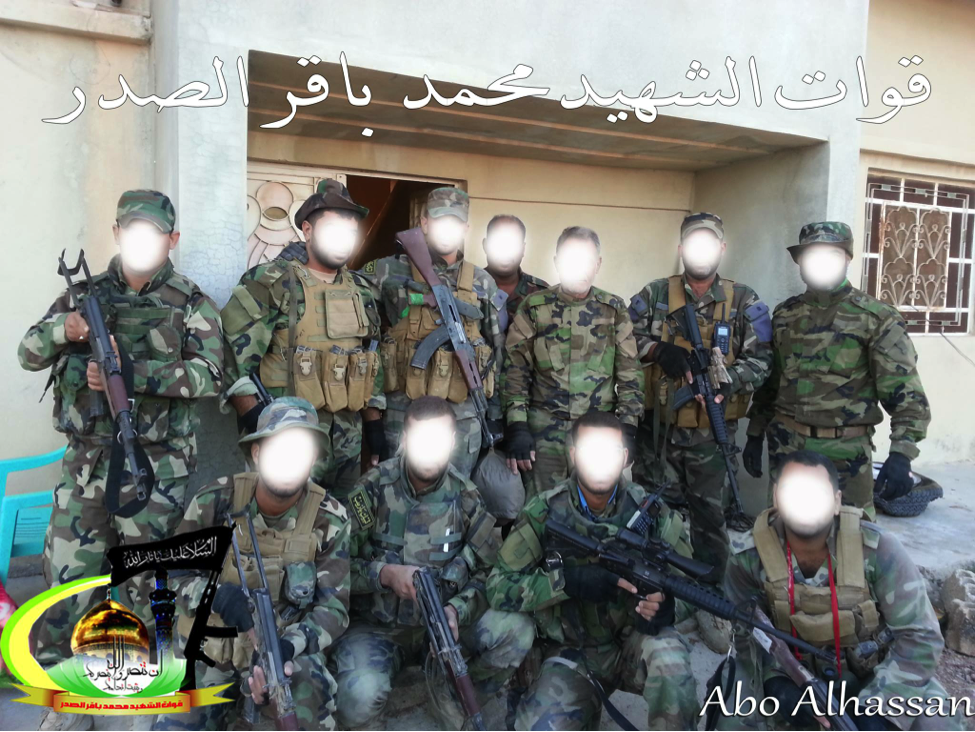
Figure 3: A combat unit of BO-QSMBS fighters. Note the 2 optics-mounted M4-style rifles.

Figure 4: Two Badr fighters pose in front of the Sayyida Zaynab shrine in Damascus. The fighter on the right is holding an M4-type carbine (the same pictured in the photo above).
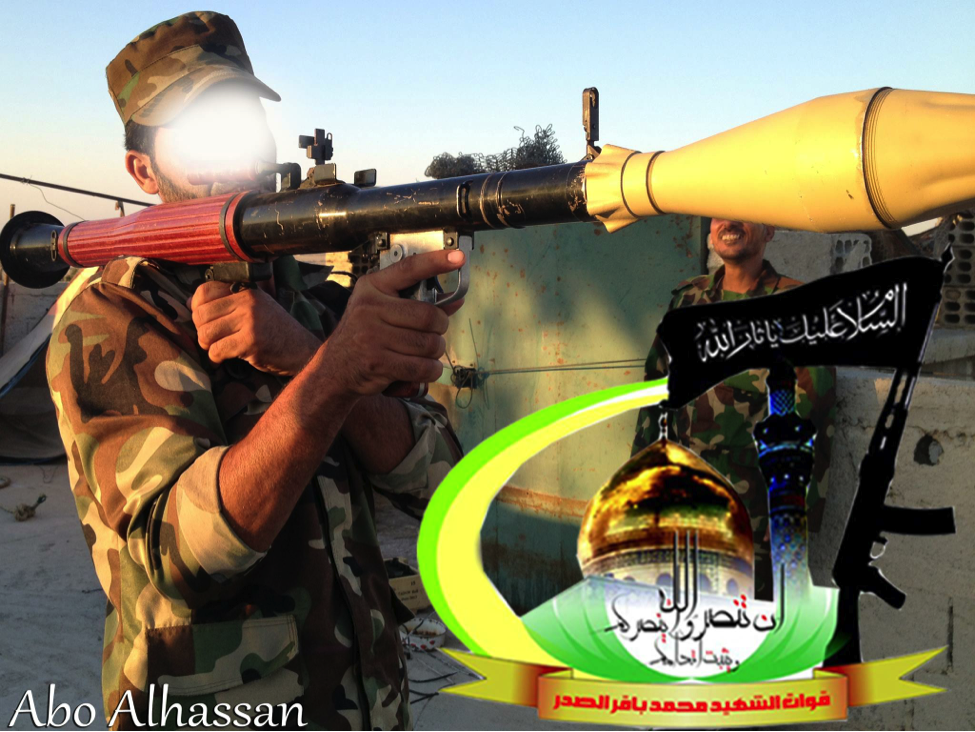
Figure 5: A BO-QSMBS fighter with an RPG-7.
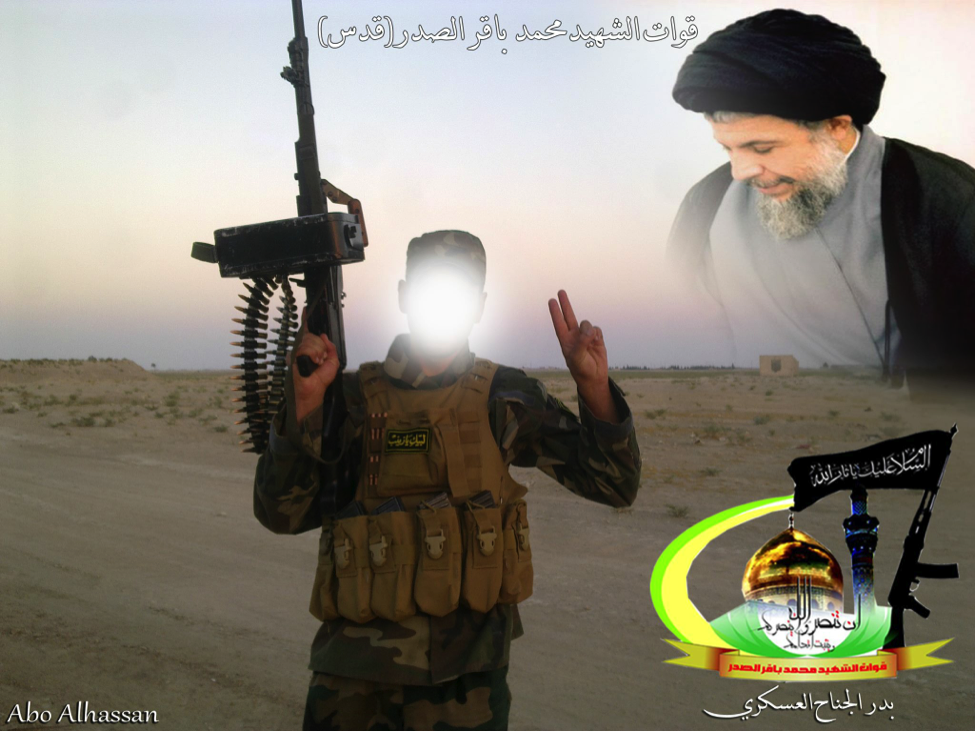
Figure 6: A BO-QSMBS fighter holds a PKM machine gun in aloft as the late Grand Ayatollah Muhammed Baqir al-Sadr looks down upon him.
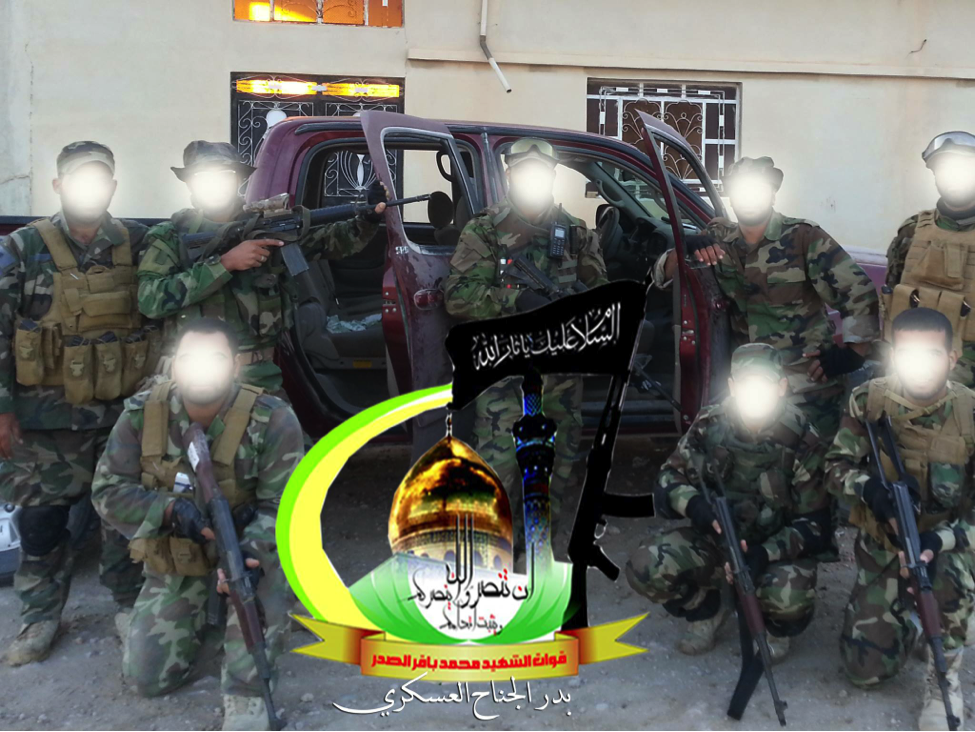
Figure 7: Badr fighters pose in front of a red pickup truck.
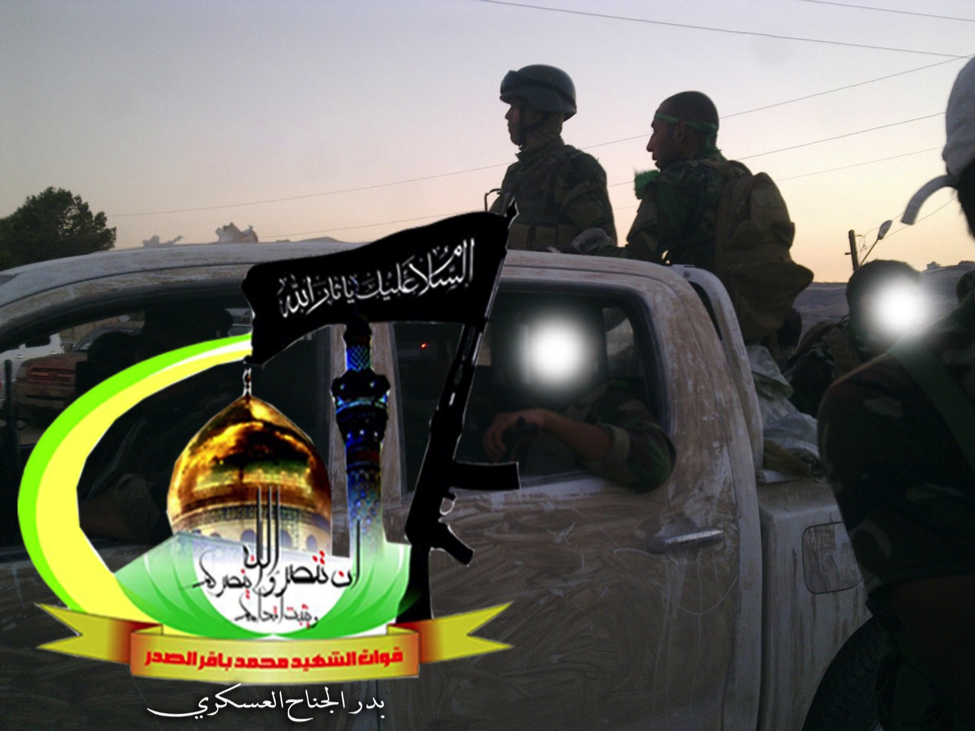
Figure 8: Badr fighters ride into battle in a mud coated white pickup truck.
BO-QSMBS’s Messaging to the Shia
BO-QSMBS has posted photographs attempting to show that Shia Islamic clerics have joined them in their fight inside Syria. The effect of these images may be to show the broader Shia community that there is broad religious support for the group’s actions in Syria.
The interconnectedness between the Badr Organization, Shia Islamist Iran and Lebanese Hizballah is also a regular feature on their social media webpages. One BO-QSMBS photo claimed to show Lebanese Hizballah fighter, Mahdi Yaghi and a fighter from the BO-QSMBS. Photos of Iranian Supreme Leader Ali Khamenei and of Iranian Islamic Revolutionary Guard Corps commander, Qassem Suleimani are regular features on BO-QSMBS’s Facebook page.
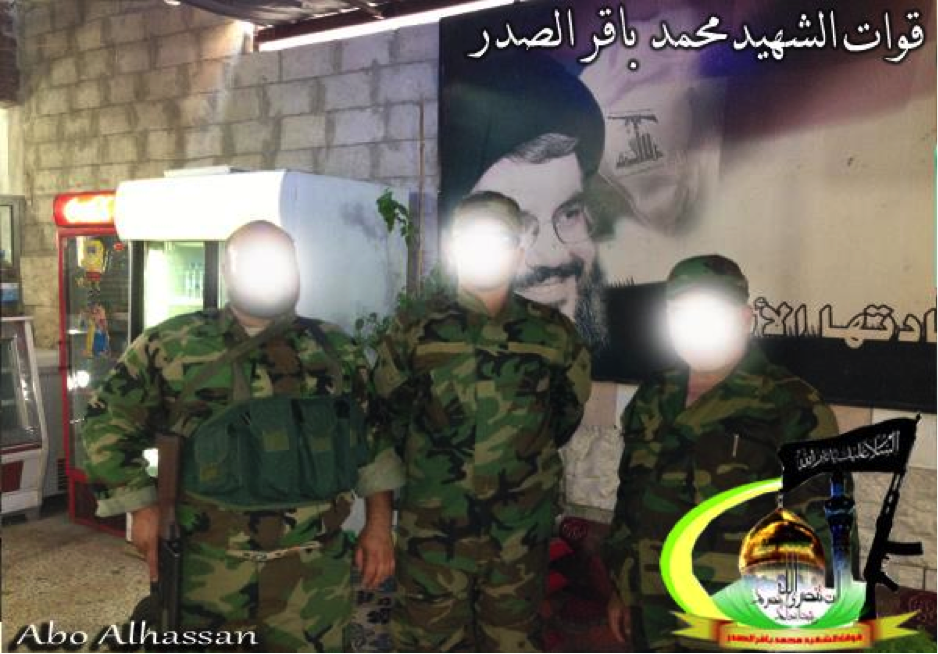
Figure 9: BO-QSMBS fighters stand in front of soda machines and a poster featuring Lebanese Hizballah leader, Sayyid Hassan Nasrallah.
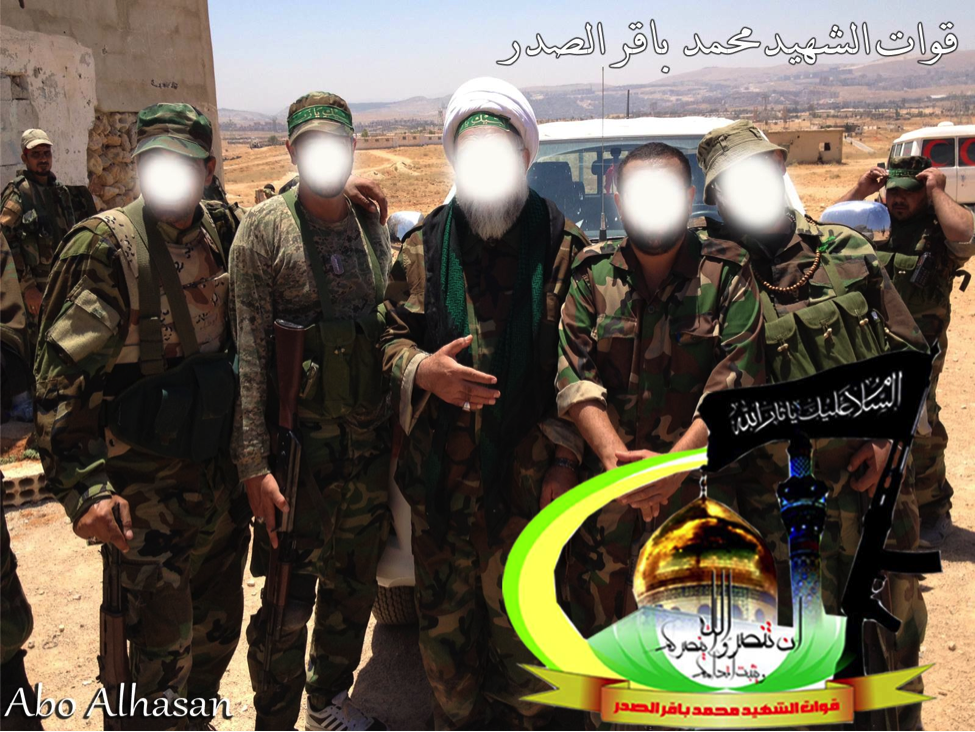
Figure 10: A white turban wearing Shia cleric wearing combat fatigues stands in the center of BO-QSMBS fighters.

Figure 11: A black turbaned (denoting that he is descended from the Islamic Prophet Muhammed) Shia Islamic cleric stands in combat fatigues with Badr fighters.
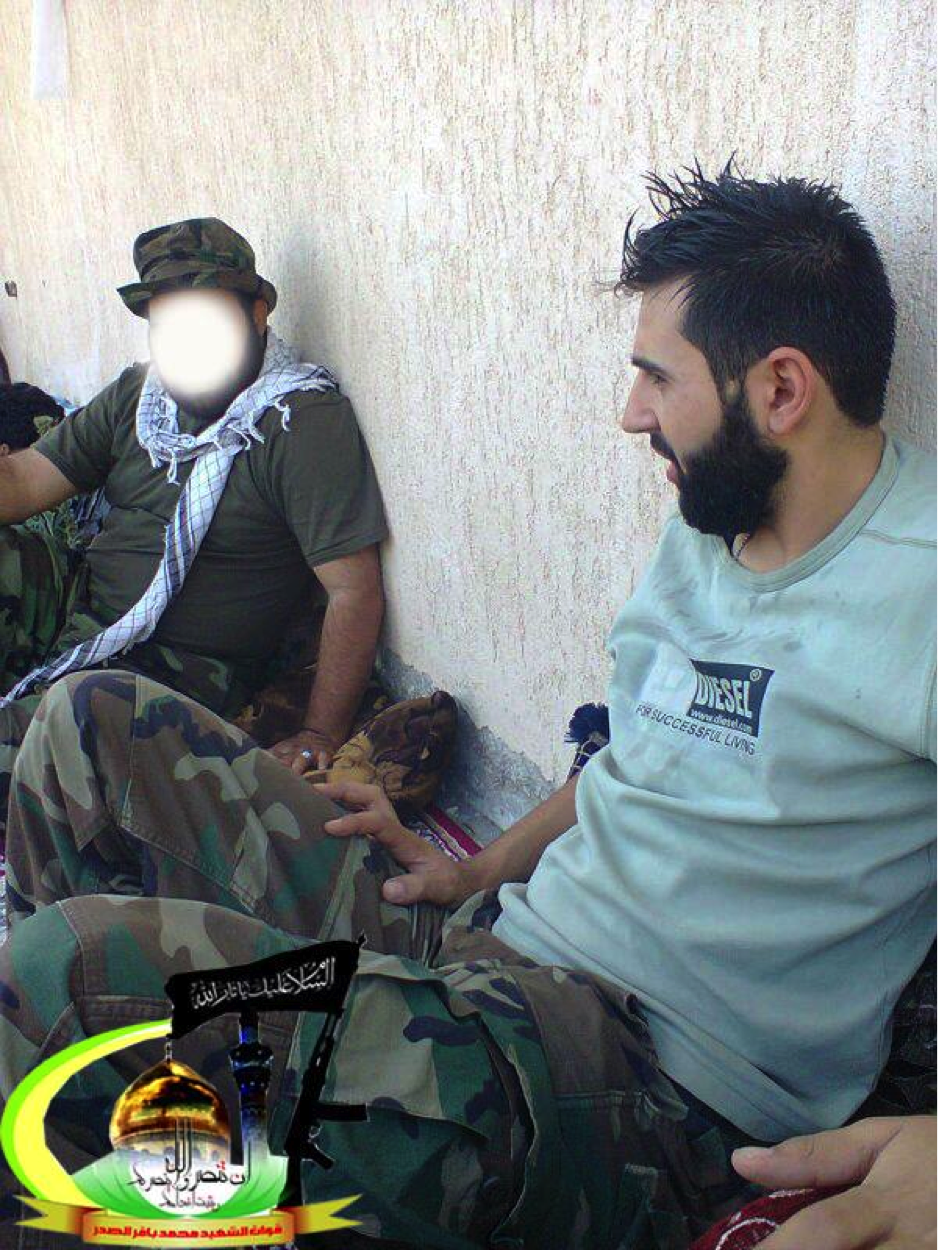
Figure 12: BO-QSMBS claims this photo shows one of their fighters and Lebanese Hizballah’s Mahdi Yaghi. Yaghi was announced killed in Syria in October, 2013.
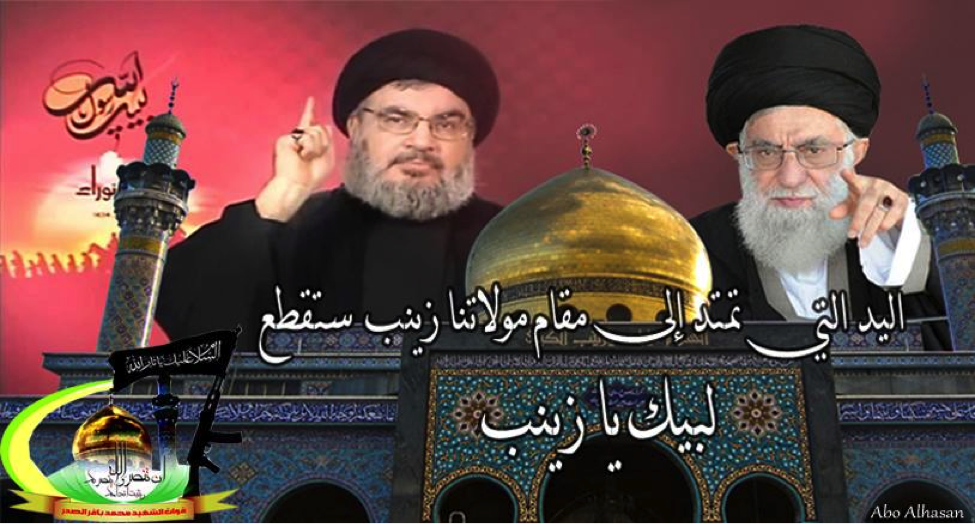
Figure 13: Lebanese Hizballah leader Sayyid Hassan Nasrallah and Iranian Surpreme Leader Ayatollah Khamenei are pictured behind the Sayyida Zaynab shrine in Damascus.
Videos Released by the Group
A number of videos have been released by the BO-QSMBS. However, most of them are of poor quality and follow an established pattern seen with other Shia Islamist militias (all Iranian-backed) in Syria. Most of these videos utilize older footage previously released by other groups. In October, the footage of Abu Sajad al-Hawli was released by the Badr Organization. The video was placed on YouTube, Facebook, and official Badr websites.
[1] Patrick Cockburn, Muqtada Al-Sadr and the Battle for the Future of Iraq, (New York: Scribner, 2008), Pp. 27-35. [2] See: https://www.thefirearmblog.com/blog/2012/07/13/steyr-hs-50-in-iran-counterfeit/
Hizballah Cavalcade: Liwa’a al-Imam al-Hasan al-Mujtaba: A Shia Militia Fighting in Rif Dimashq/Ghouta
NOTE: For prior parts in the Hizballah Cavalcade series you can view an archive of it all here.
—
Liwa’a al-Imam al-Hasan al-Mujtaba: A Shia Militia Fighting in Rif Dimashq/Ghouta
By Phillip Smyth ([email protected])
Click here for a PDF version of this post
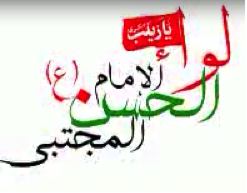
Figure 1: A vidcap of the LIHM’s logo. The symbol reads: “Liwa’a al-Imam al-Hasan al-Mujtaba. A red flag reading, “Ya Zaynab”, a reference to what Shia militias in Syria claim to be fighting for (e.g. the “defense of [the] Sayyida Zaynab” shrine in Damascus) flies on the alif in Liwa’a.
Throughout the summer of 2013, a collection of new Shia militias were announced to be fighting in Syria via social media. On July 23rd, one of these groups was announced on Facebook, carrying the name of Liwa’a al-Imam al-Hasan al-Mujtaba-Sariyya Shahid Ahmed Kayara (The Brigade of Imam Hasan the Chosen-The Martyr Ahmed Kayara Unit or LIHM). LIHM purports to operate in rural and urban sections outside of the city of Damascus. According to material the group has published on social media, the militia has been particularly deployed to defend the Damascus Airport road near Shebaa, in the southeast of Damascus.
The LIHM’s name references Shia Islam’s 2nd Imam, Hasan ibn Ali, who is often referred to in Shia literature as, “The Chosen”. Unlike other Shia militias operating in Syria, LIHM appears to have named sub-divisions of the organization and seems to be more open with announcing the establishment of these groups. Thus, based on social media posts by the group, it can be established that LIHM is split into smaller battalions with differing tasks. This is markedly different from how other Shi’a militias have presented themselves on social media. While it is possible they too have smaller units, usually the names of these groups and the fighters in them are rarely publicized.
Generally, LIHM’s claimed units only post photographs featuring 5-8 fighters. It is unknown if these combat units are limited to only that amount or if they are comprised of larger numbers. LIHM has also claimed to have its own mortar and rocket unit. Other infantry units are called The Abu Hamr Battalion and there is a so-called “Rapid Intervention” unit. The latter is called The Ashtar Battalion (Kata’ib al-Ashtar). It is likely this grouping was named after Malik al-Ashtar, “a long-standing and dedicated follower of the Imam [‘Ali].”[1] The existence of most of these units was announced in September 2013.

Figure 2: Ahmed Kayara (left holding the SVD-type sniper rifle) stands with other Shi’a militia commanders.
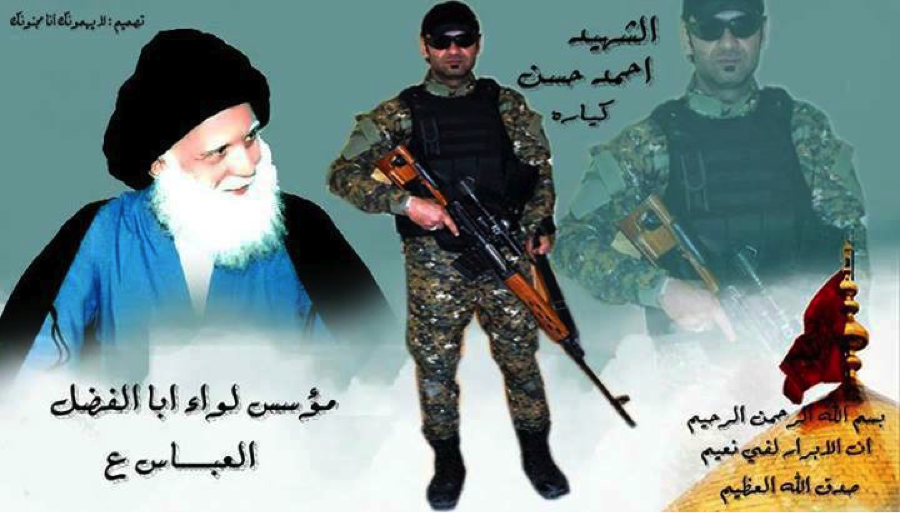
Figure 3: A martyrdom poster featuring Kayara and the late Iraqi Shia Islamist Grand Ayatollah Muhammed Sadiq al-Sadr.
Another one of these subdivisions is Sariyya Shahid Ahmed Kayara or The Martyr Ahmed Kayara Unit. In fact, LIHM’s official Facebook page includes this subdivision in its title. It is claimed that Hajji Thamer leads this group. Ahmed Hasan Kayara, also known by his nom de guerre, Abu Hamza, was one of the first publicly announced dead from the Damascus-based Shia militia, Liwa’a Abu Fadl al-Abbas. Videos of him in combat could be found online in early 2013. It was slowly established on social media circles that he was held a command position in Liwa’a Abu Fadl al-Abbas.
In late May and early June, comments on Kata’ib Sayyid al-Shuhada’s (KSS) original private Facebook group (before it was closed) claimed that some of the killed KSS members in Syria had been part of the Martyr Ahmed Kayara Unit. However, claims of the existence of a similarly named fighting group were only presented by the Facebook supporters of the different Shia militia groups, not by official administrators. Only with the creation of the LIHM’s Facebook were the militia and this particular subunit’s existence formally established.
Unlike other Shia militias operating inside Syria, LIHM has not posted any photographic material showing a link to Iran. However, when basic details regarding their fallen fighters are analyzed, it is clear these militiamen came from an Iranian-backed Iraq-based front group known occasionally as Harakat Nujaba. It has been established that Harakat Nujaba is a front for the Iranian-backed Asa’ib Ahl al-Haq and Kata’ib Hizballah.[2] This front organization was first analyzed on Hizballah Cavalcade when it announced that it was supplying fighters to Liwa’a ‘Ammar Ibn Yasir, a Shia militia which claims to operate in Aleppo. The reasons for excluding the Iranian Revolution (1979) themed material may be part of an effort to create more support for Shia militia operations in Syria along a broader Pan-Shia line.

Figure 4: LIHM’s “Rapid Intervention” unit, The Ashtar Battalion.
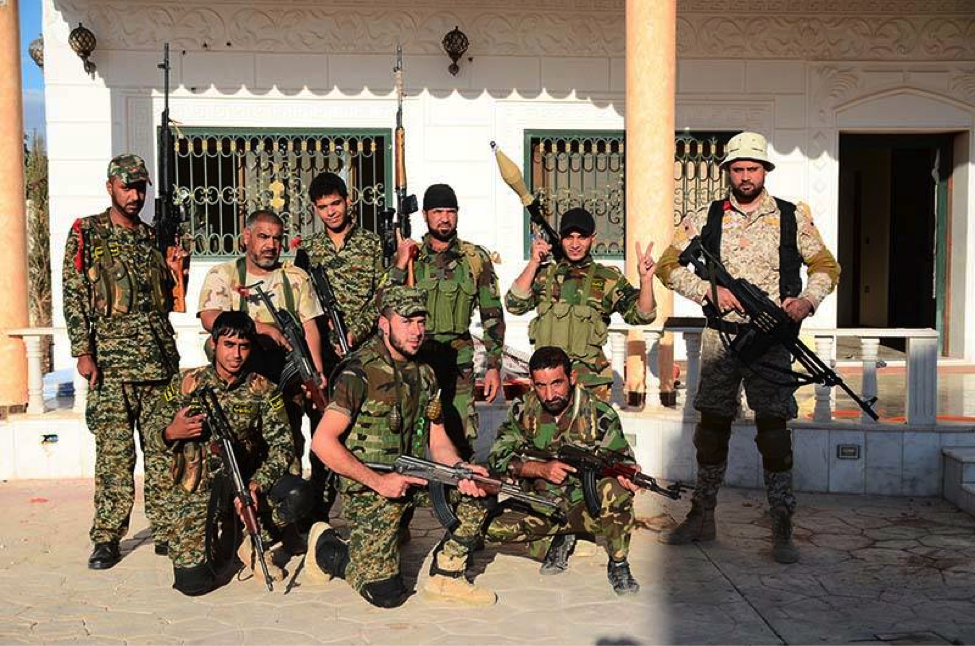
Figure 5: LIHM’s “Abu Hamr Batallion” (Kata’ib Abu Hamr) which claims it, “protects the holy shrines”.
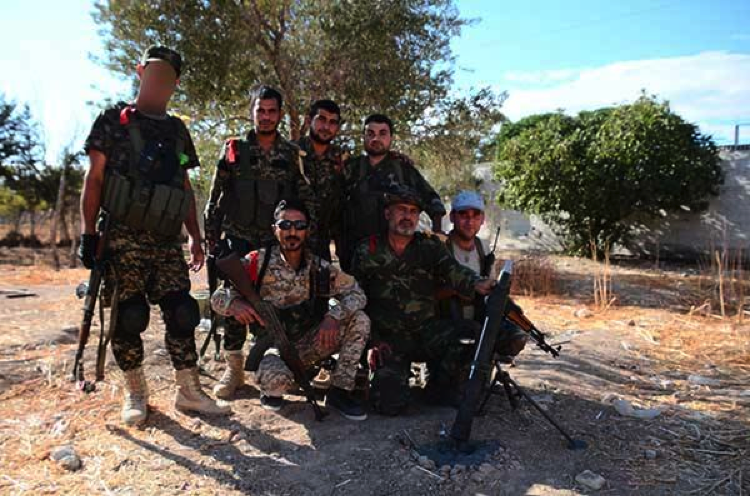
Figure 6: LIHM claims this is their “Mortar and Rocket Battalion”.
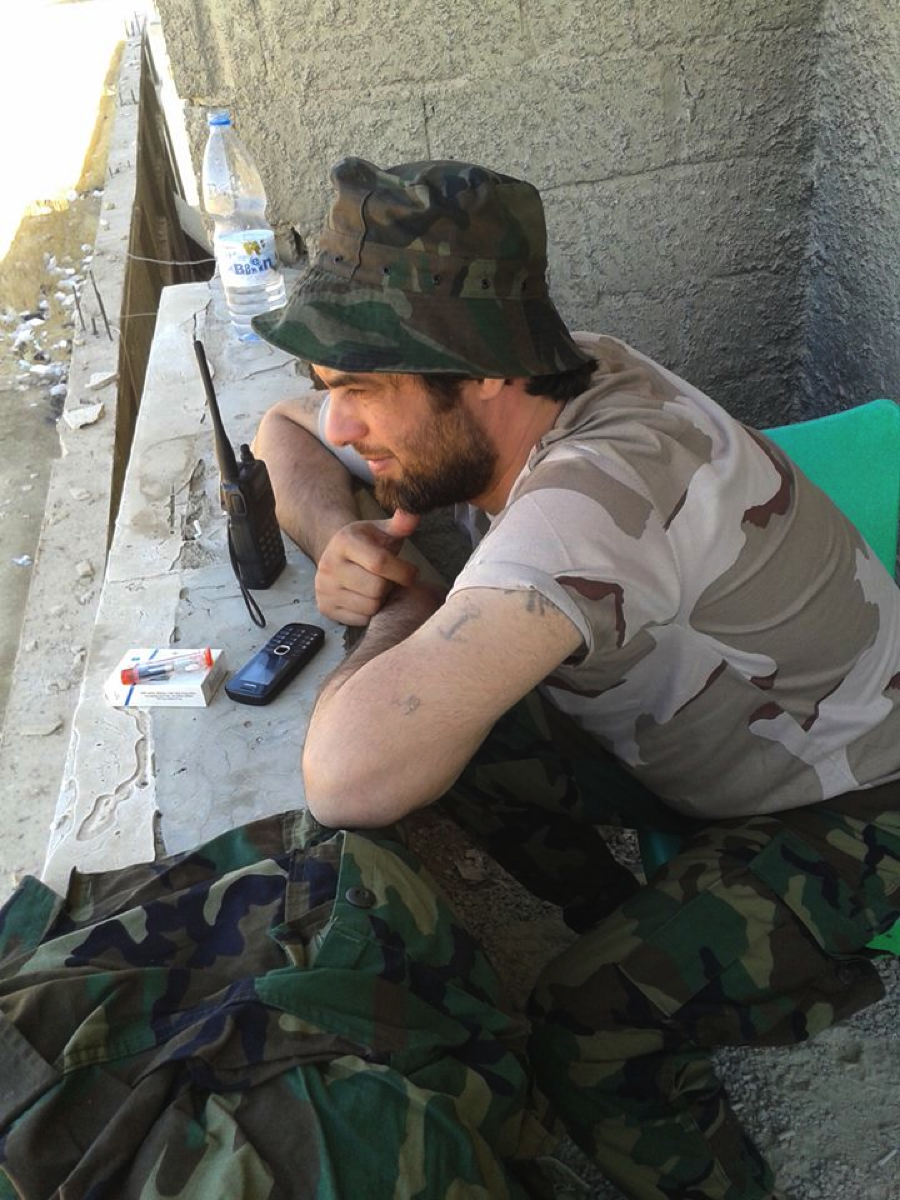
Figure 7: Haji Thamer, the commander of LIHM’s Martyr Ahmed Kayara Unit.

Figure 8: An LIHM fighter by the name of Saif al-Salam sits wrapped in a blanket near a sandbagged position.
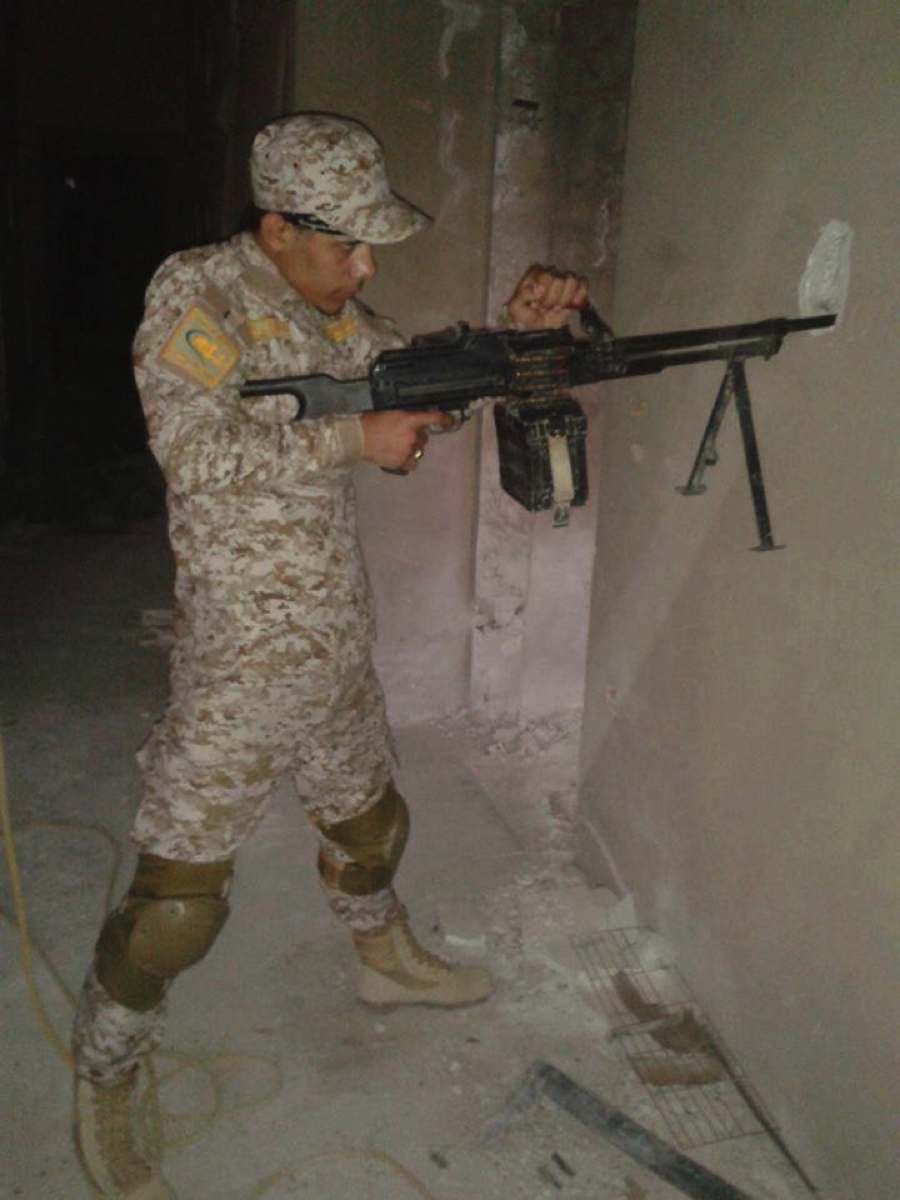
Figure 9: Sajad al-Iraqi, reportedly a member of the LIHM’s Martyr Ahmed Kayara Unit, takes aim with a PKM-type machine gun. Note the distinctive shoulder patch.
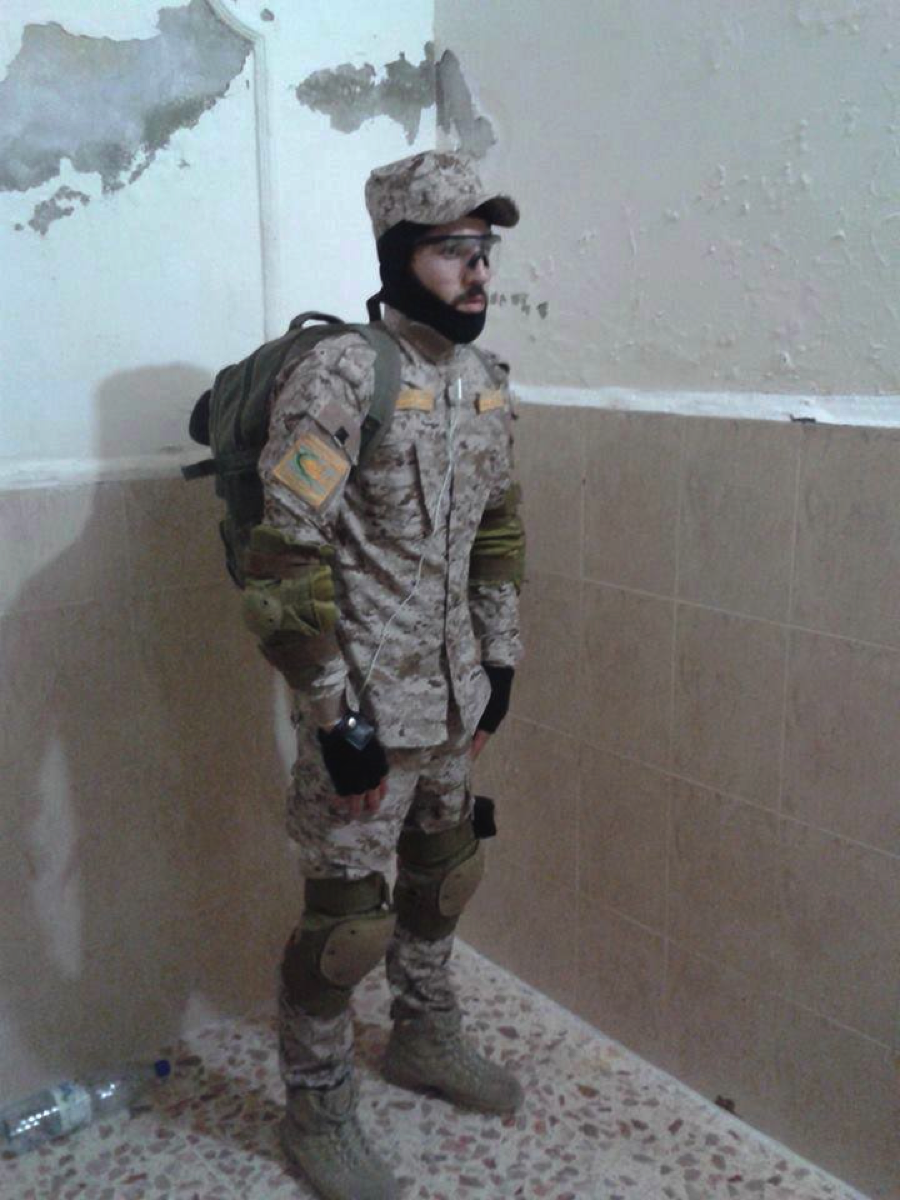
Figure 10: Abu Muqtada al-Baghdadi, another LIHM militiaman. Note the distinctive shoulder patch.
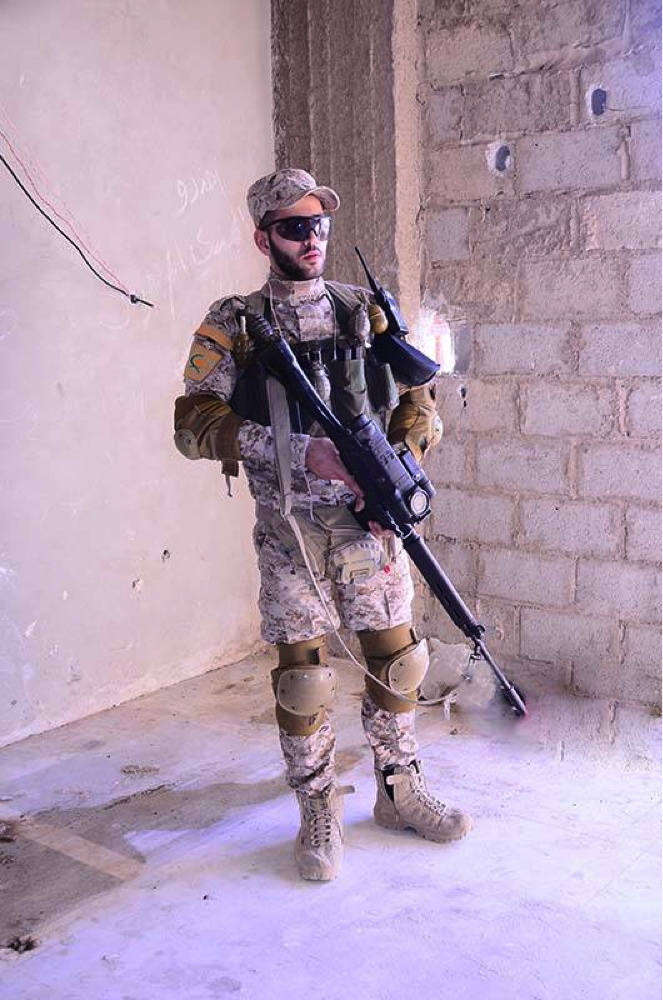
Figure 11: LIHM’s Hashim al-Baghdadi holds a FAL-type rifle mounted with optics. Note the distinctive shoulder patch.
LIHM’s Martyrs
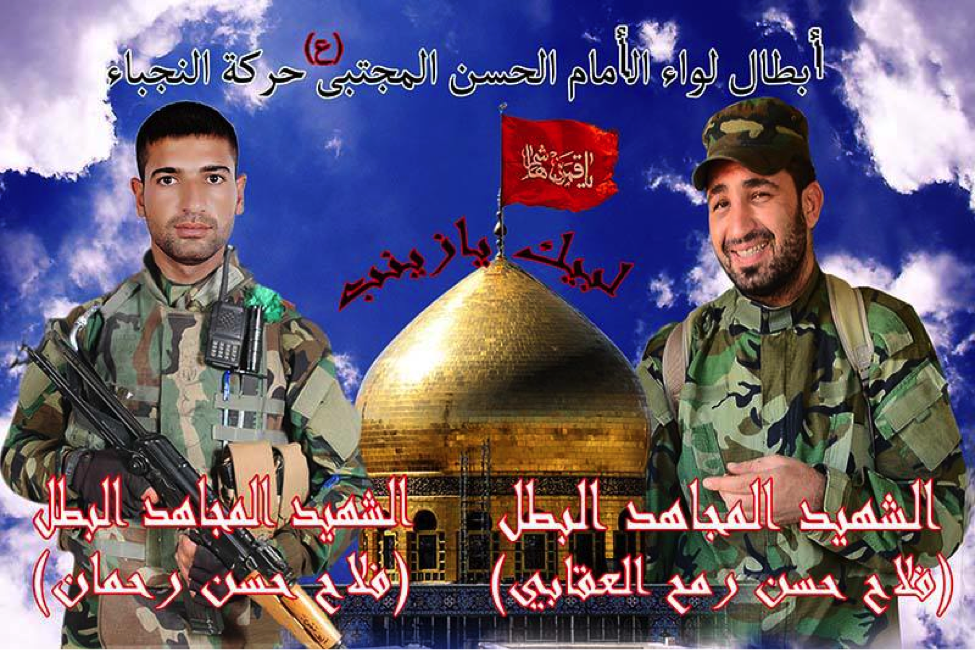
Figure 12: Fala’ Hasan Rahman (left) and Fala’ Hasan Rama’ al-‘Aqabi (right) are pictured in a joint martyrdom poster. In the center sits the golden dome of the Sayyida Zaynab Shrine in Damascus. This and other posters identify them as members of Harakat Nujaba.
Name: Fala’ Hasan Rama’ al-‘Aqabi
Death Announced: September 2, 2013
Notes: ‘Aqabi’s was listed as a member of the Harakat Nujaba. Harakat Nujaba is a front set-up by Kata’ib Hizballah and Asa’ib Ahl al-Haq to funnel fighters from Iraq to Syria. The group is the main front which supplies fighters to Liwa’a Ammar Ibn Yasir.
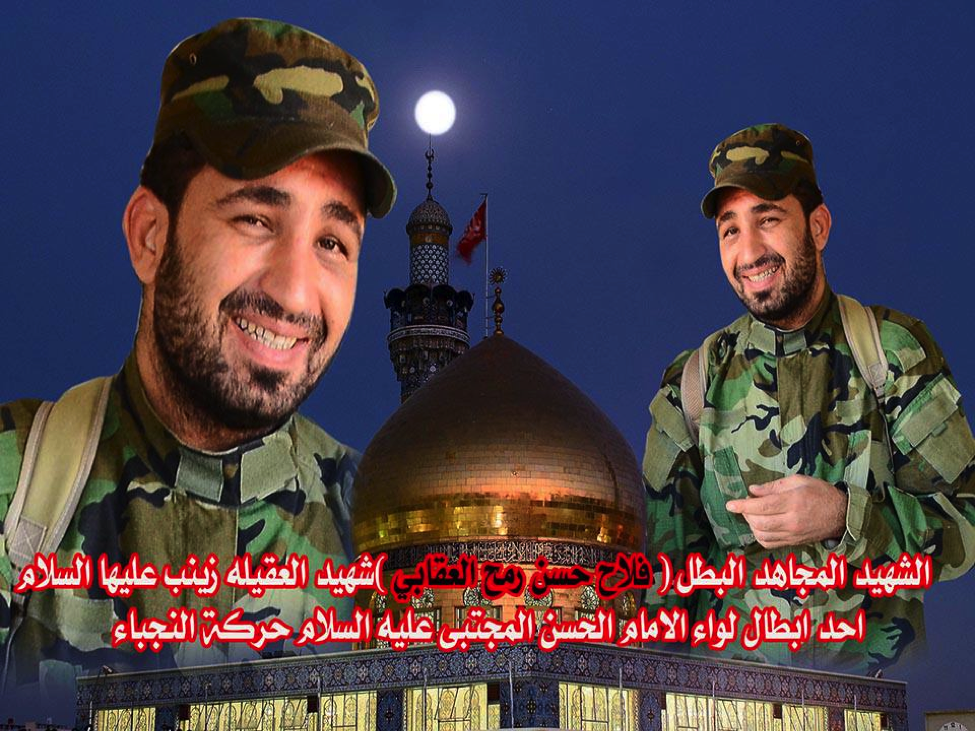
Name: Fala’ Hasan Rahman
Death Announced: September 3, 2013
Notes: Rahman was listed as a member of Harakat Nujaba.
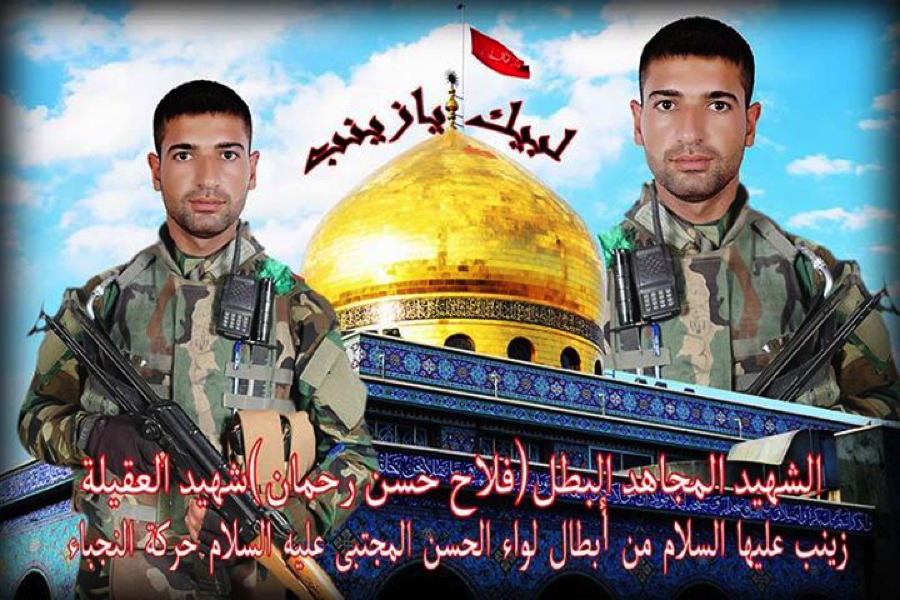
Combat Videos
LIHM’s fighters have been featured in a number of videos uploaded to YouTube and Facebook. In one of the videos, an interviewer claims the group is fighting, “irhab al-kafir” or “infidel terrorism”. Shia identity is also reinforced with the singing of an ad hoc nashid and chants which praise historic and symbolic Shia leaders like Abbas and Zaynab.
Like other Shia militias in Syria, these videos often feature videos demonstrating the group’s acumen when it comes to deploying snipers. One interesting feature of these clips is to show LIHM fighters firing a round and then showing a split screen utilizing footage of Syrian rebels being shot and killed. Additionally, common Syria-oriented Shia militia songs used by other Shia militias and some older footage from Liwa’a Abu Fadl al-Abbas (particularly video of Ahmed Kayara) has been repackaged in these videos.
[1] Reza Shah-Kazemi, “A Sacred Conception of Justice: Imam ‘Ali’s Letter to Malik al-Ashtar” in M. Ali Lakhani, The Sacred Foundations of Justice in Islam: The Teachings of ʻAlī Ibn Abī Ṭālib, (North Vancouver, B.C.: Sacred Web Publishing, 2006), P.64. [2] See: https://www.reuters.com/article/2013/08/30/us-syria-crisis-iraq-idUSBRE97T0XH20130830
